
upload photo | donate | calendar
 |
my profile |
register |
faq |
search upload photo | donate | calendar |
|
|
#1 |
|
User
Join Date: Oct 2007
Location: Maryland
Posts: 340
Thanks: 43
Thanked 107 Times in 51 Posts
|
For whatever reason, I've never had much interest in French firearms; probably because most of them are in unique calibers. But two have always interested me, the FAMAS and the PA15. I've accepted that I'll never be able to spend the dough on a FAMAS but I have been on the lookout for a PA15 for many years. I've found them for sale here and there but I've never been able to find one just the way I want it.....until recently. In fact, it was better then I had expected to find; so much so that I'll probably never shoot it because I don't think it has been since it left the factory. I like this pistol because of the rotating barrel and the fact that it was the first to hold more rounds than the High Power, marking the start of the era of 15 round magazines. Partly, I'm posting this simply to show it off. It took a long time to find and it looks so nice I want to share it. But mostly, I'm posting it because, while the are lots of pictures of the PA15 online, there aren't a lot showing some of the details I wondered about. So let's see what we've got.
First off is the box: 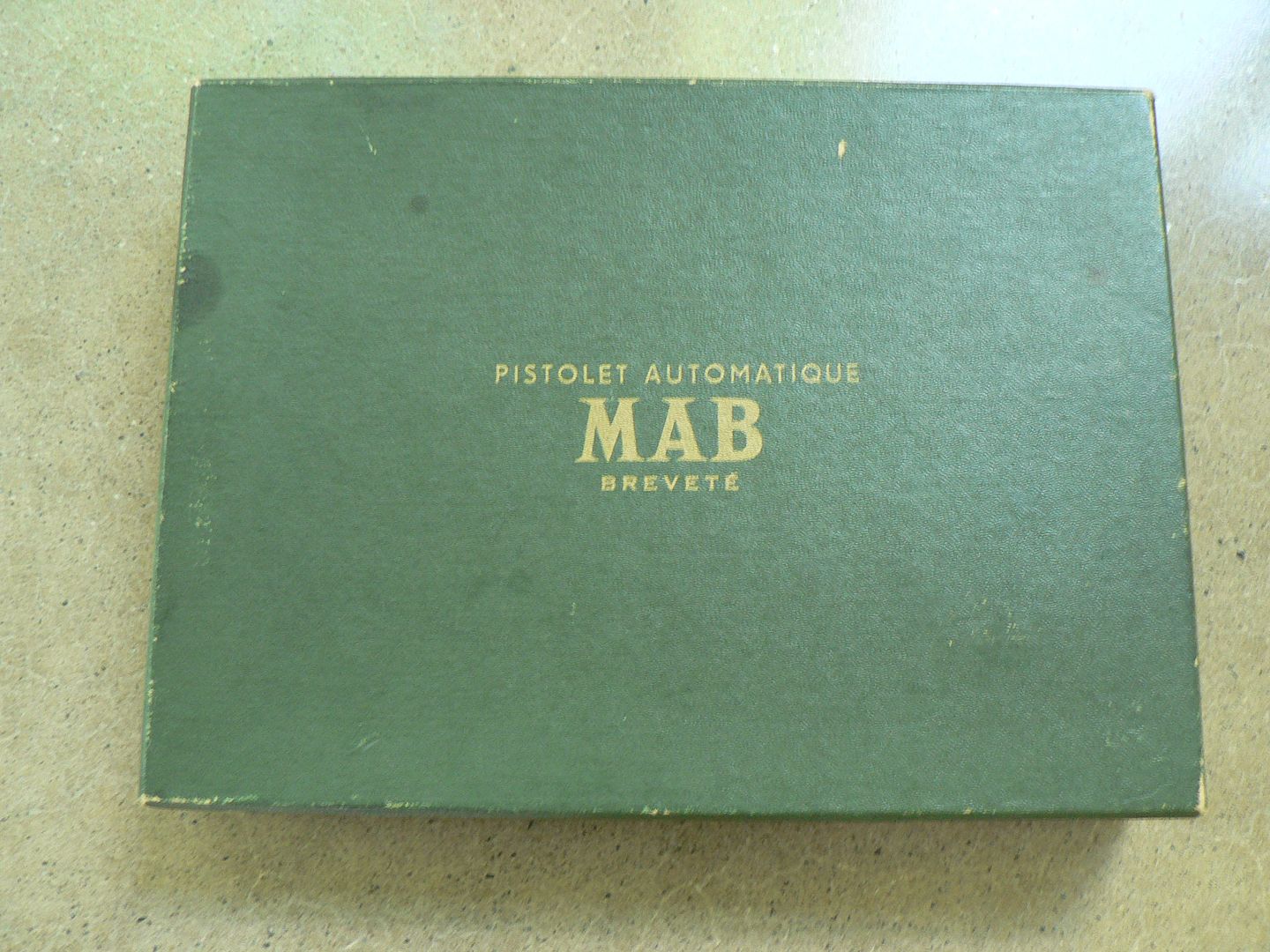 It's not in the best of shape but it's not in bad shape either. There is something nice about these old cardboard boxes. They aren't as sturdy as the plastic cases so common nowadays but they have a certain elegance and civility about them. You could leave it on a shelf in your den and it wouldn't look the even the slightest bit out of place. On the bottom of the box is a sticker bearing the pistol's serial number: 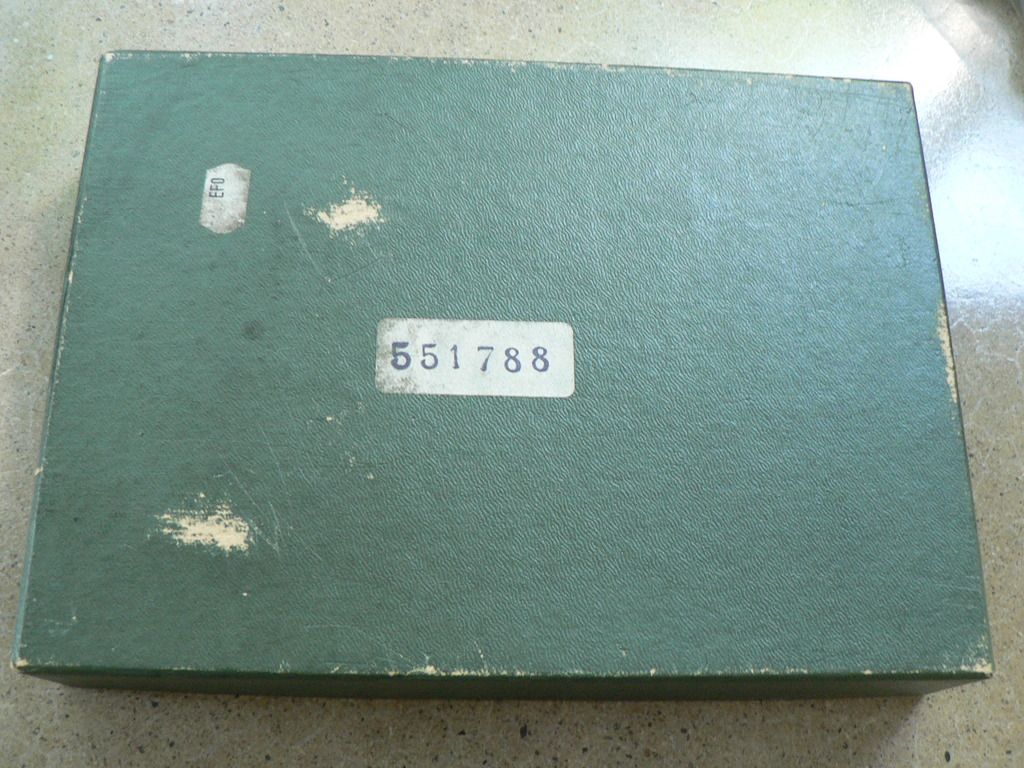 Open it up and we start to get into the good stuff:  I really think the plastic bags are factory. The spare magazine is still covered in a thin film of cosmoline and there are no grease marks anywhere on the cardboard inside the box. I don't really see a reason to remove the magazine from the bag. Maybe it never has been. Also seen is the cheepie cleaning brush that all pistols seem to come with. Does anyone really use those things? In the lower left of the picture is the inspection certificate. It basically states that the pistol has past all necessary tests and is approved for sale. Next to that is the "manual". I place that in quotes because it is really more of a catalog than anything else. It shows all of the pistols that MAB sold at the time and it tells you how to use the sights and some good safety practices but nowhere does it actually tell you how to operate the pistol or disassemble it. The closest you get is an exploded view drawing. There is no paperwork missing, that's just all there is. It's French. I think that the pistols imported by Howco had a manual that was written here and inserted into the box but this one was made for domestic consumption (or at most continental Europe) so it lacks the Howco import stamp and the "Made in France" rollmark. I won't bore you with all of them but let's take a look at some of the manual/catalog pages. Page two says that MAB is presenting a new 9MM pistol in both 8 and 15 round capacities. They are the same pistol except that one has a thinner grip with a single stack 8 round magazine: 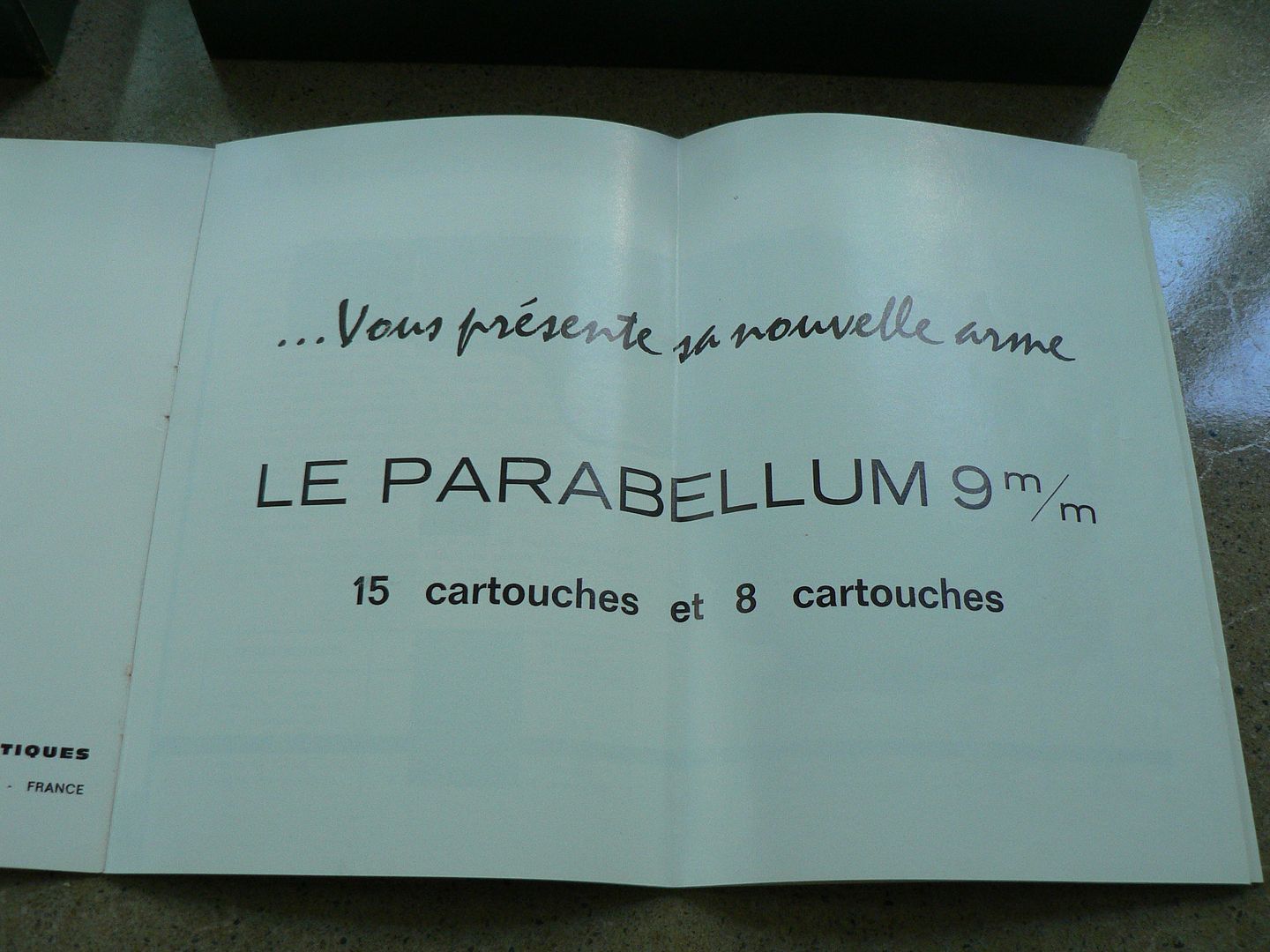 A little farther in and you find an introduction to the P8 and P15 pistols along with some statistics about them: 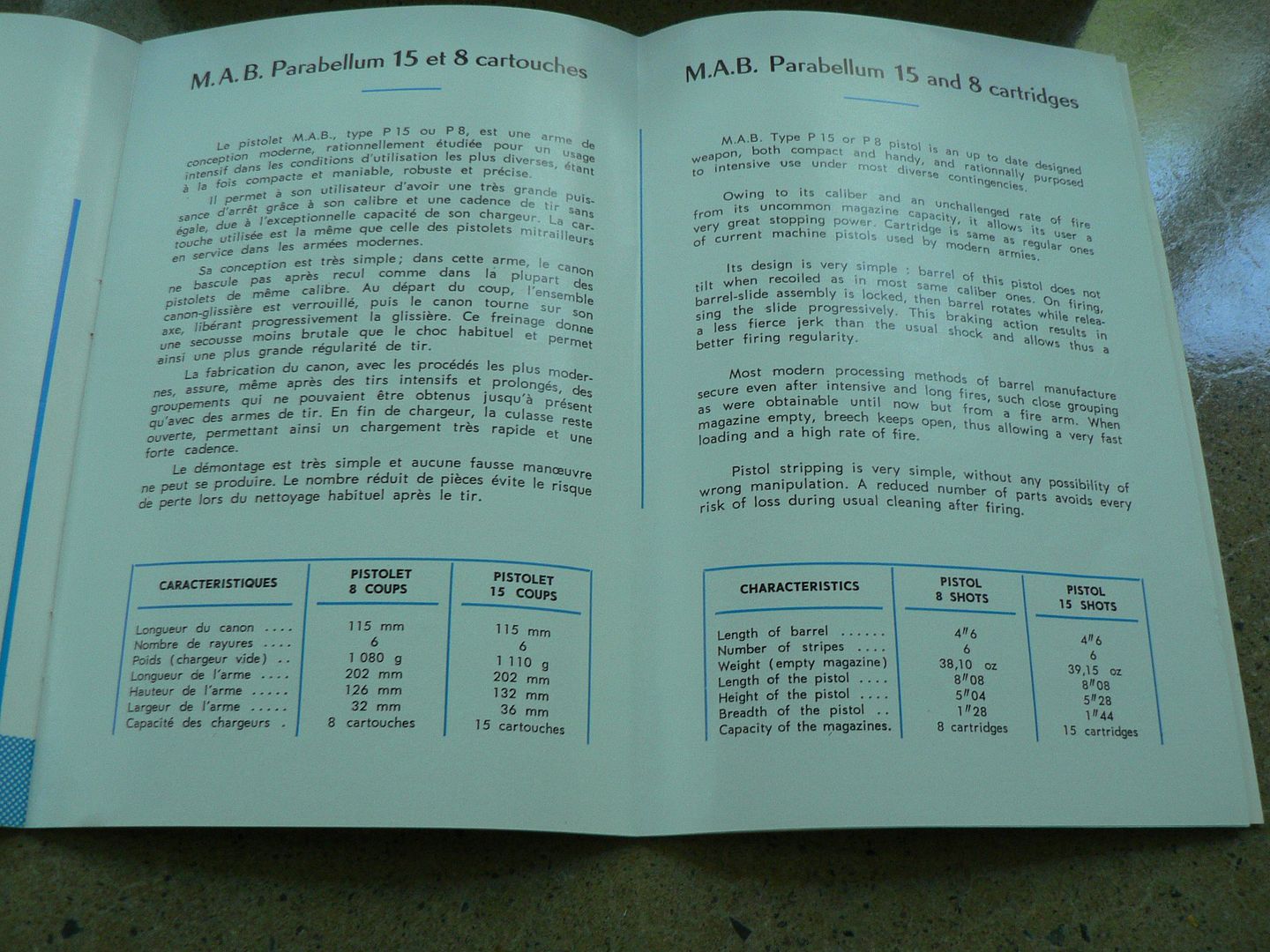 This is the closest they're going to give you with regards to disassembly: 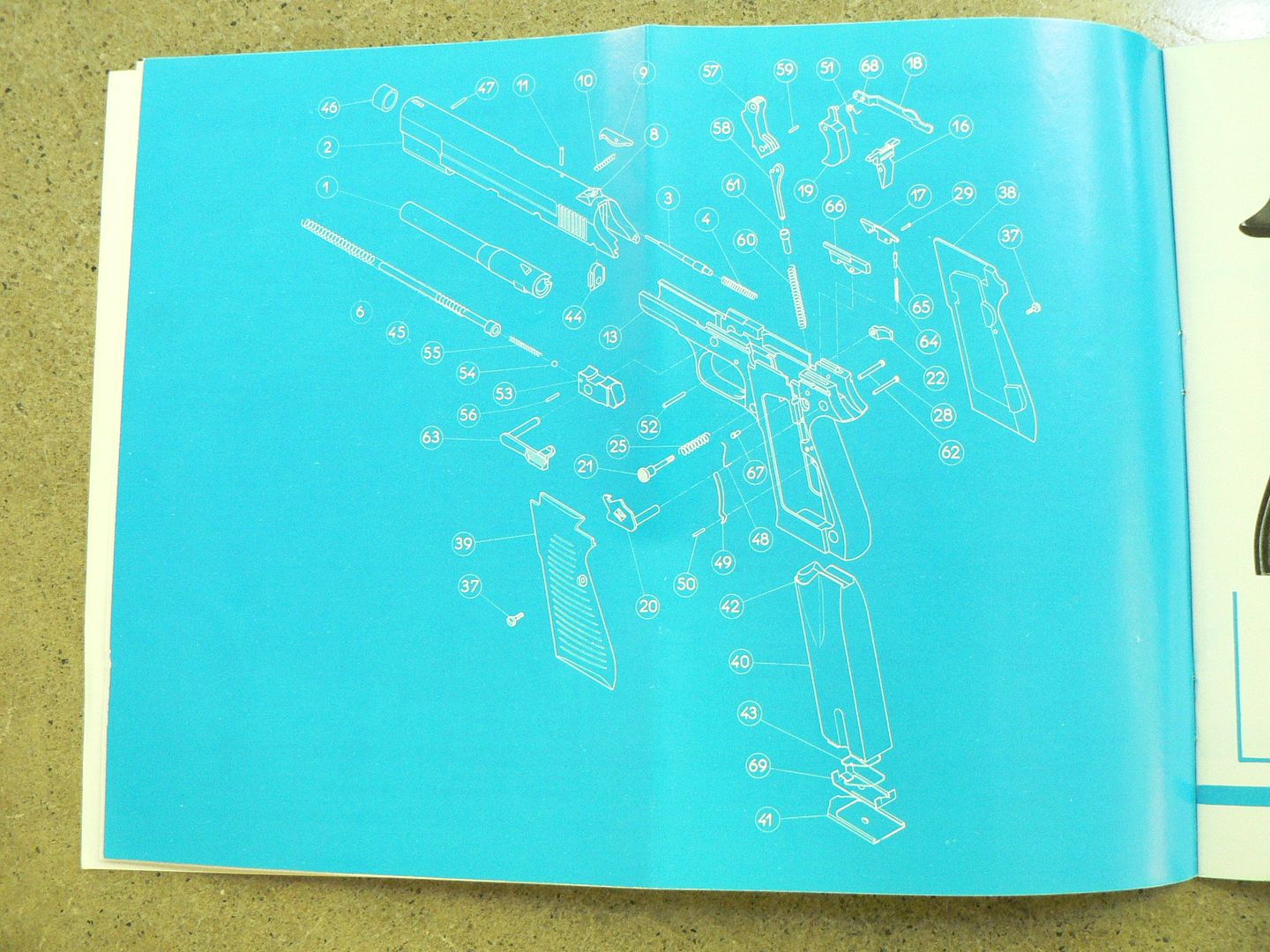 At least they give you a pretty picture and an index of parts shown in the exploded drawing: 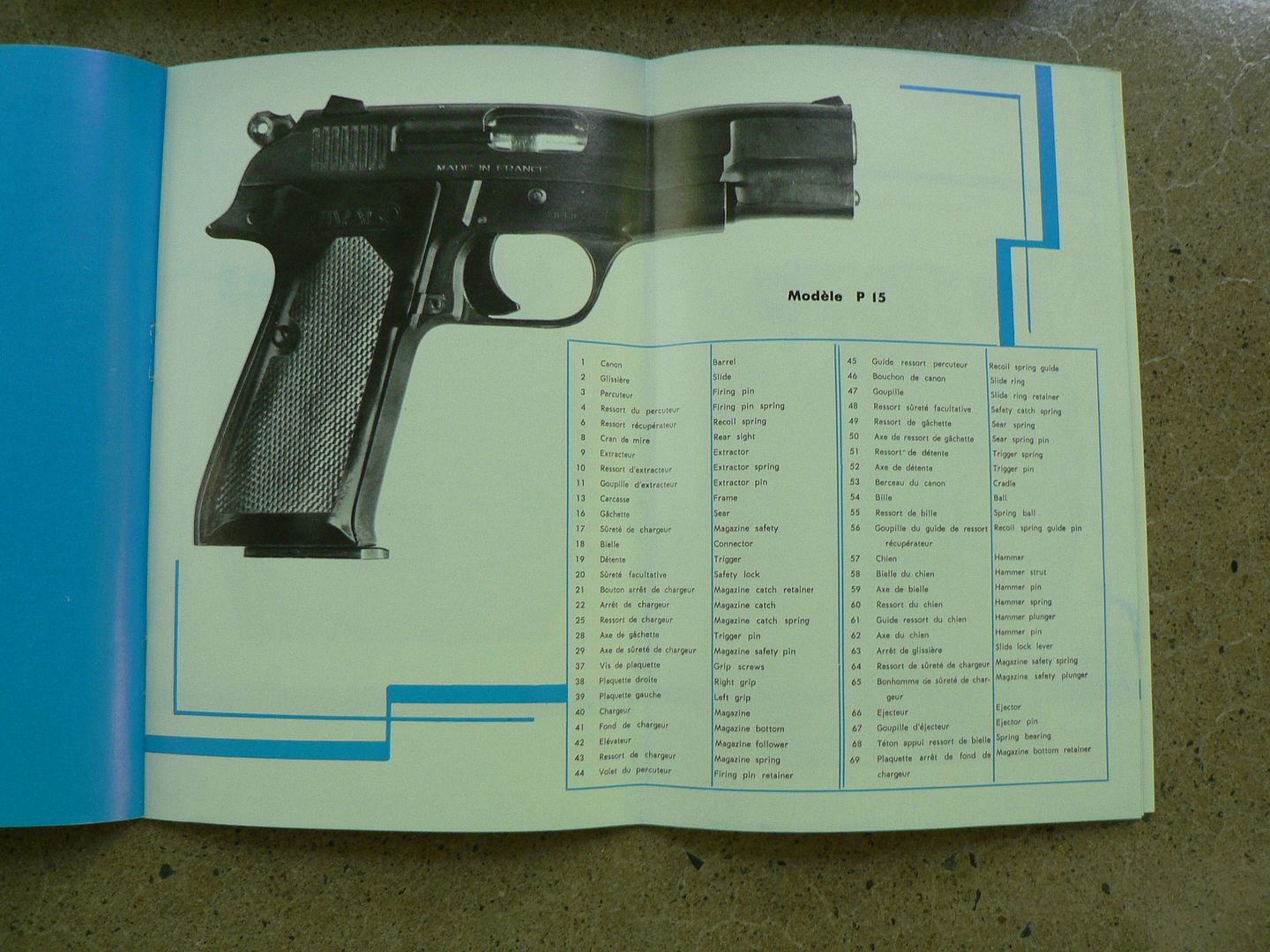 Skipping past the pages showing holster options and other models (P8, Model D, Model A and*Model R22) we get to sight usage diagrams:  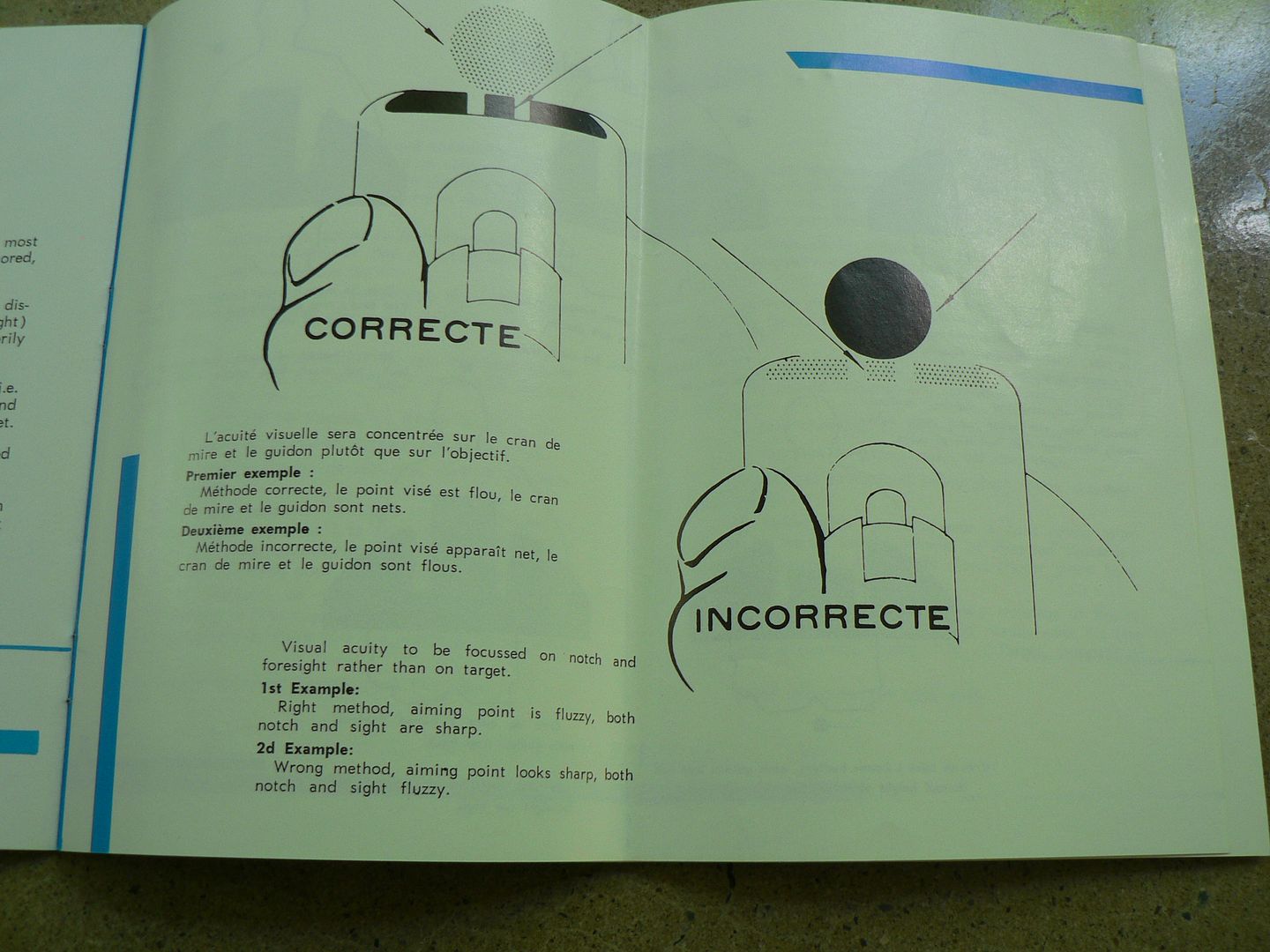 Skipping over safety information we get to the end of the book finishing with a drawing of the factory: 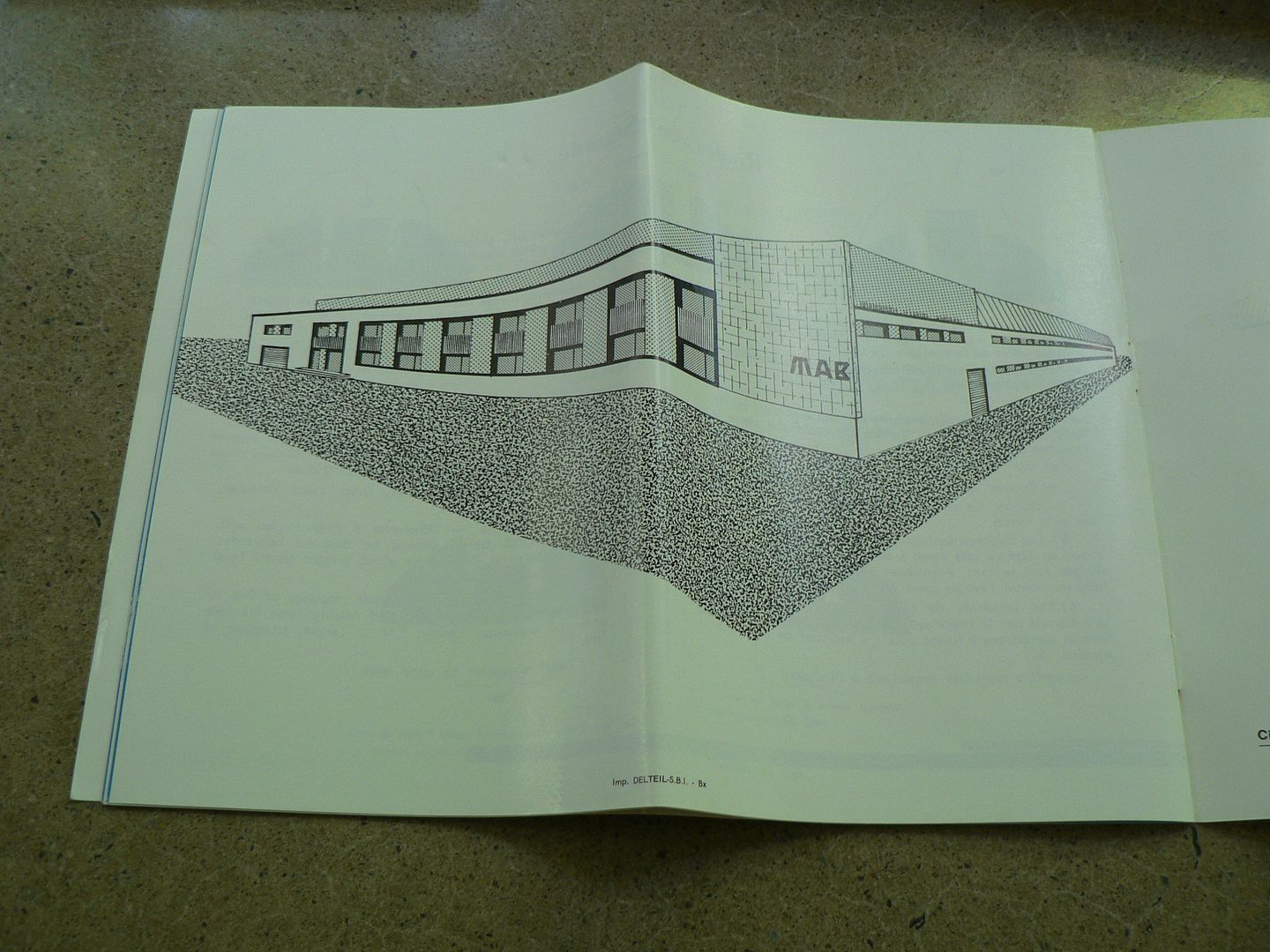 Last up is the rear cover showing it in your hand and ready to go now that you have been properly informed as to*the pistol's functions.....HA!: 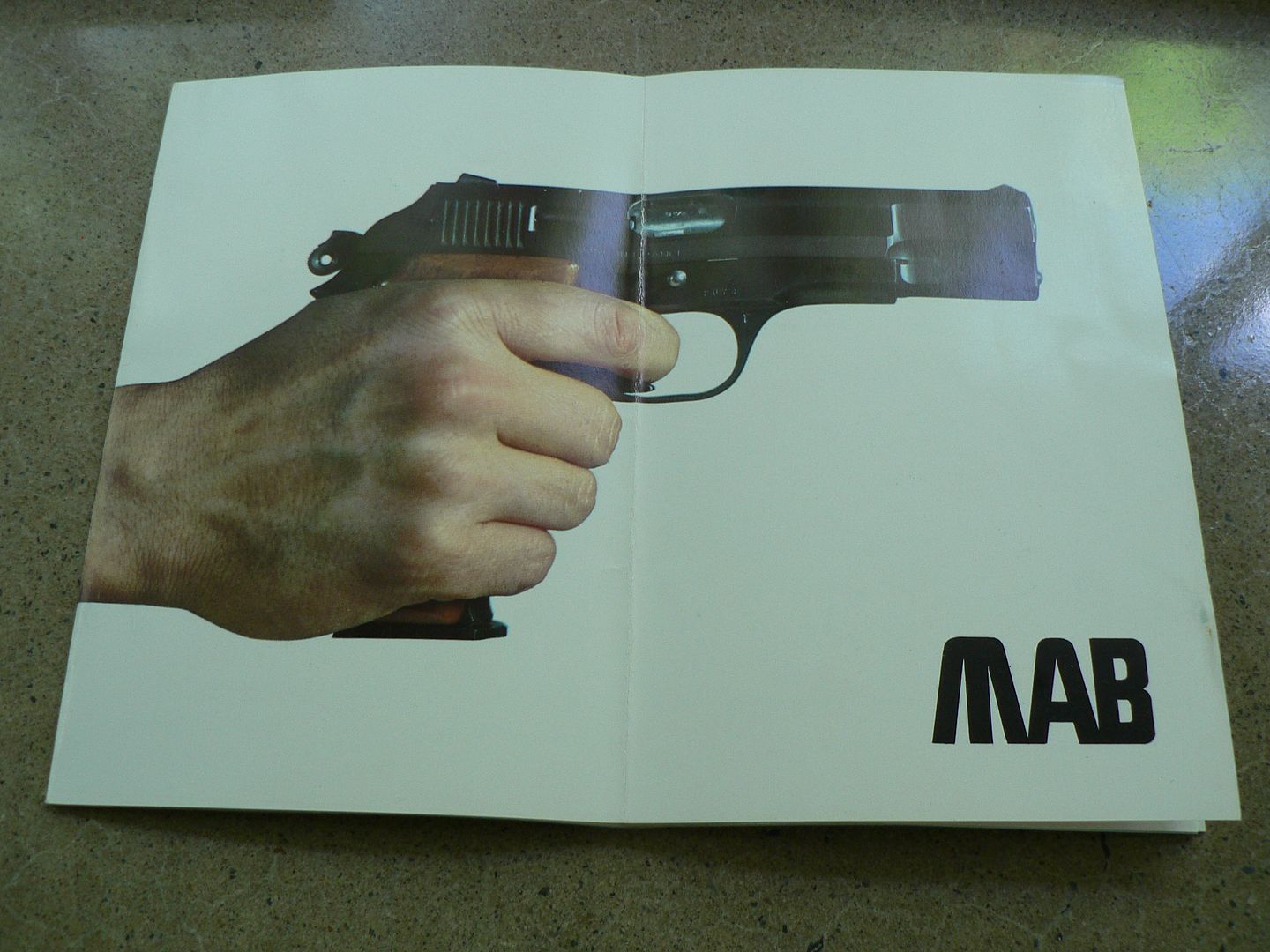 Alright already.....get it out of the bag: 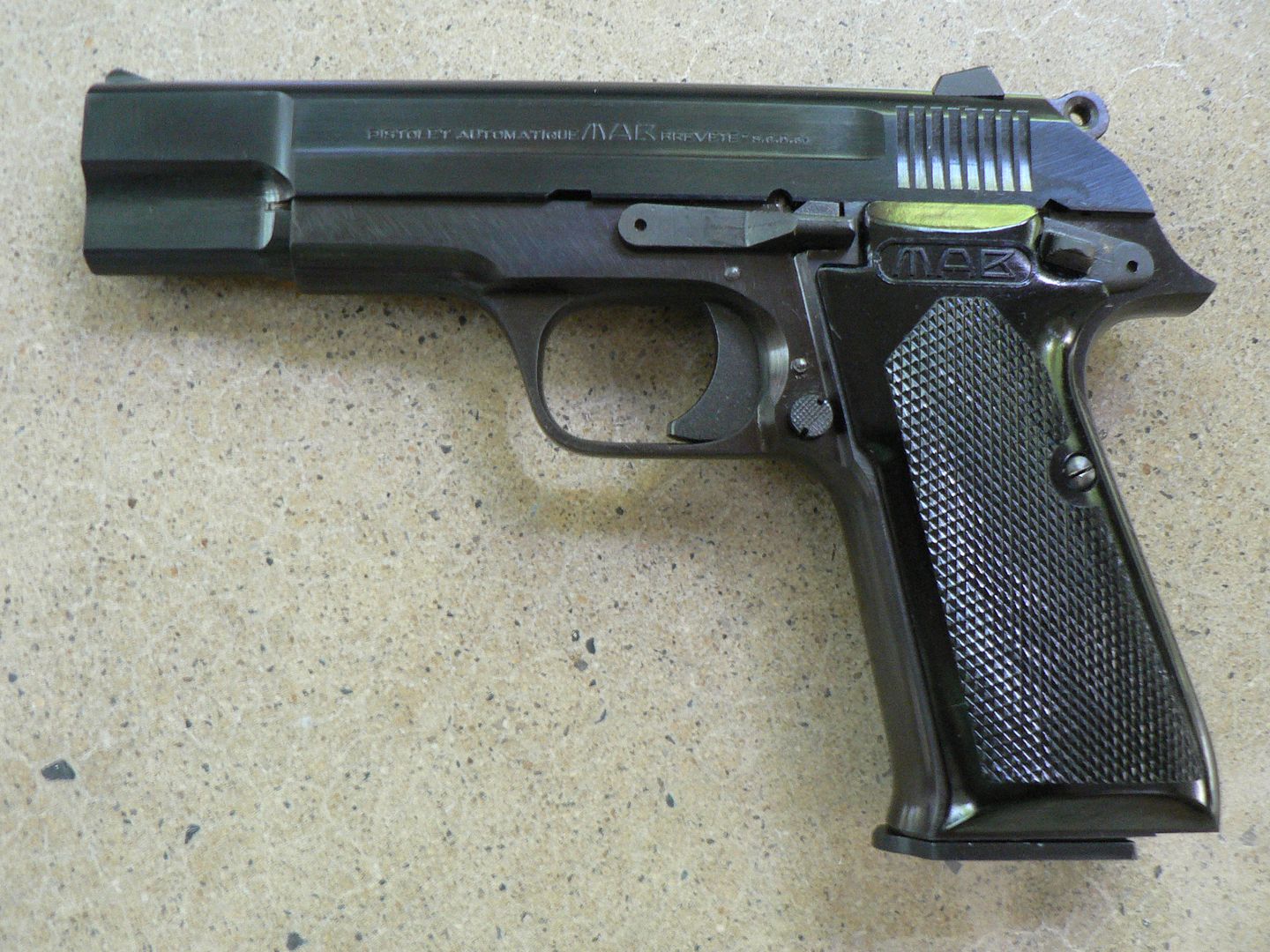 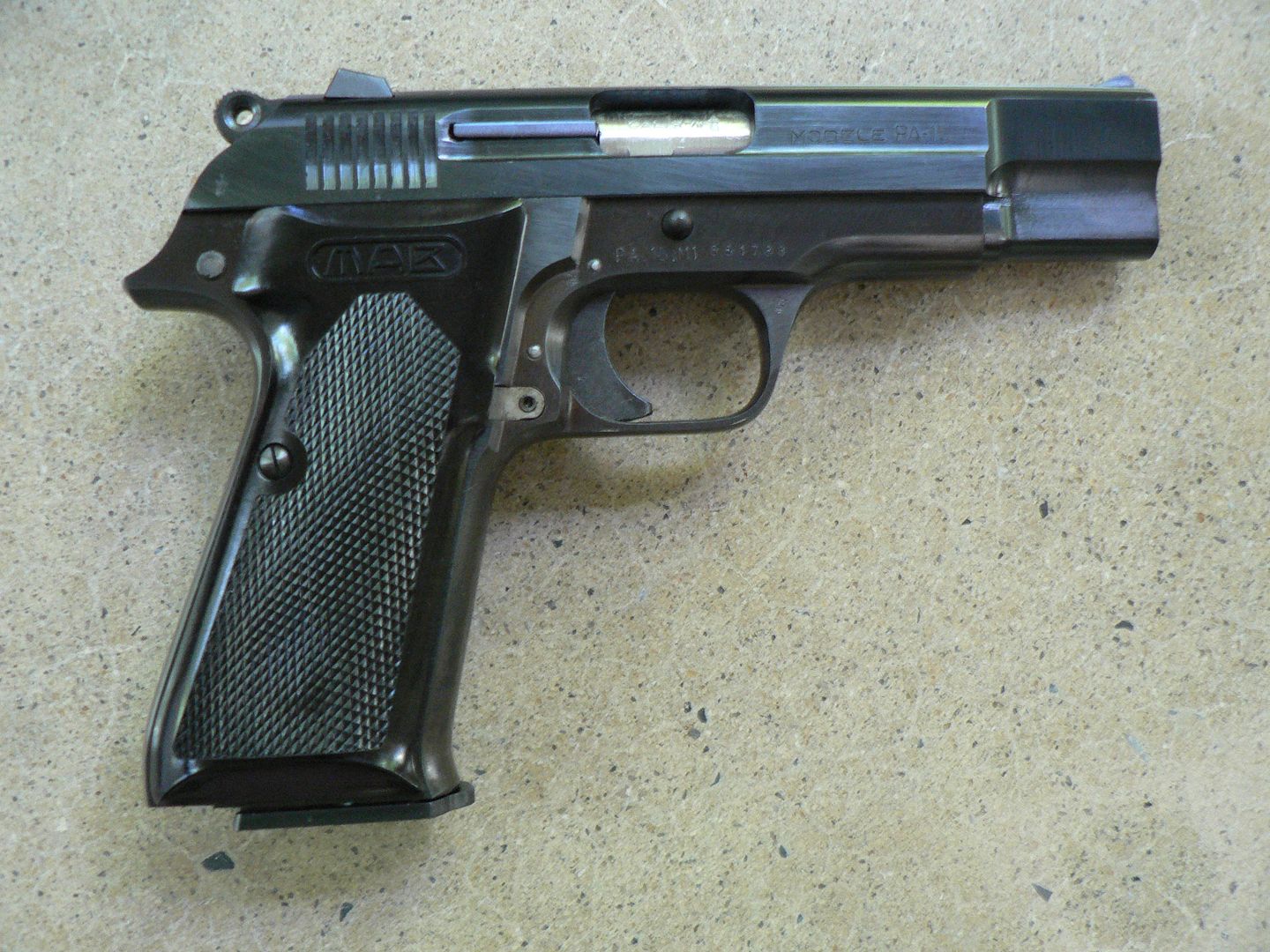 Markings on right side of slide:  Like a dimwit, I forgot to take a close-up of the markings on the left side of the slide. I can take a picture if anyone wants it. St. Etienne inspection stamp at rear of slide: 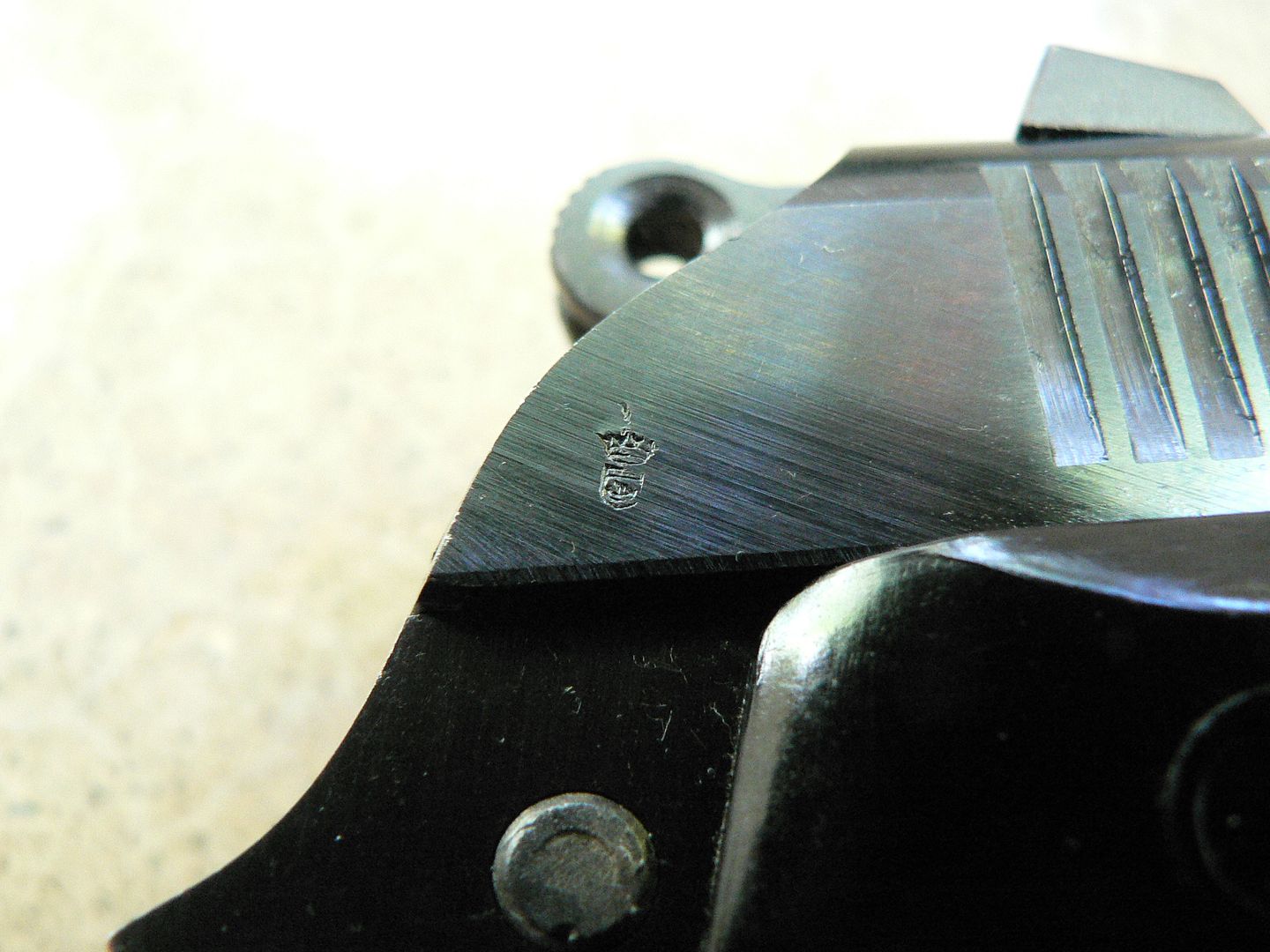 On trigger guard: 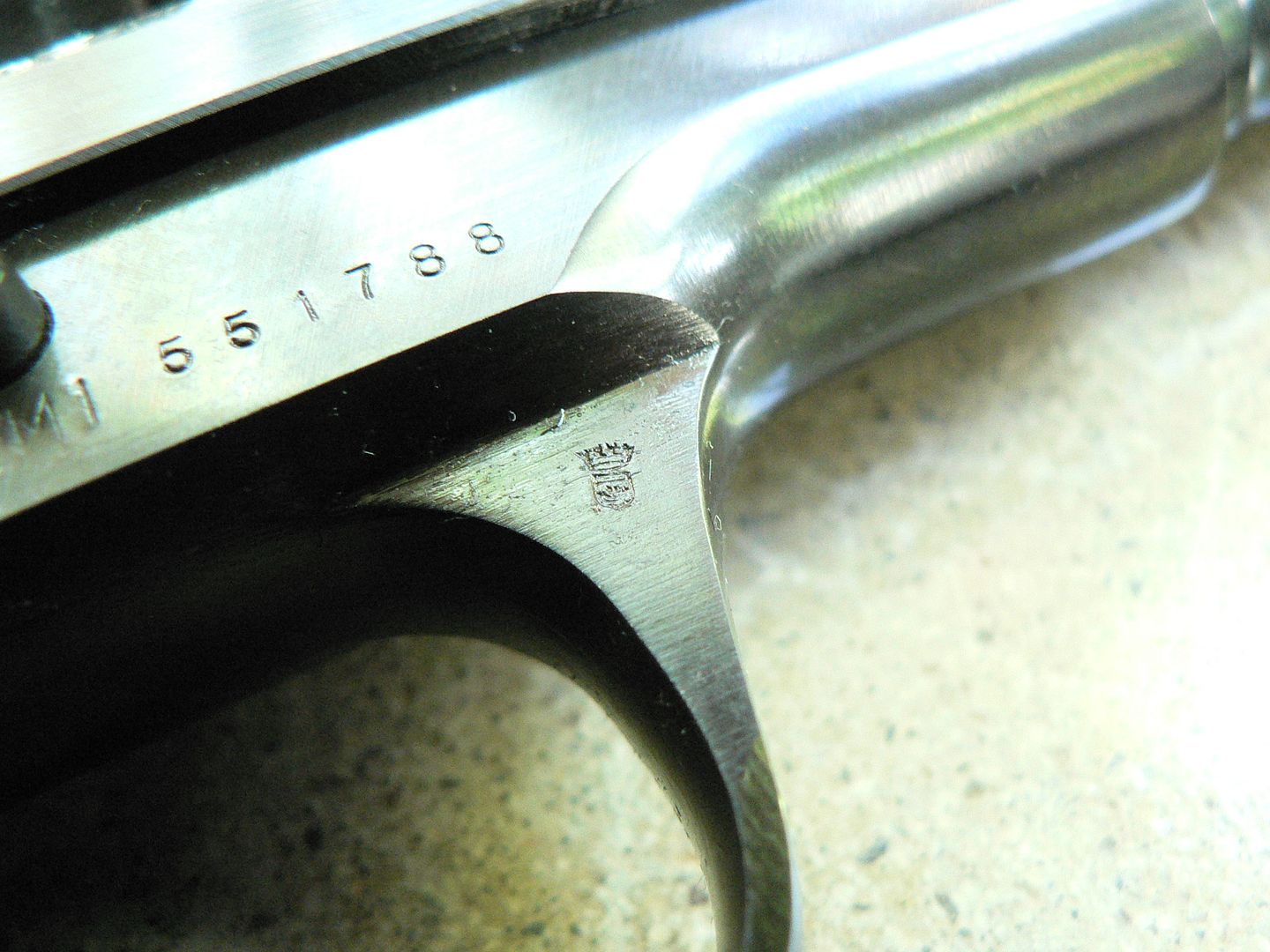 And on barrel: 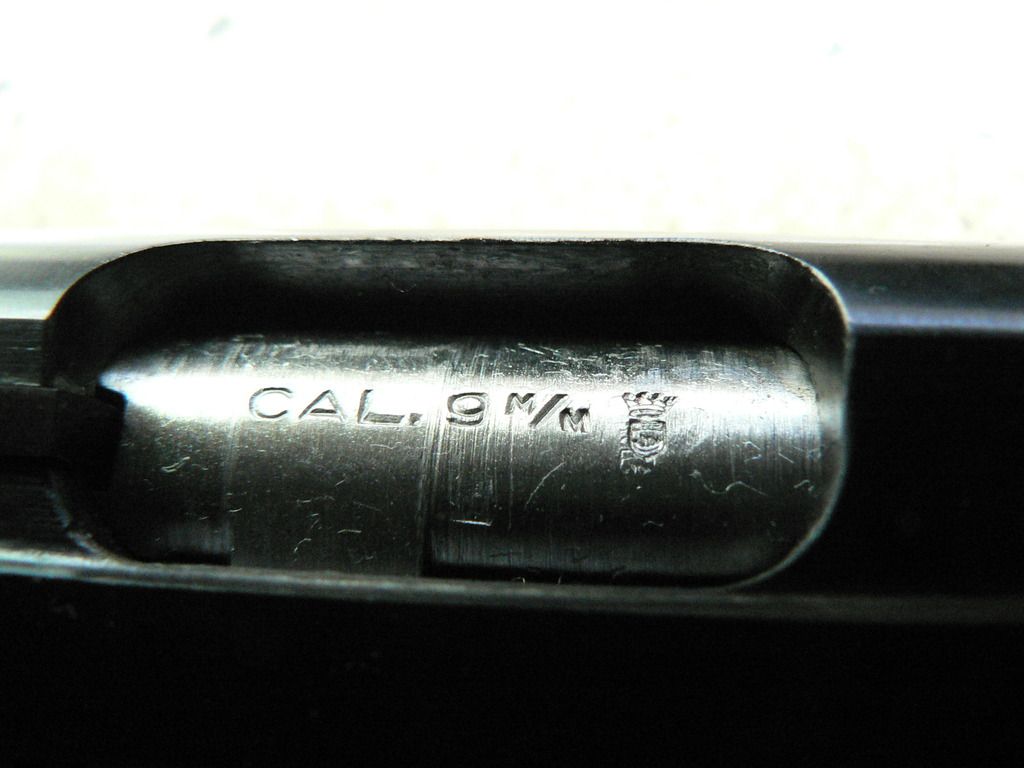 Model designation on right side of frame: 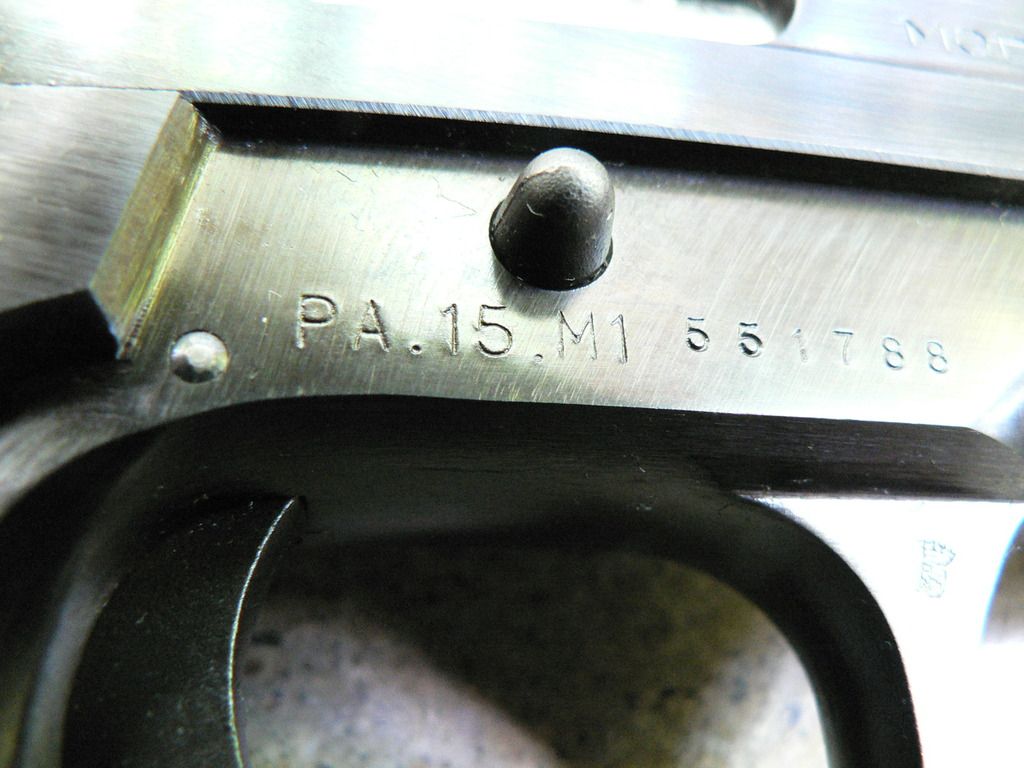 The "M1" designates the "military" model. There was also a target model marked "F1" and a standard model marked "S1". Don't ask me what the differences are between the M and S models as I have no idea. The F model has a longer barrel with a longer slide modified for a tighter fit and adjustable sights. I like pistols*that*this chopped off look to them. It looks so utilitarian and "business" like: 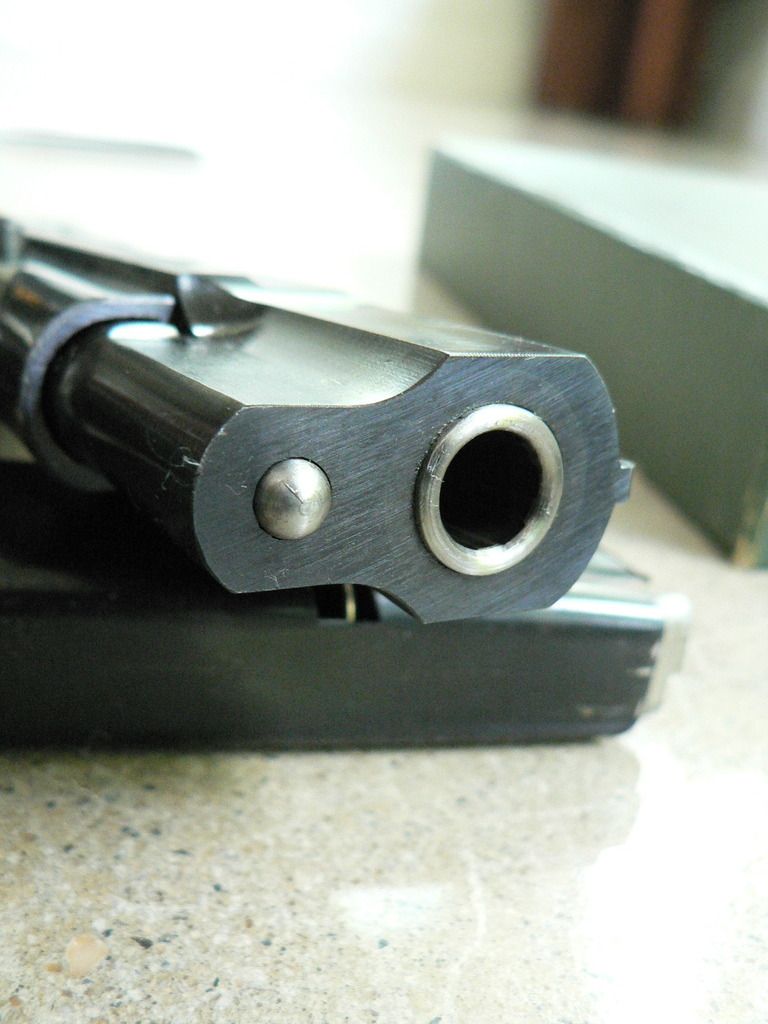 I don't know if the front sight is machined with the slide or attached to it somehow but it's not adjustable or removeable: 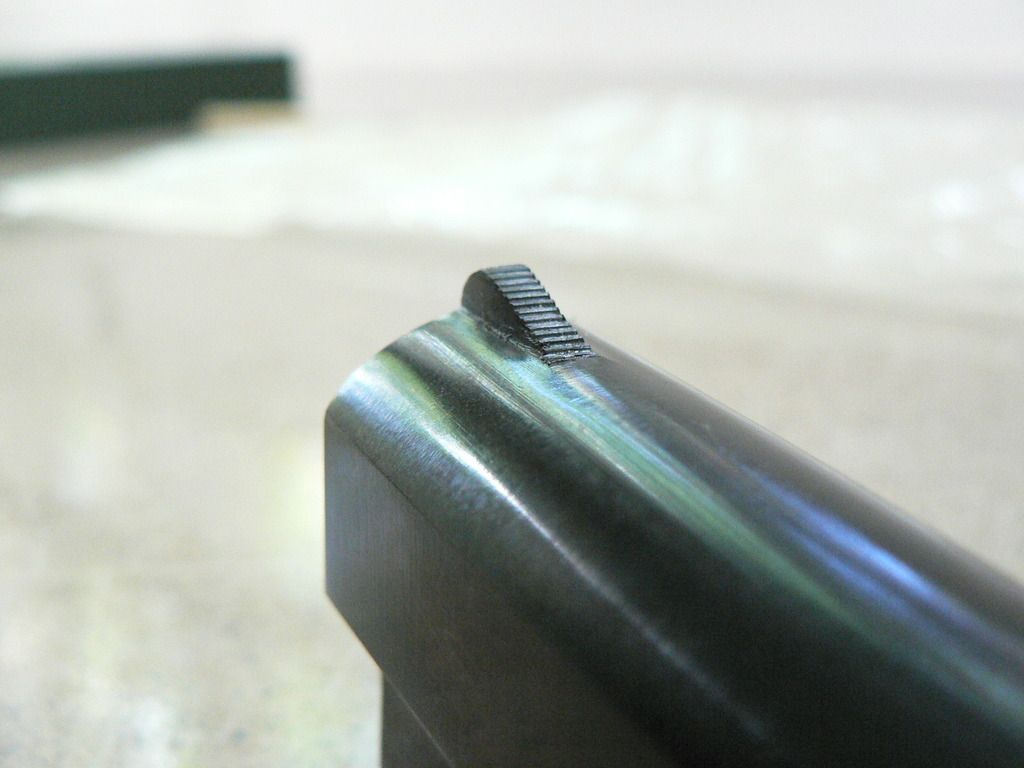 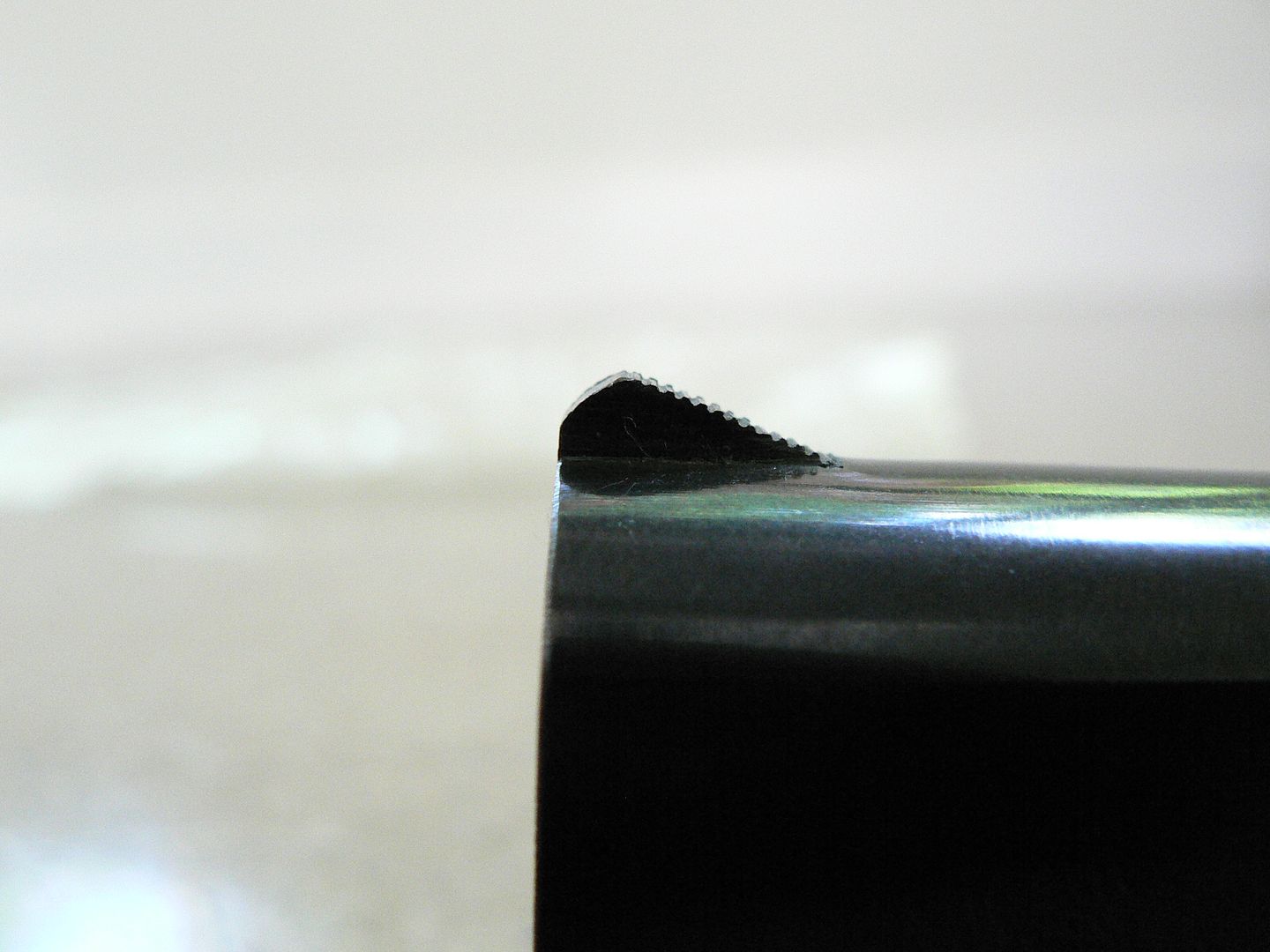 The rear sight is a simple notched affair fitted via a dovetail. It has a nice sight picture: 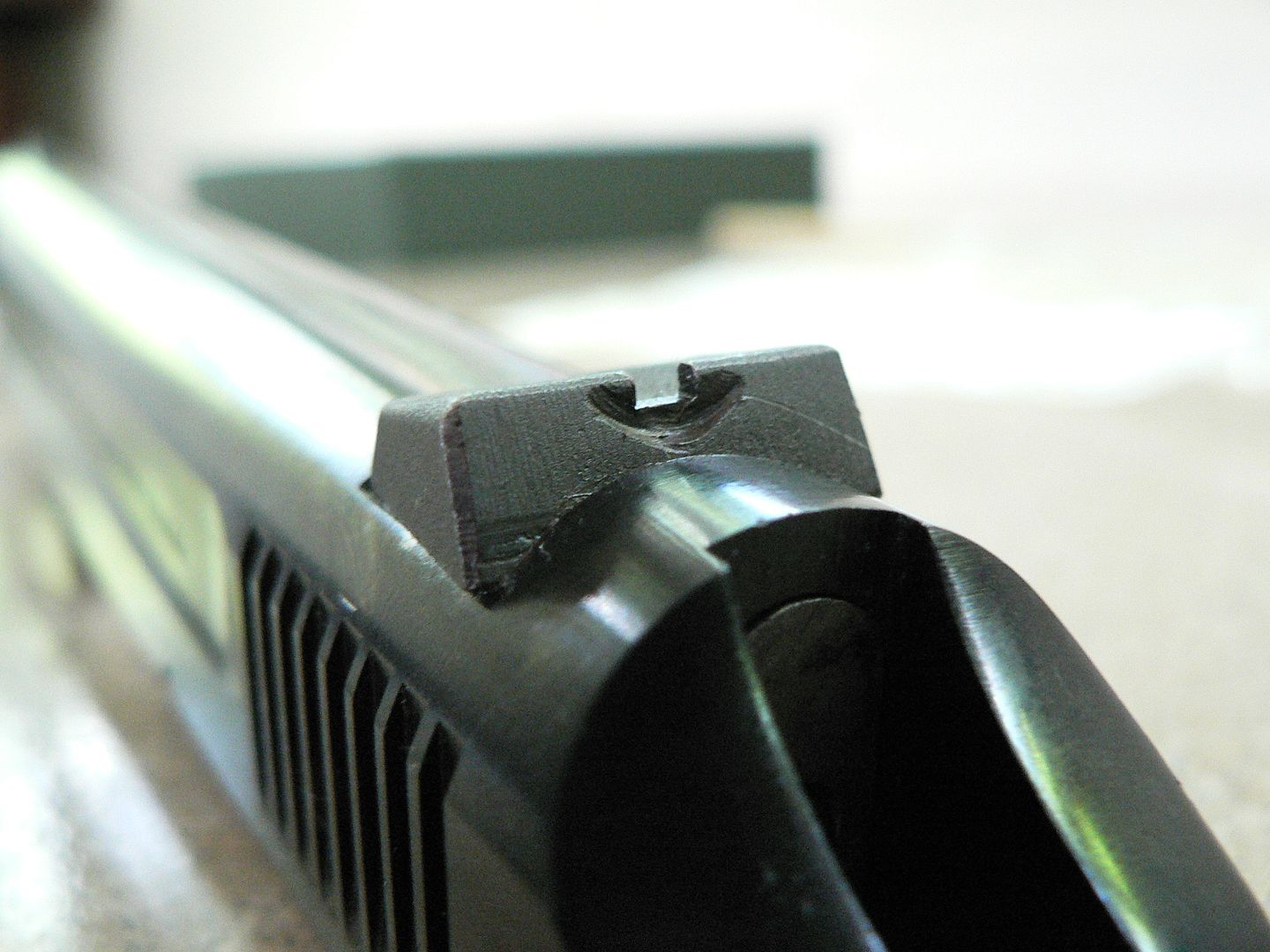 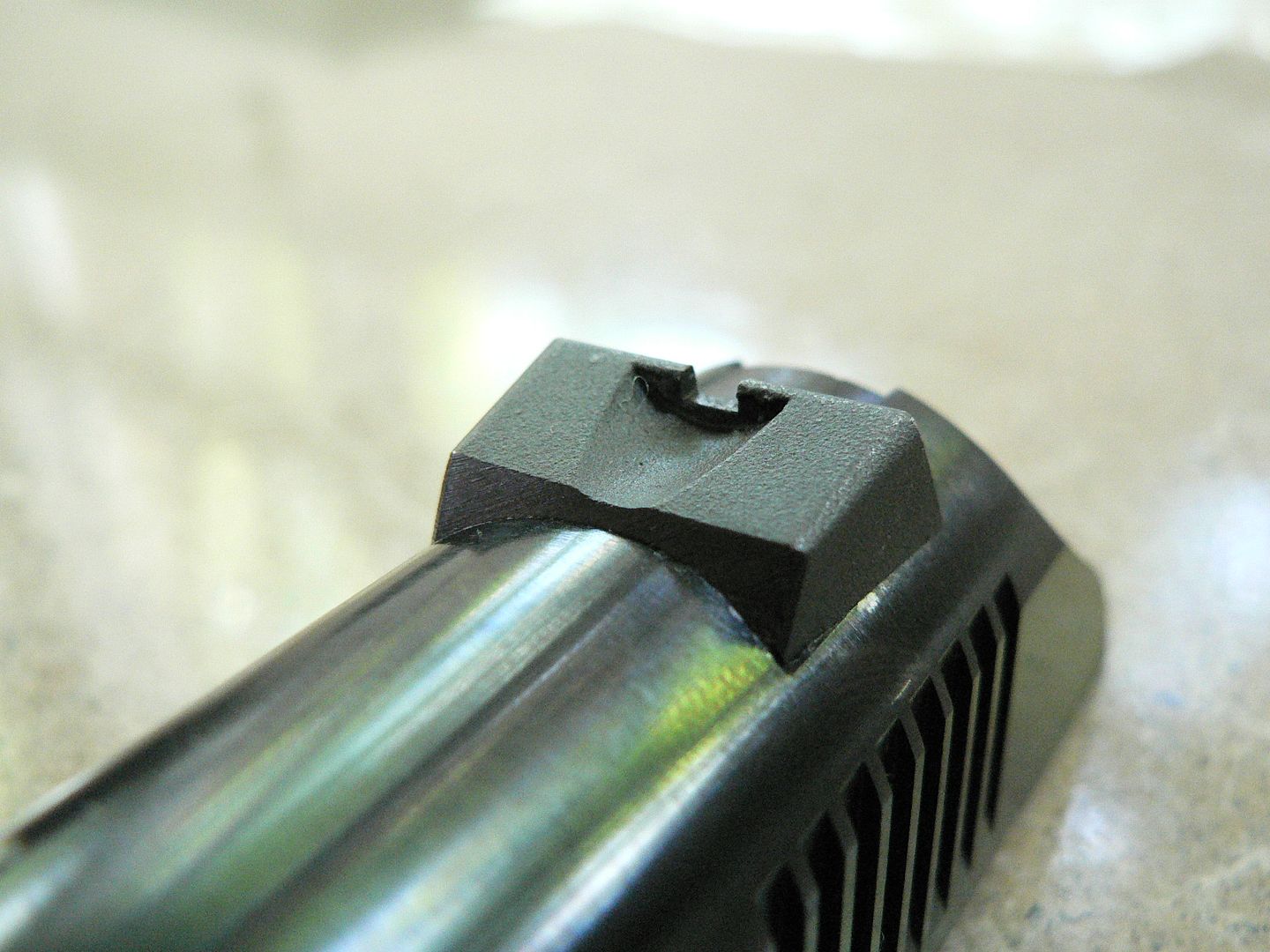 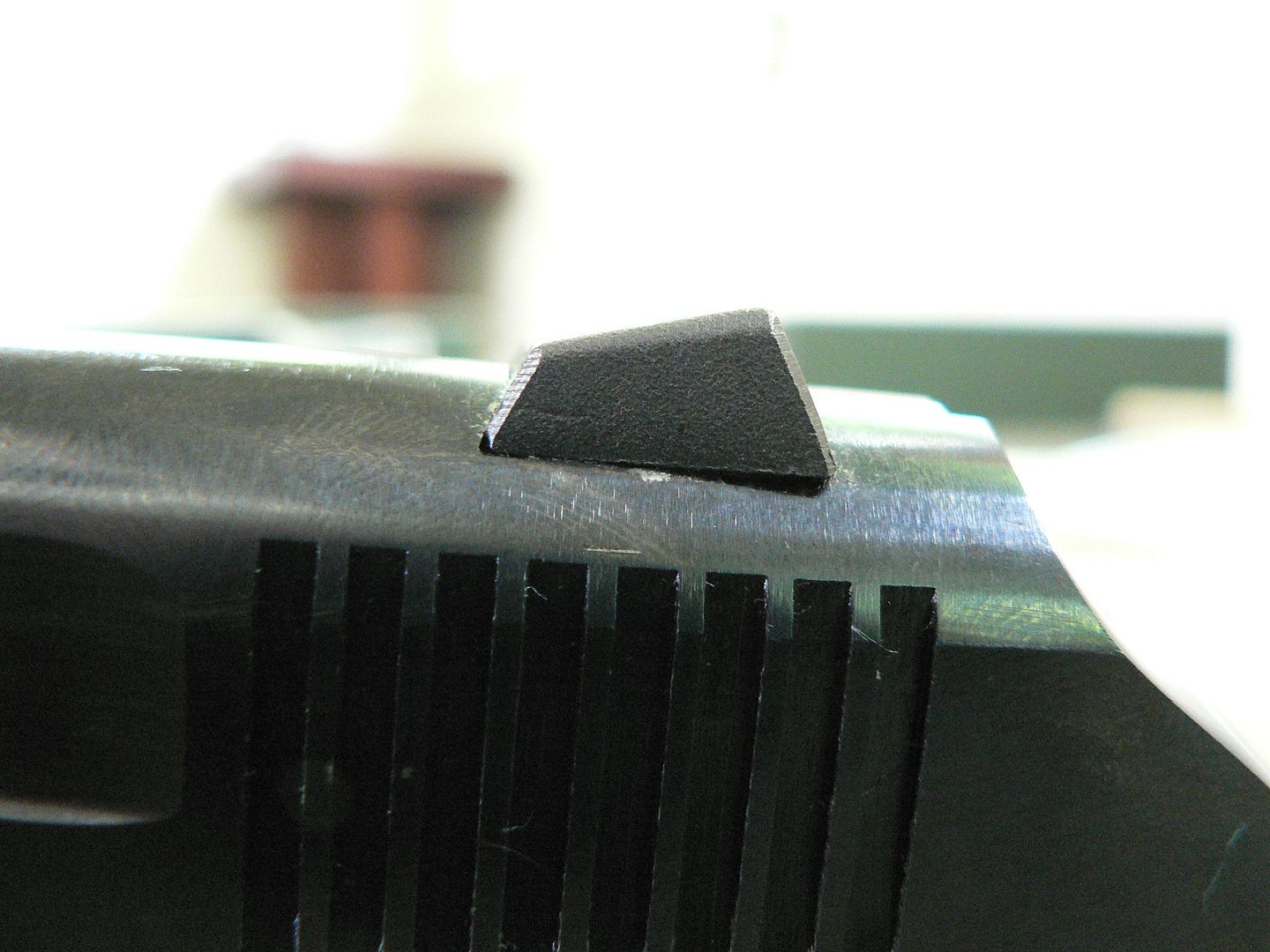 Taking this thing apart is simple but, until you figure it out, it's a bit of a Chinese puzzle box. The only clue is this small cutout on the slide behind the hold open notch: 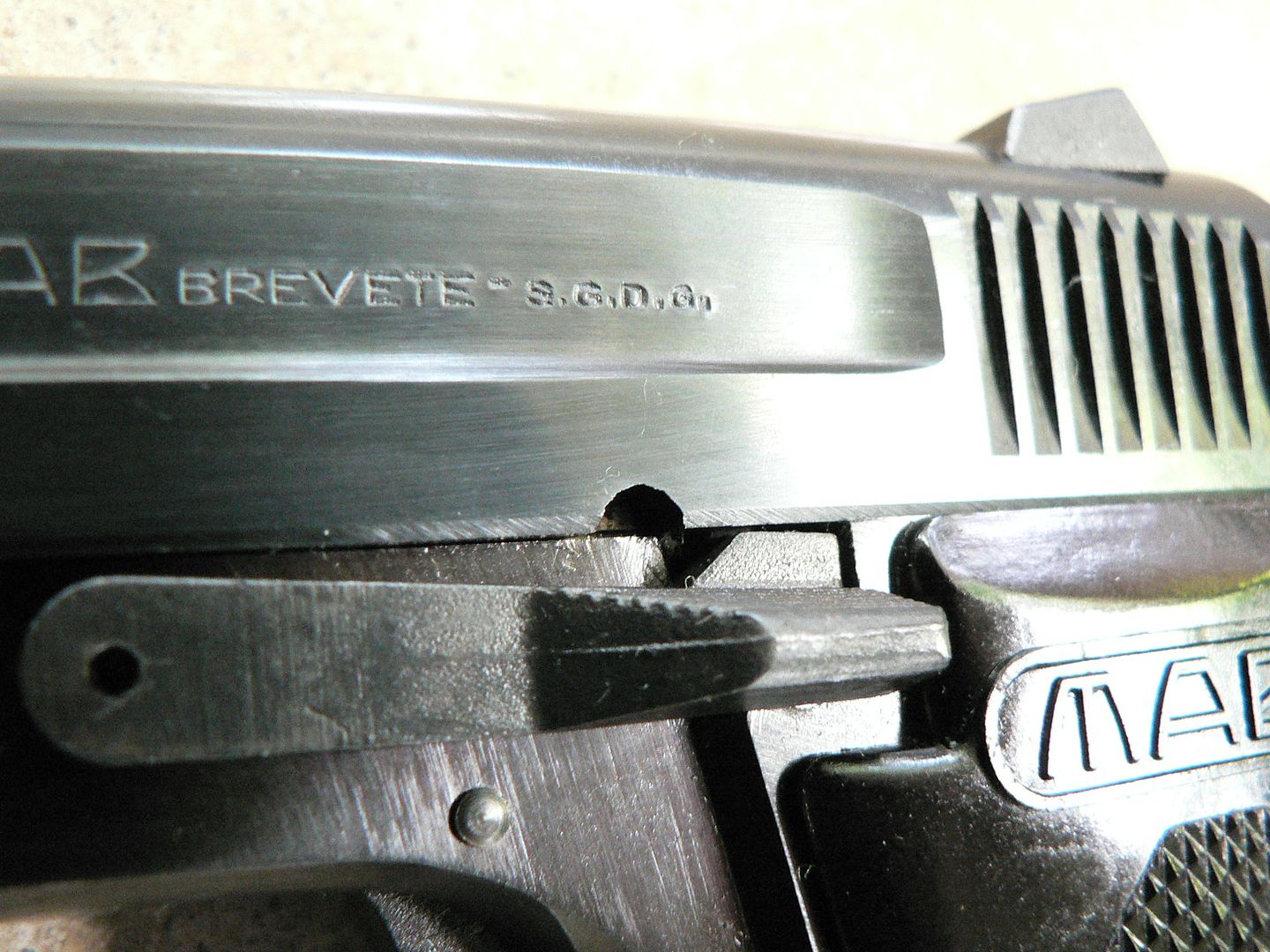 So, it seems obvious to me that all you gotta' do it pull the slide back far enough that the nub on the slide stop aligns with this little cut out and then you can push the slide stop out from right to left. WRONG. Well, maybe you have to*remove the magazine first. You always have to remove the magazine. OK, magazine out; try again. NOPE. Maybe you have to **** the hammer back. The hammer won't budge! Put the magazine back in and now the hammer will move and lock back but I still can't get the slide stop out......what the hex is going on here?? Let's consider the safety for a moment before going any farther because this godly French thingee is getting a bit frustrating. Here's the safety in the fire position: 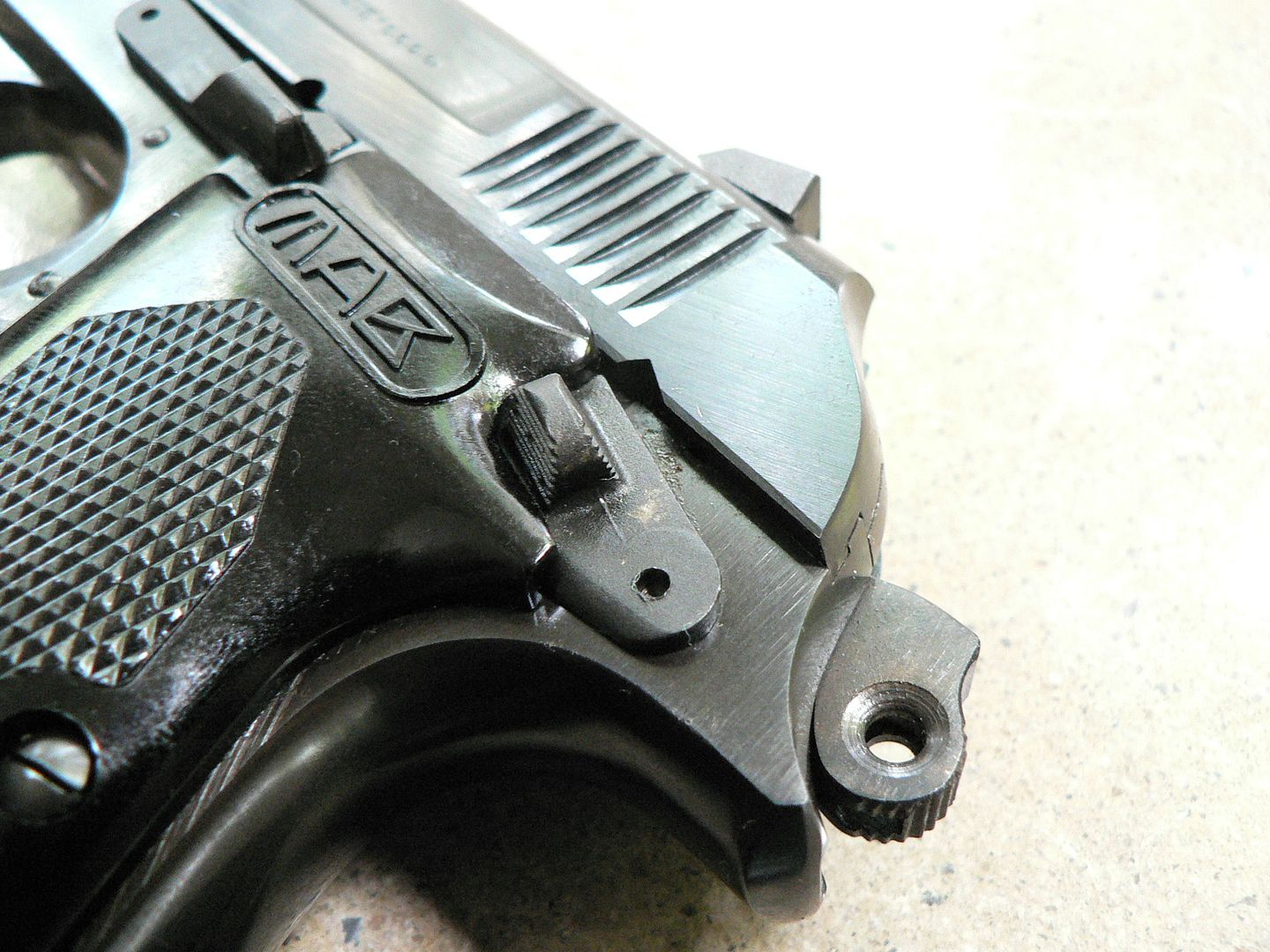 No, it's not ambidextrous. That kind of stuff wasn't much thought of yet so the safety is only on one side of the frame. You cannot engage the safety unless the hammer is cocked and you can't **** the hammer unless the magazine is in the pistol. The trigger won't drop the hammer without the magazine inserted either. If the hammer is cocked and the magazine is either in or out of the pistol, you can cycle the slide. If the hammer is not cocked and you remove the magazine, you cannot cycle the slide because you cannot **** the hammer. If the safety is engaged, you can't cycle the slide whether the magazine is in place or not because the safety locks the slide when engaged. Confused yet? It's French. Actually, the pistol has nothing more than a magazine safety with a slightly strange nuance. Once you understand that the magazine controls not just the trigger but the hammer too, it all makes sense. With the magazine inserted, the PA15 operates just like any other single action pistol. With the magazine removed, you cannot **** the hammer or drop it if cocked. So, you can't run the slide if*the hammer isn't already cocked for obvious reasons. The manual safety can only be engaged if the pistol is cocked and it locks the slide just like many other pistols before and since the PA15 was born. Now, here's the safety engaged: 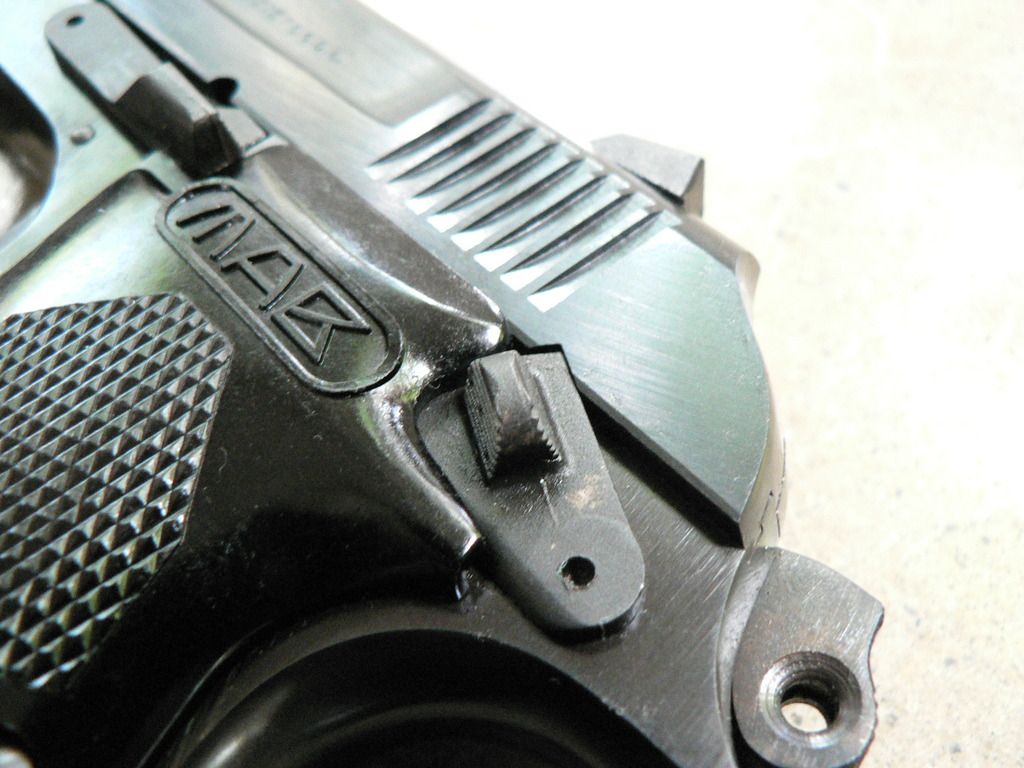 It has a short and easy throw and is easily found by the thumb. SO......how does it come apart. It's simple. 1. **** the hammer. 2. Remove the magazine. 3. Pull the slide back until the*disassembly cutout aligns with the nub on the slide stop and hold it there. 4. Push the slide stop from right to left and remove. 5. Pull slide forward and off of the frame. Set the frame aside. Now we have to remove the bits from the slide: 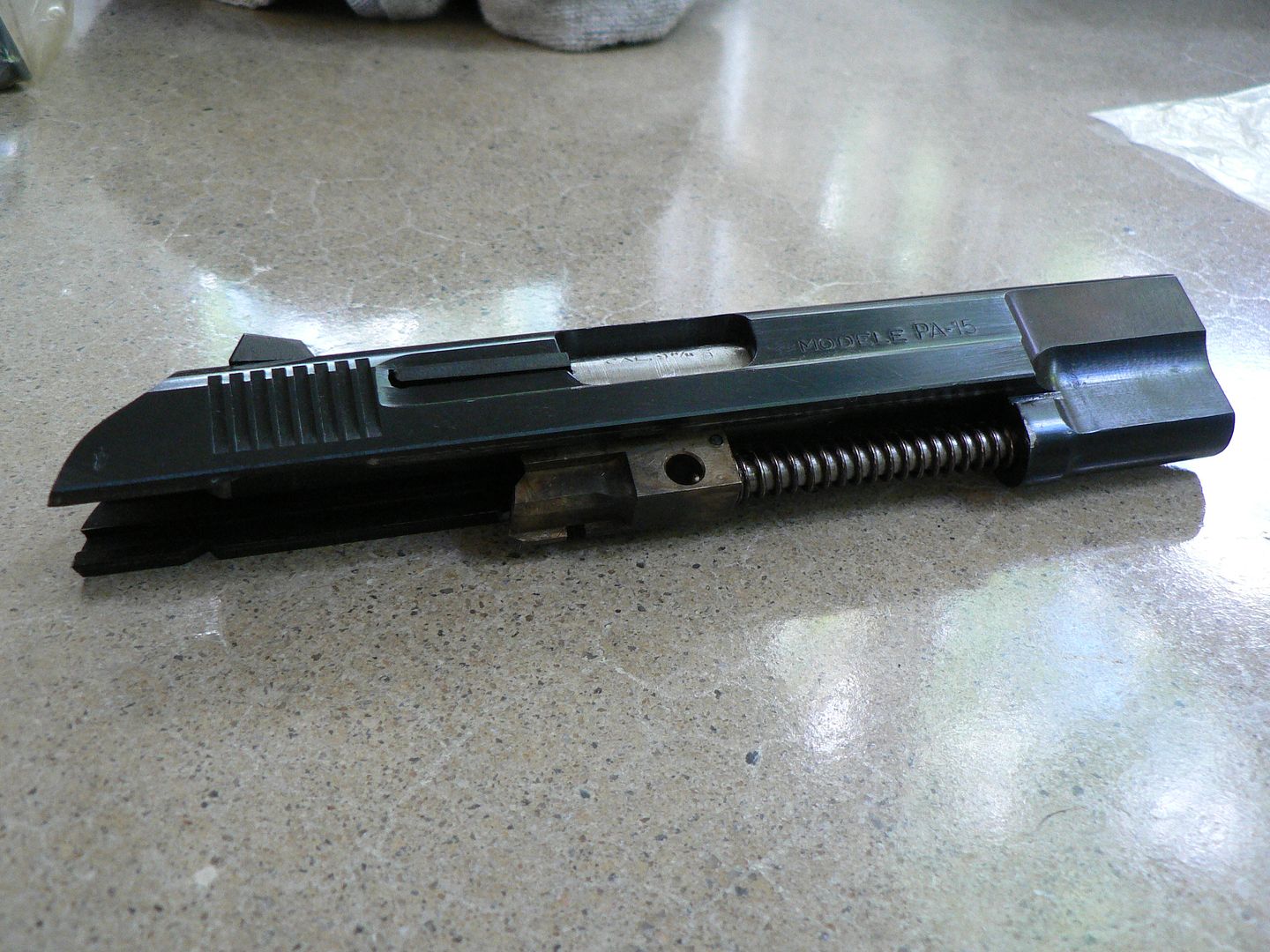 Below the ejection port is a bronze colored thingee with a hole in it (the slide stop axle goes through that hole) called the cradle. Pull this down and to the rear. The recoil spring will come out with it. Next, pull the barrel down and to the rear and you're done. Here is the pistol field stripped and ready for cleaning and inspection: 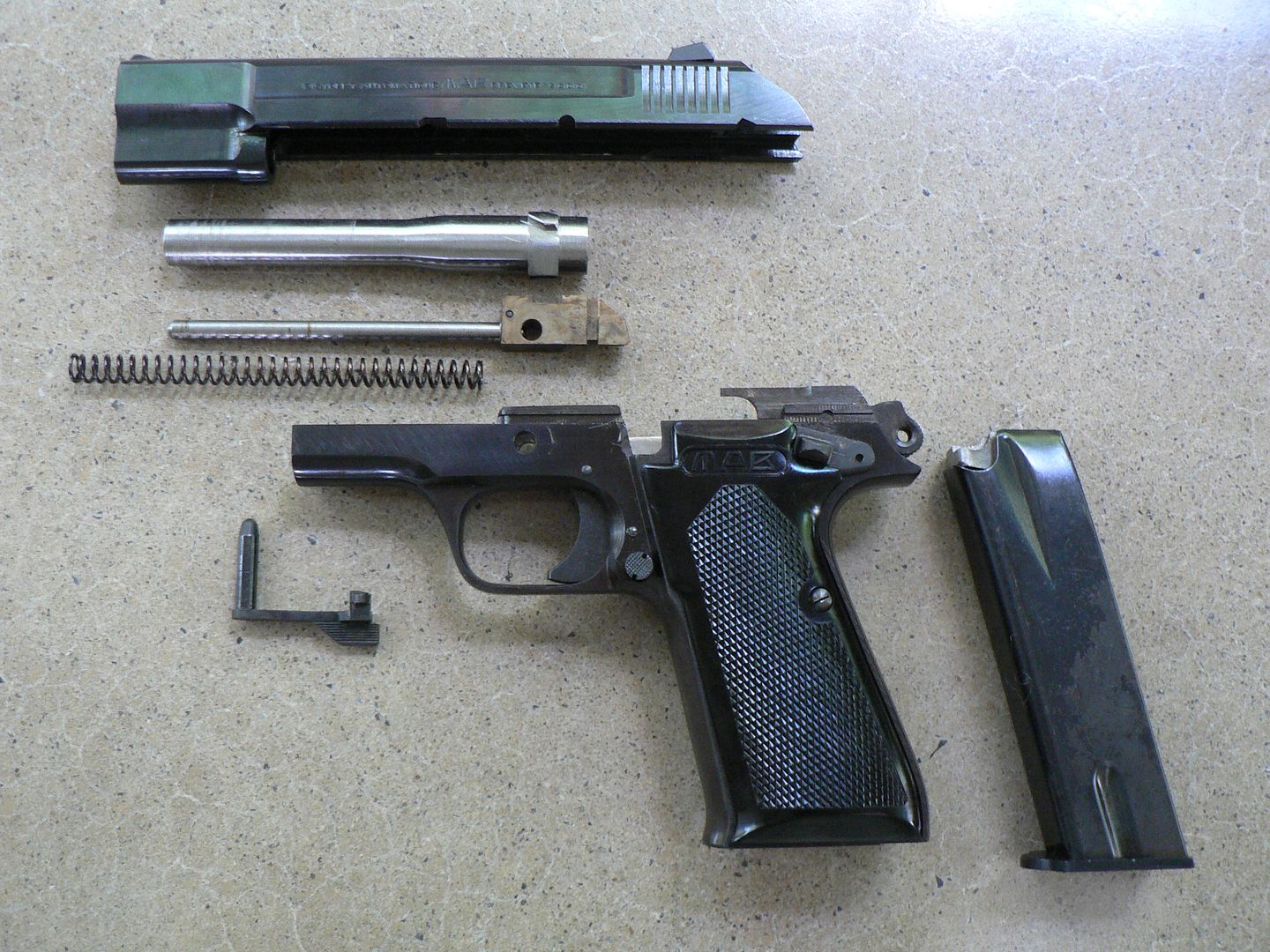 Here is the slide stop showing the last three digits of the serial number: 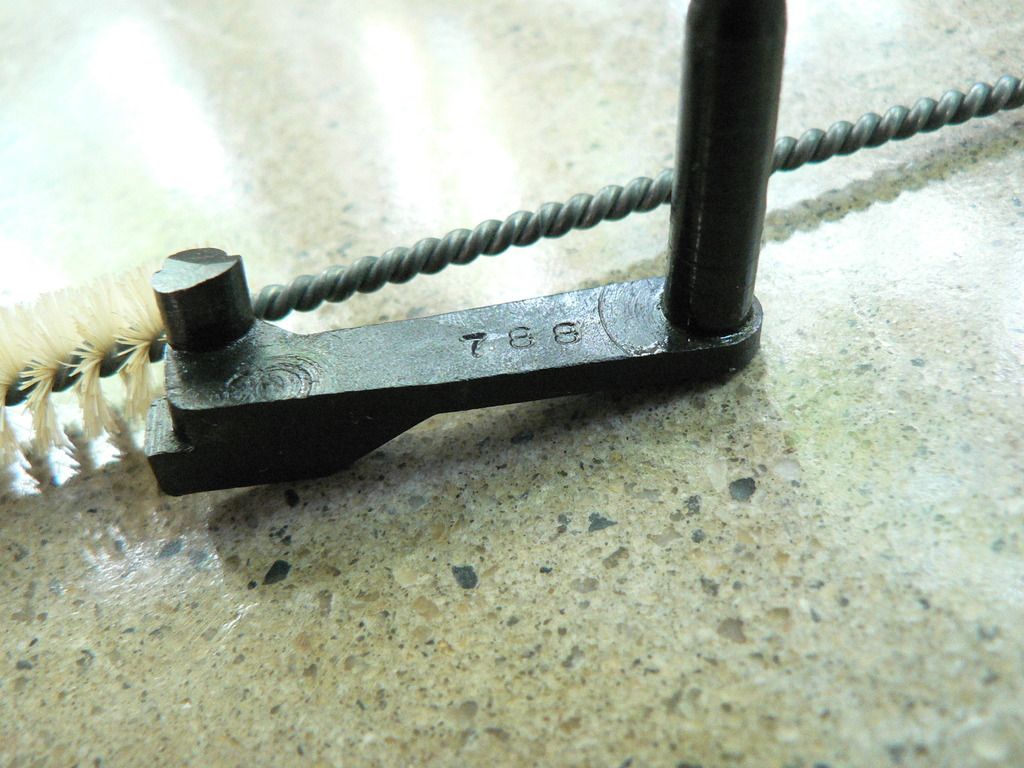 I believe this part is cast but I can't be sure because I'm not all that bright. The ejector is also numbered: 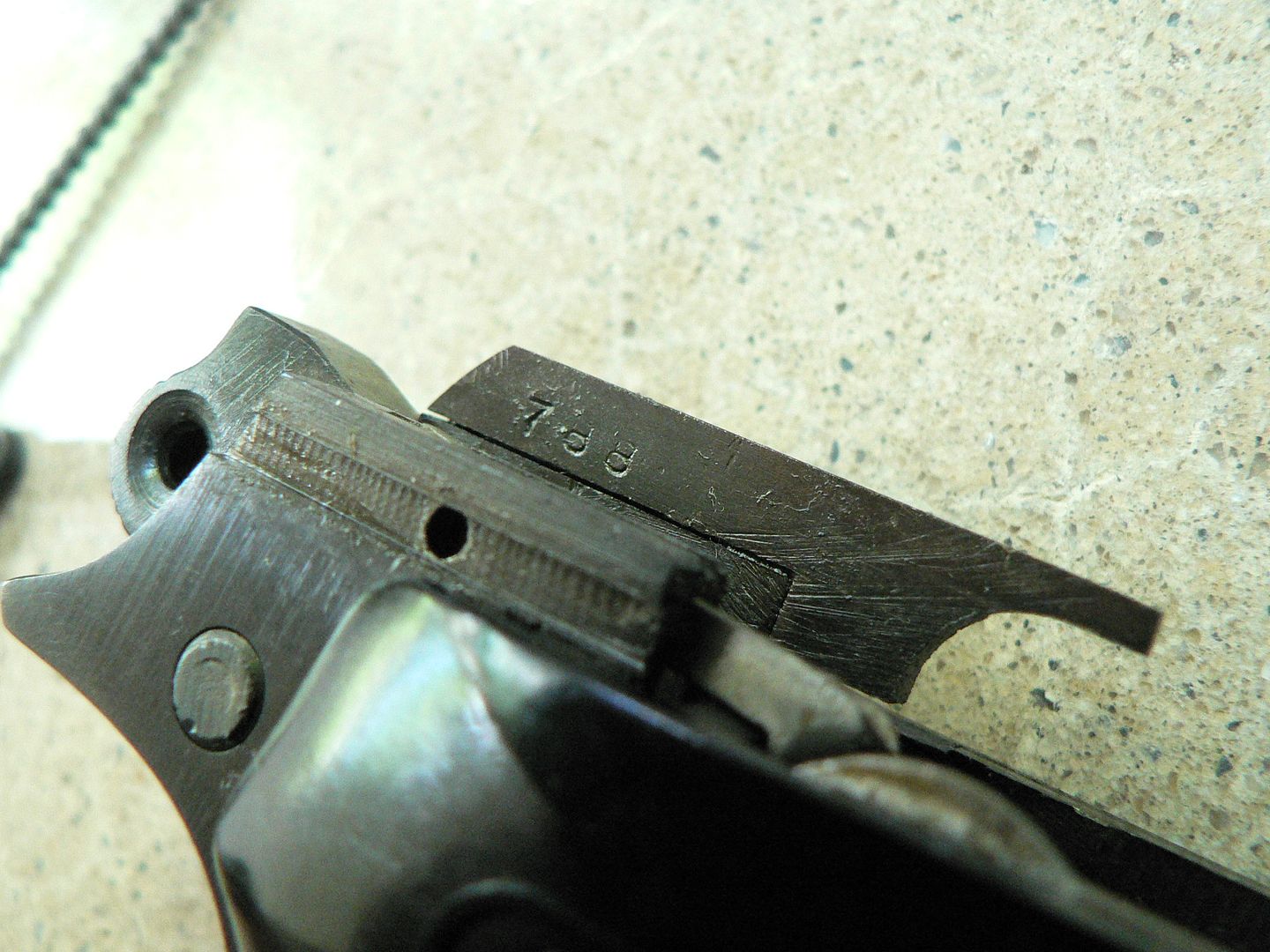 Dig those funky cool machining marks! Way to go Frenchie!! Give it that late war German look!! A look down into the trigger mechanism:  Nothing special going on here. It's a single action only mechanism with a magazine safety. The "cradle" is numbered matched too: 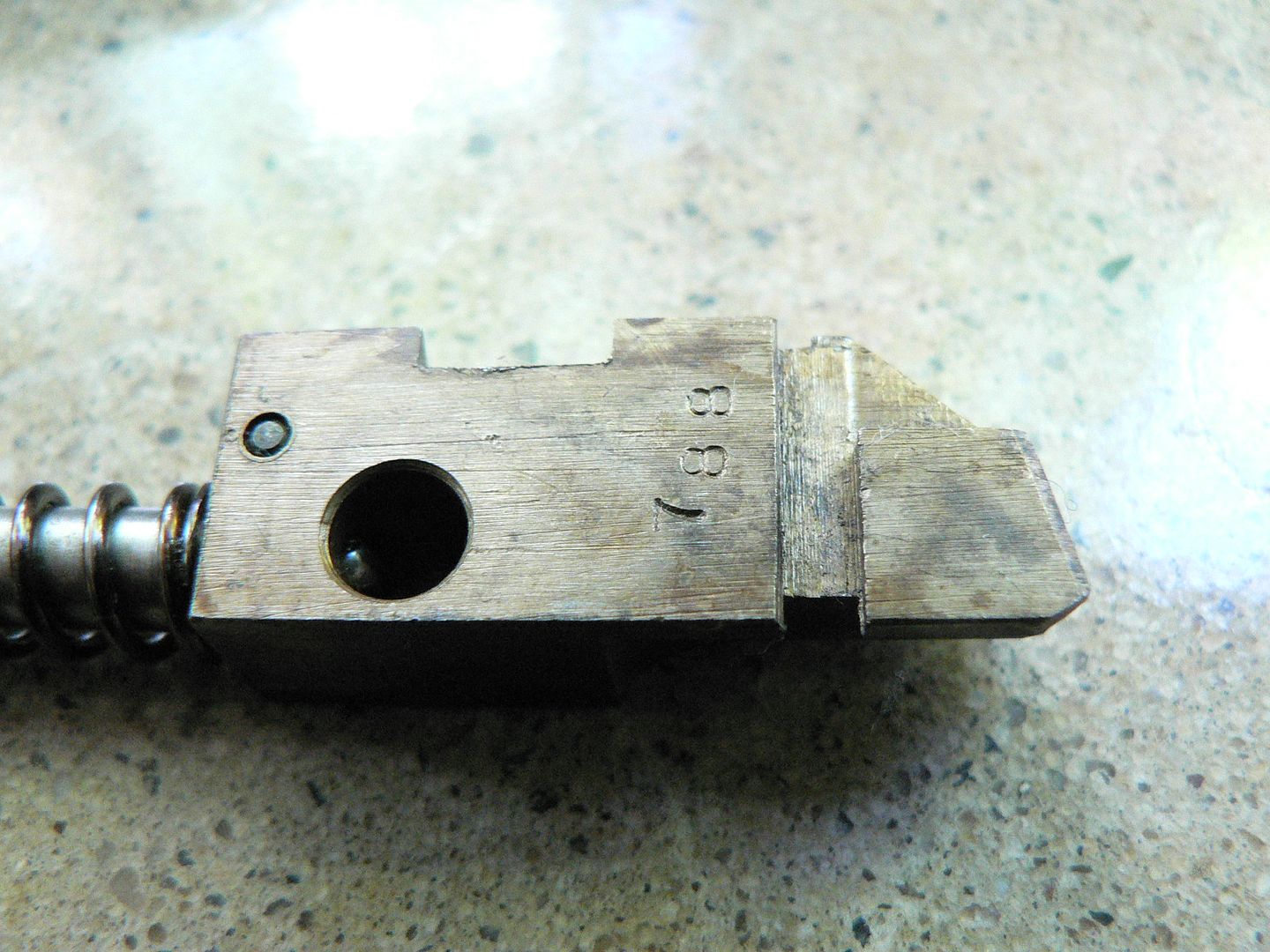 The slide stop axle passes through the hole, locking this part firmly into the frame. It has a polished feed ramp machined into the rear (right side of frame) and the recoil spring guide rod is pinned into the front. Up top is a machined groove that acts as a bearing for the rotating barrel. Here is a top down picture of the cradle showing the feed ramp and barrel bearing surface: 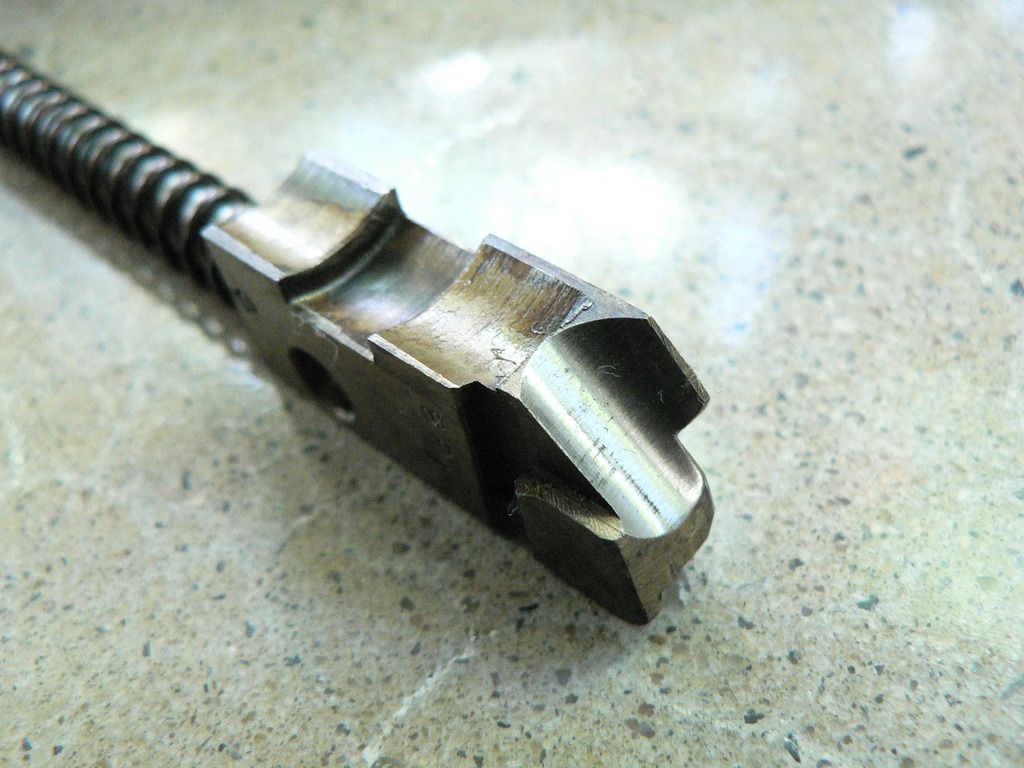 In this shot, we see the lug on the bottom of the barrel (again, numbered to the pistol) that engages the cradle: 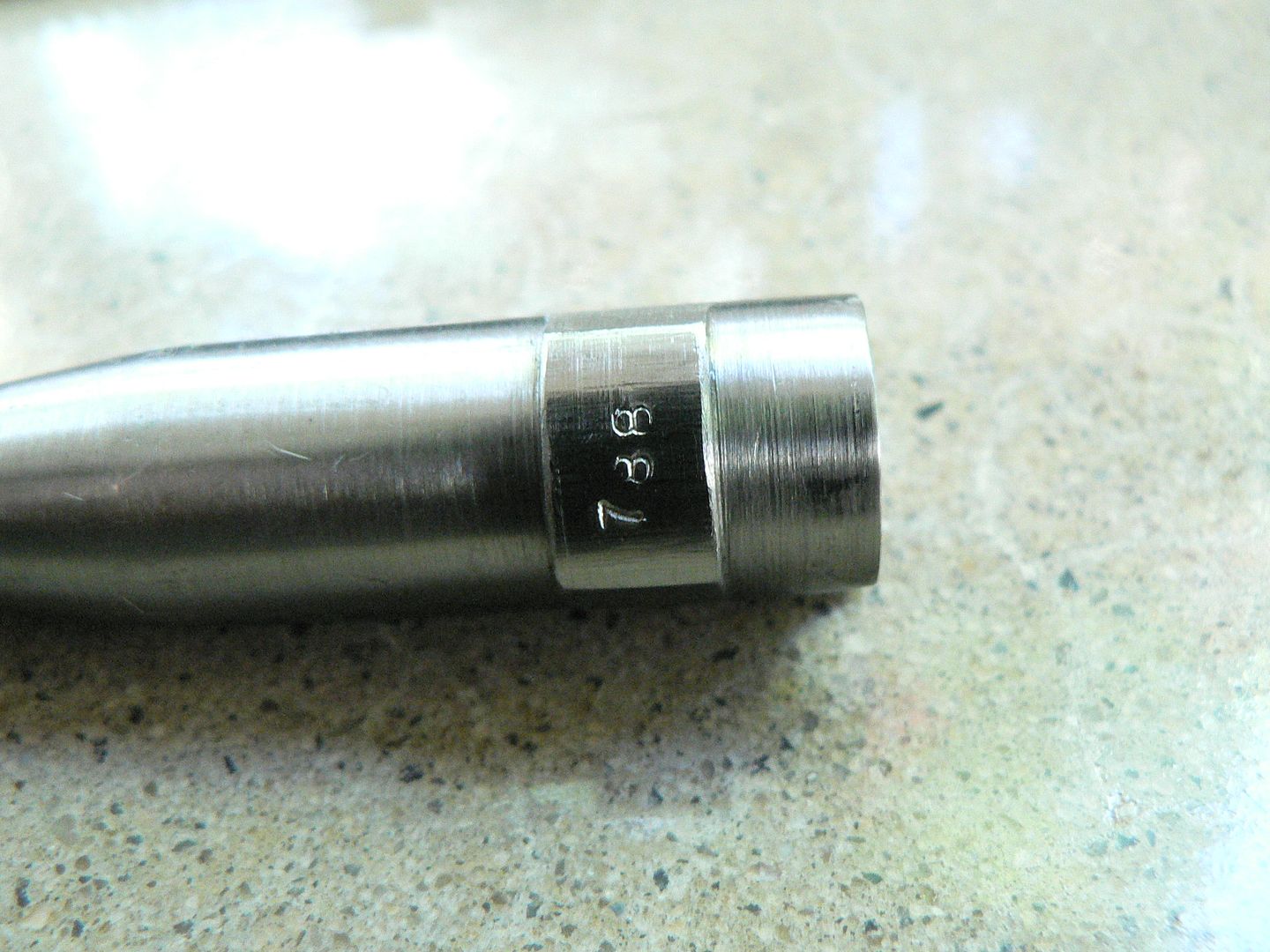 And the lug on top of the barrel that engages the cam slot in the slide causing the barrel to rotate during recoil: 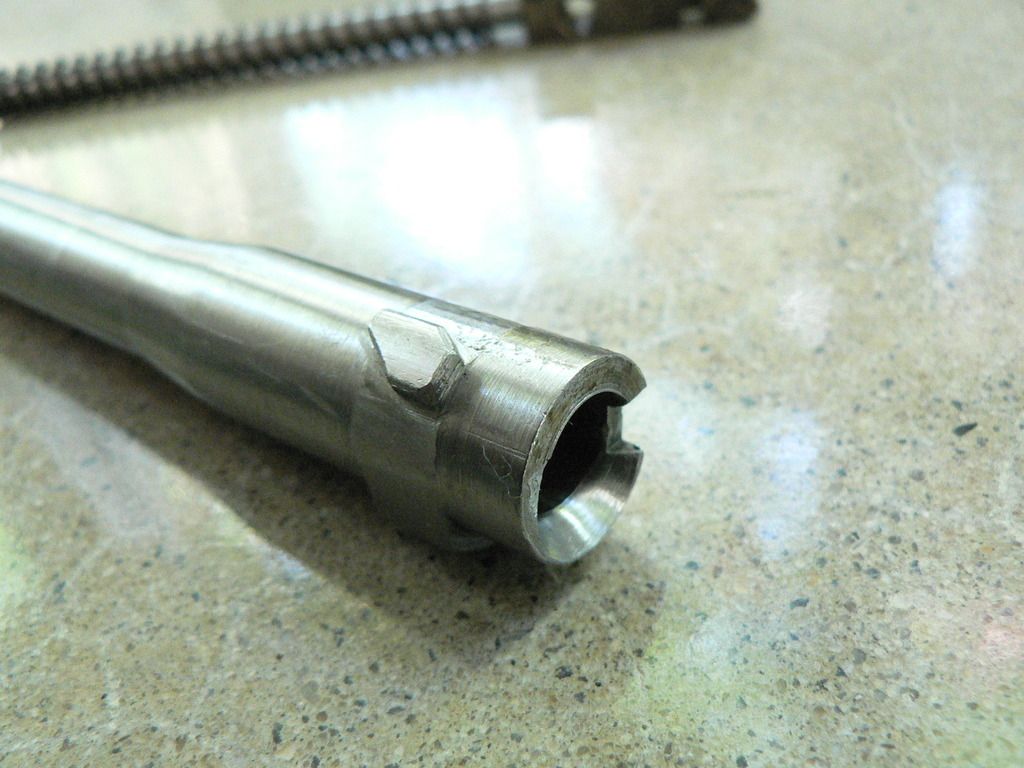 The barrel engaged with the cradle as it would appear when assembled:  The barrel reminds me of a WWI artillery piece for some reason. Here's the cam slot machined into the slide: 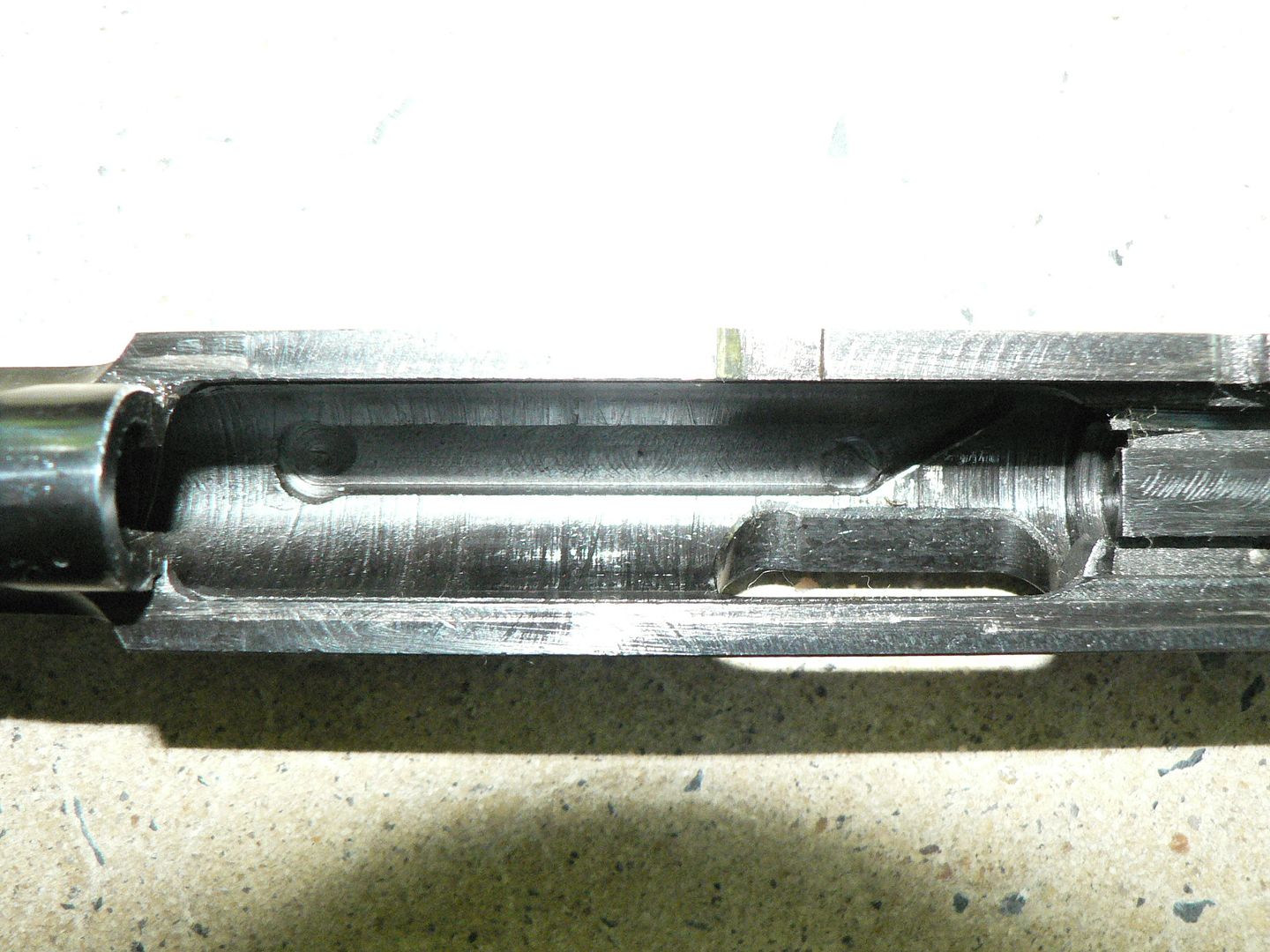  That's some rough machining but it feels buttery smooth when drawing the slide to the rear so it's done well enough. Detail shot of the bottom rear of the slide:  The firing pin is removed by pushing it into the slide and pulling the retaining plate down and out. Nothing out of the ordinary there. Again, rough looking machining but you certainly can't feel it when operating the slide. The "88" is the last two digits of the serial number. Checkered magazine release button: 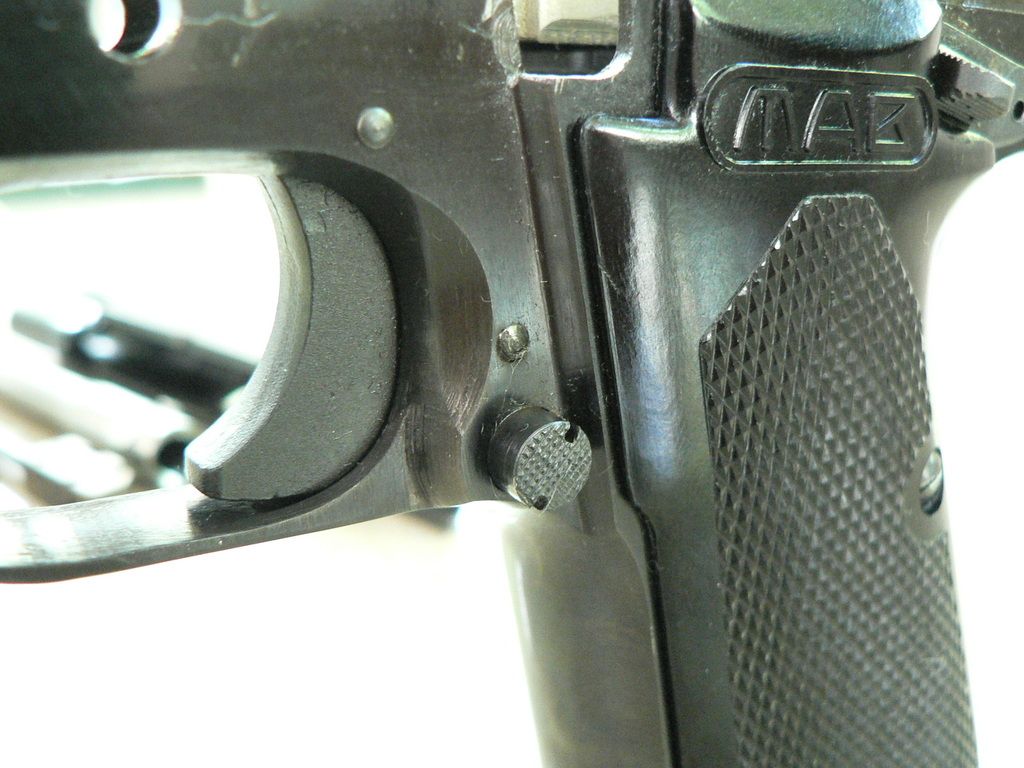 Most of these were made with concentric circles. We'll see that when we look at the other one. The other side of the magazine release: 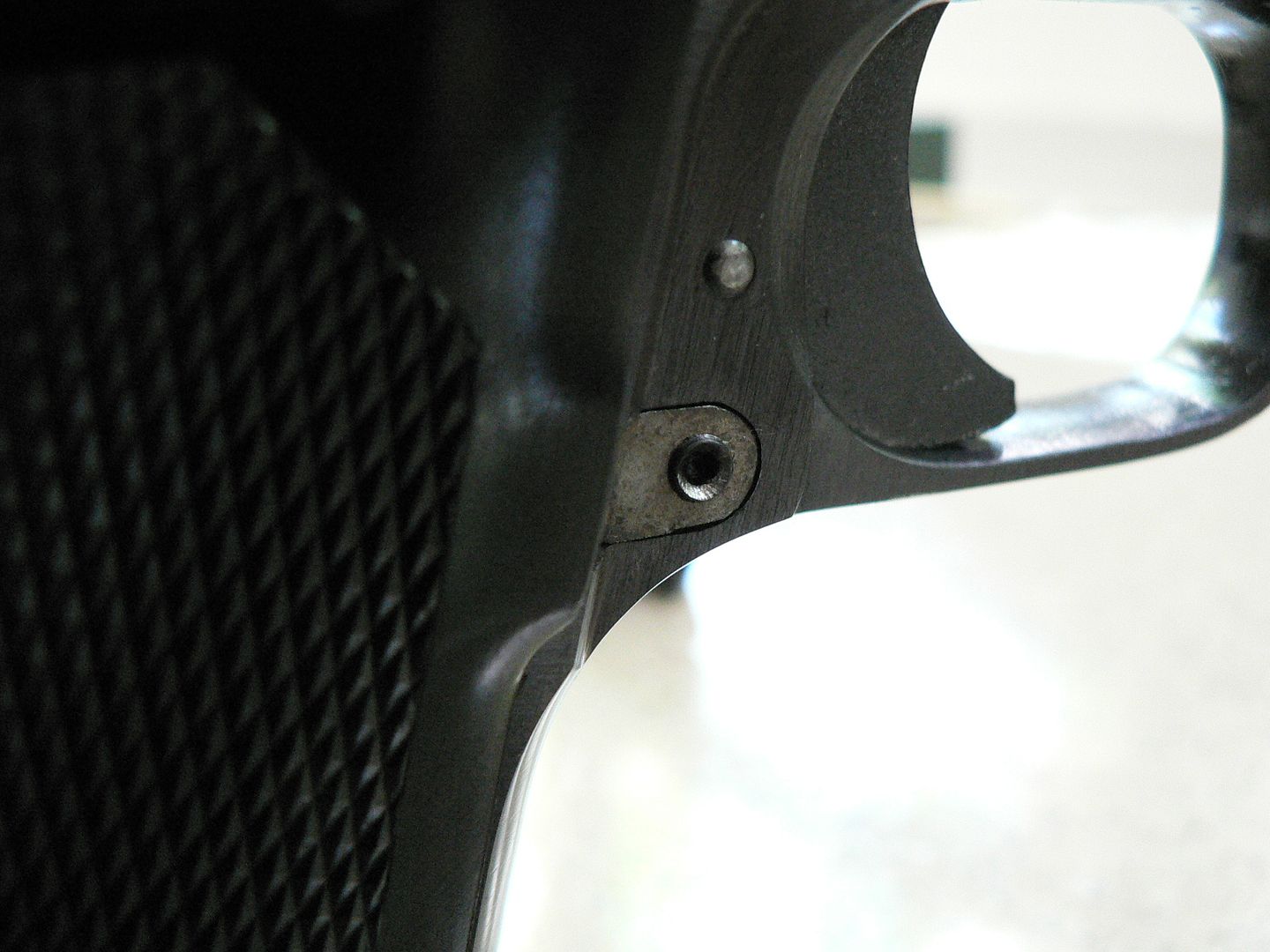 This appears to be in the white but discolored due to what I assume is hardening much like the barrel cradle. A close up of the right front frame rail:  A feature copied from the Hi Power, internal rails at the front of the frame: 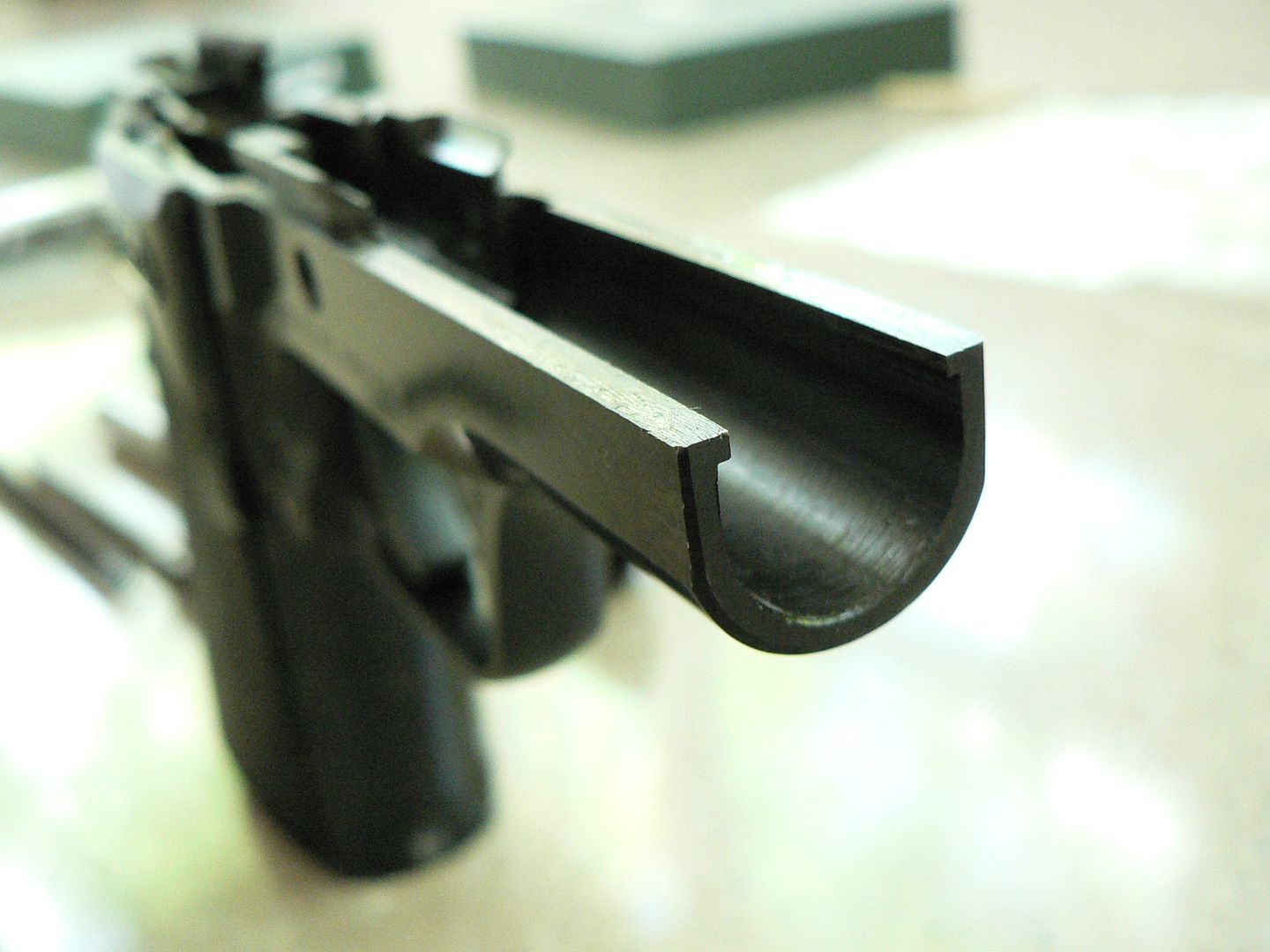 And the corresponding cut out on the slide: 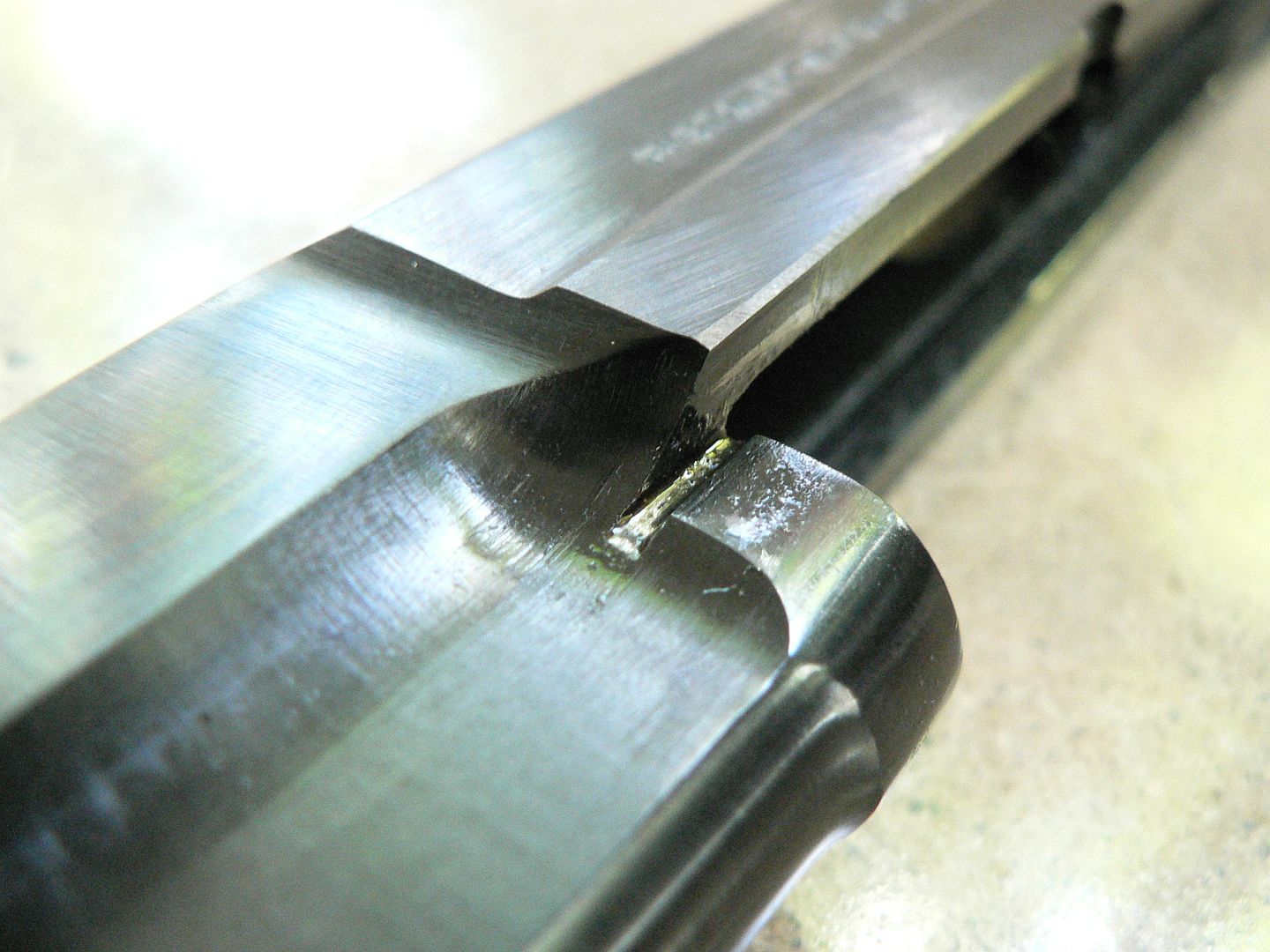 Here we see the cradle in place in the frame: 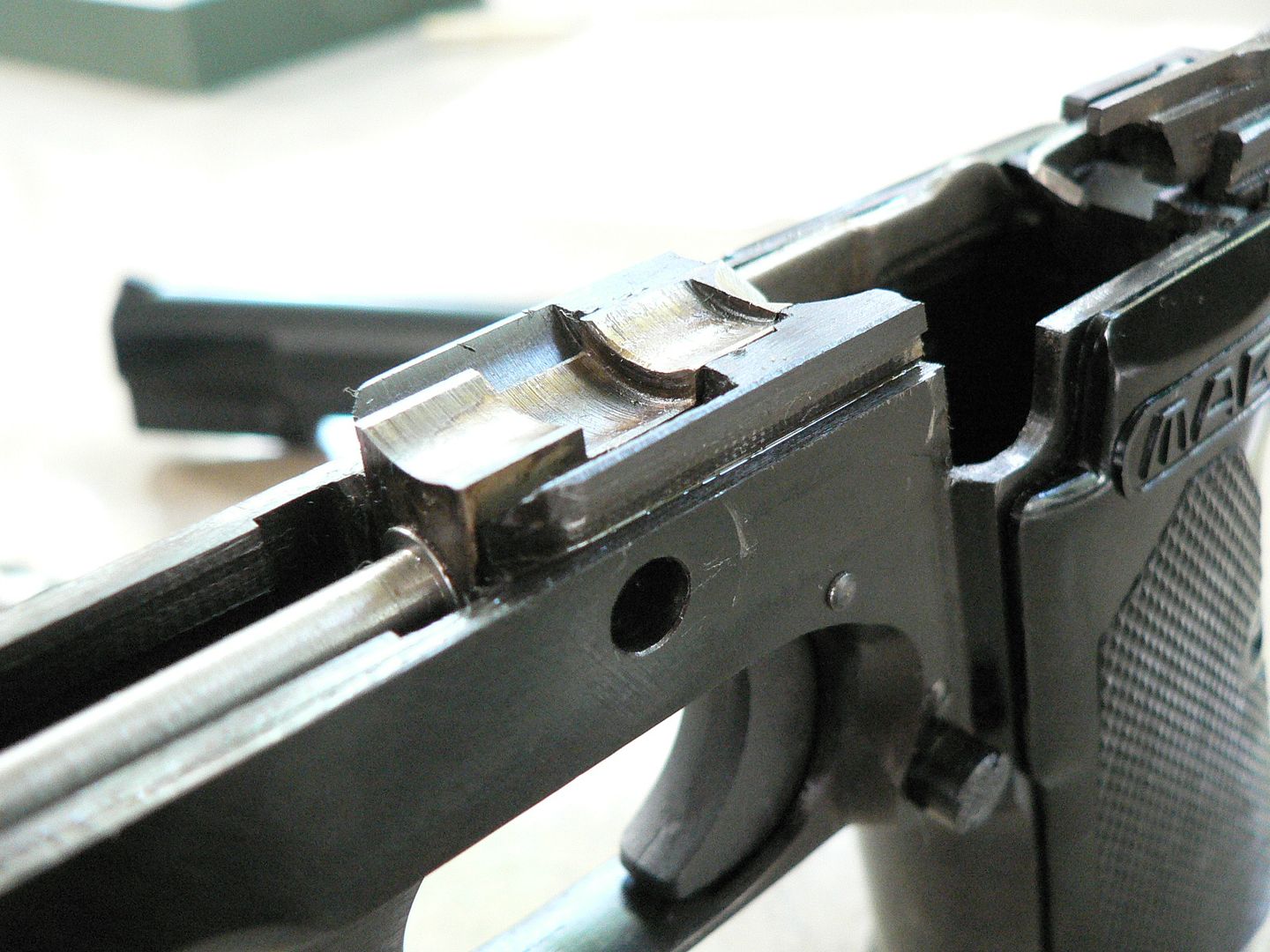 On this pistol it's a perfect fit. On the later Howco import we'll look at next, the cradle is so tight a fit that the slide must be firmly pulled forward upon disassembly for it to let loose. A detail shot showing the cradle and barrel in place illustrating how nicely machined the feed ramp is: 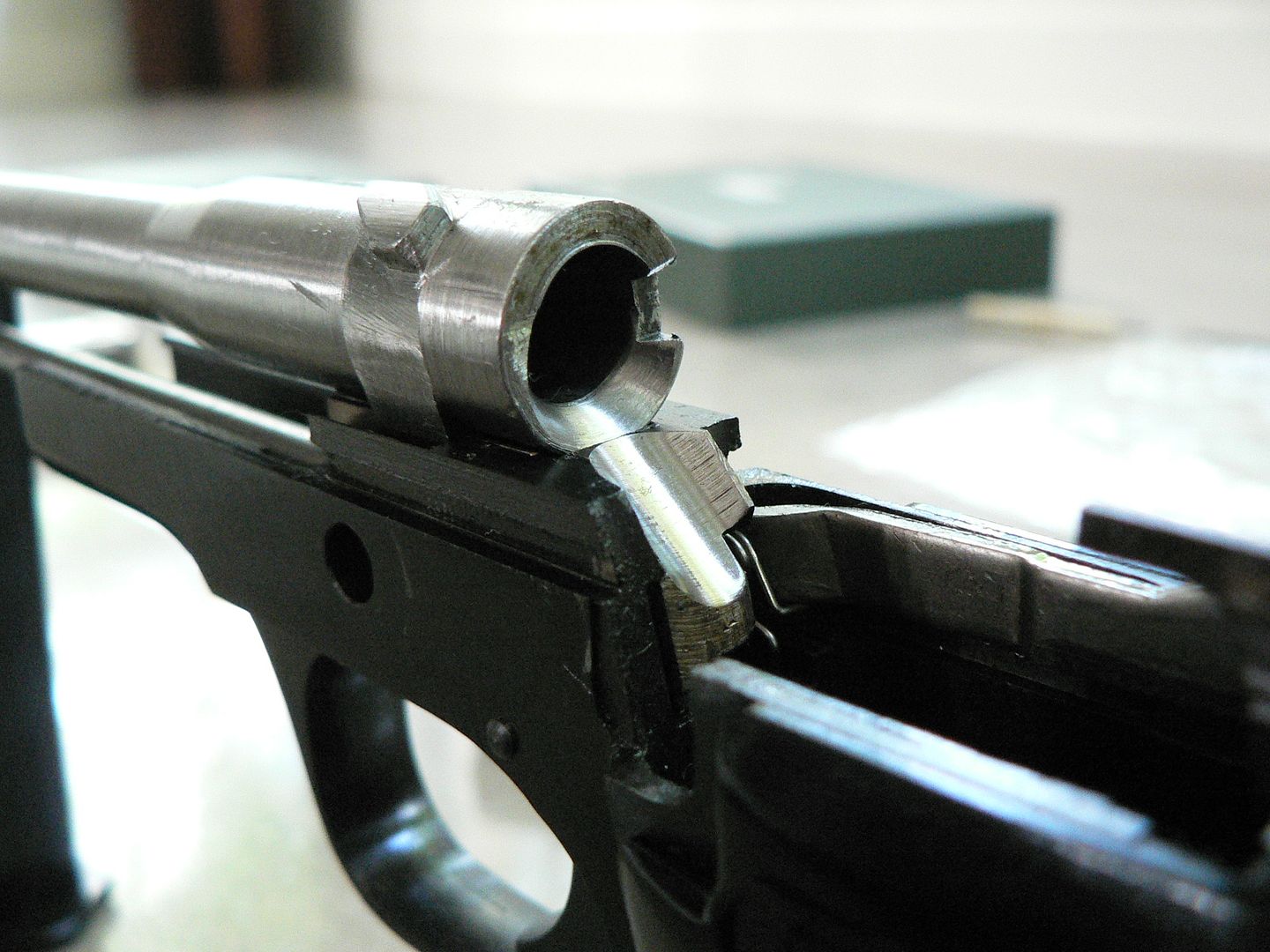 Because of the care taken during manufacturing (despite all the obvious machine marks), these pistols are known for excellent reliability. And another one with the magazine in place: 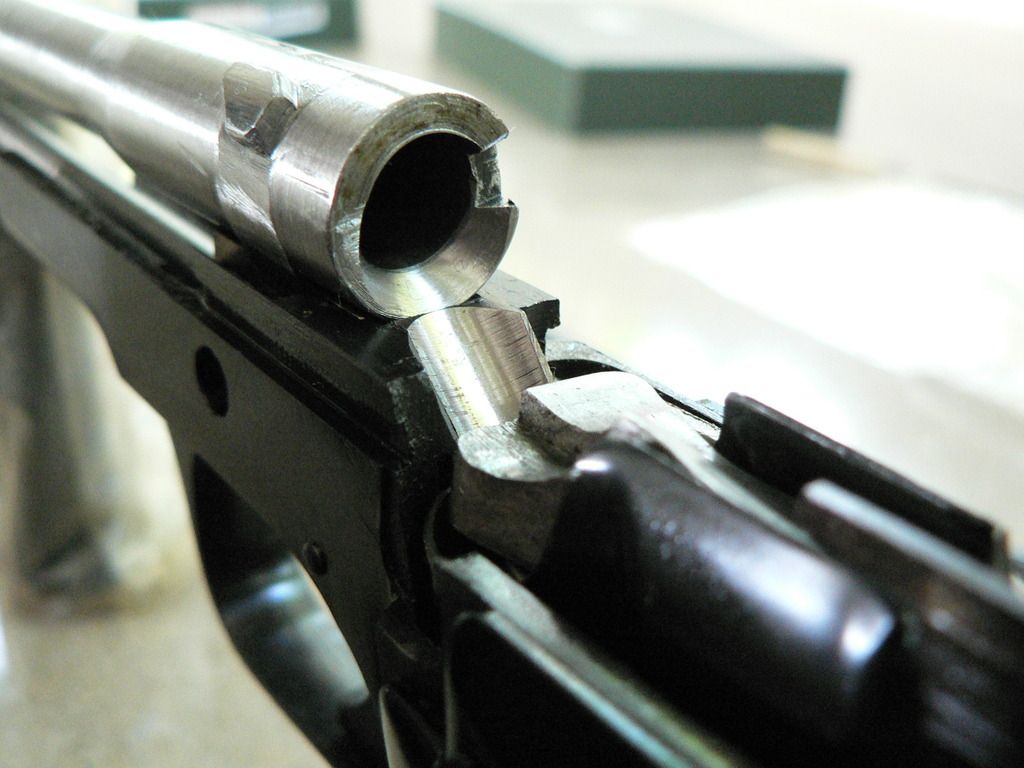 Speaking of magazines, lets take a look at one: 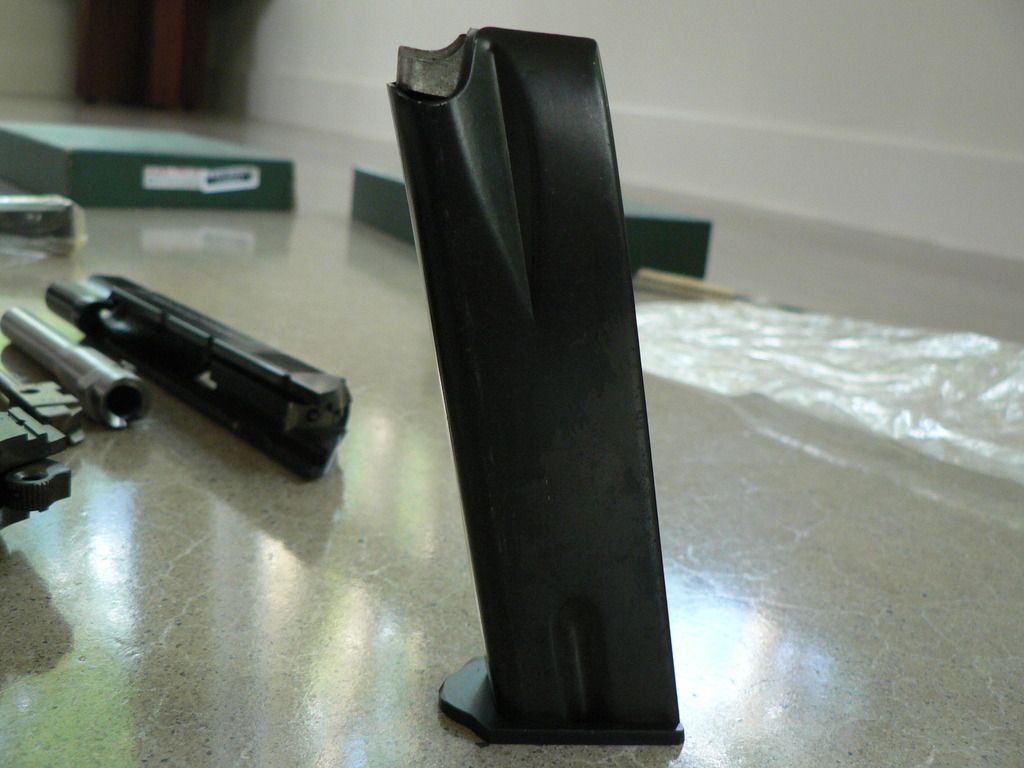 This is a typical example exhibiting a machined floor plate and cast metal follower. Very late ones have a stamped floor plate and a plastic follower as will be evidenced when we look at the Howco example. The plastic follower flies in the face of most online sources which state that ALL original magazines have metal ones. I beg to differ. Some details of the typical magazine shown above: 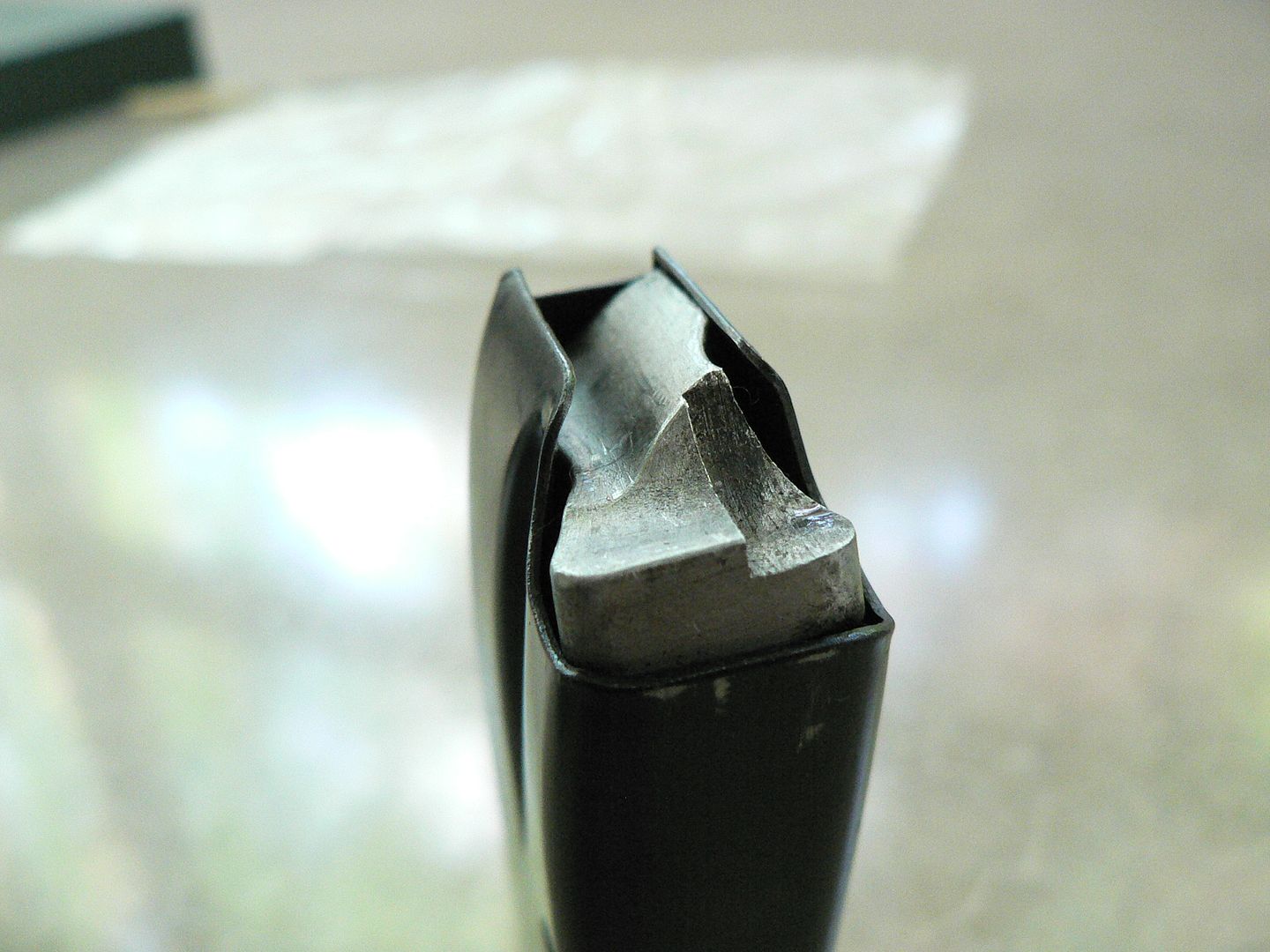  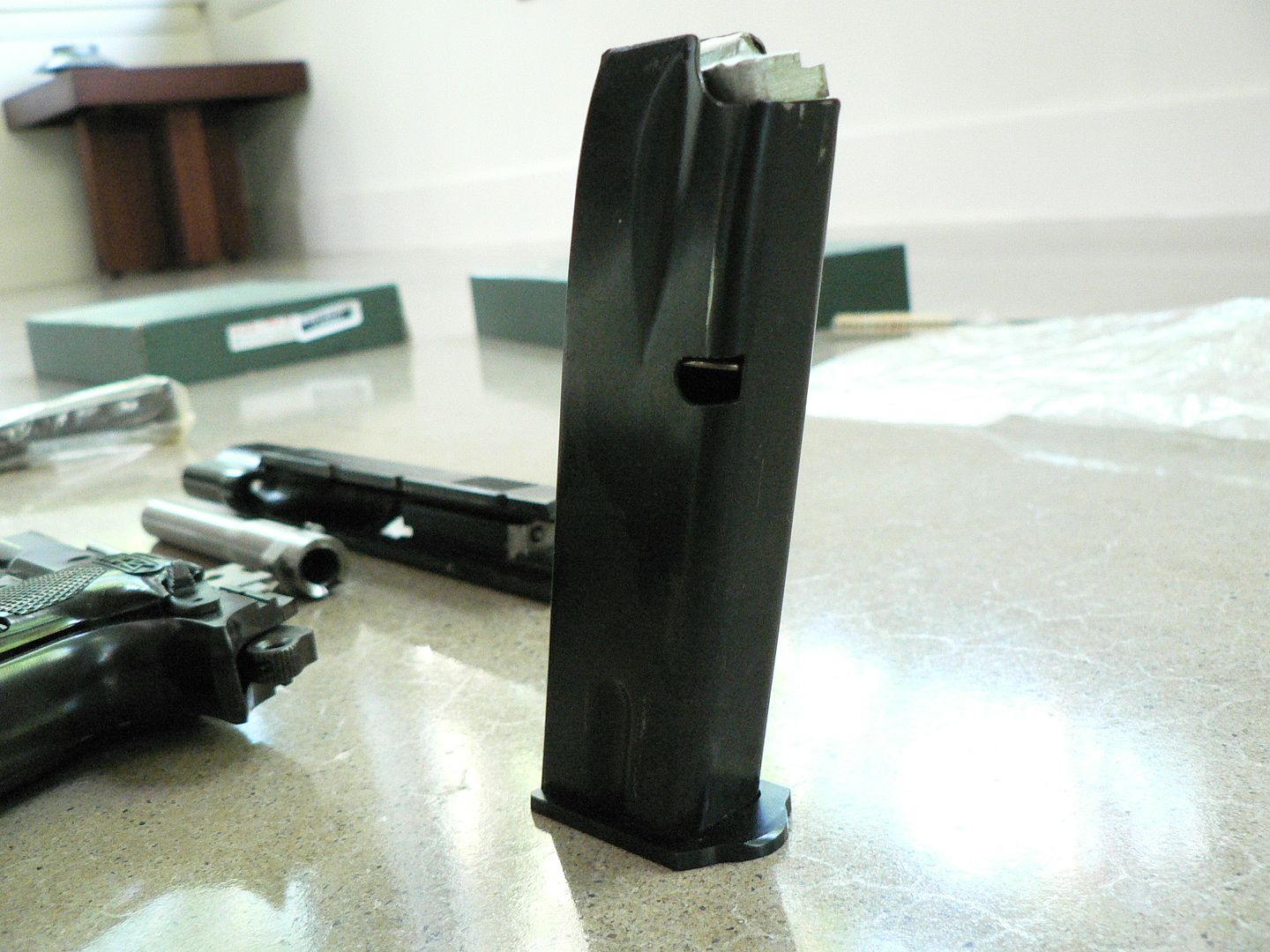 That's it for now. In the next post, we'll look at a later Howco import example. Hopefully that will happen in less then the 2 1/2 years it took me to post this one!! See you then.
__________________
I promise to be nice and play well with others |
|
|

|
|
|
#3 |
|
User
Join Date: Oct 2007
Location: Maryland
Posts: 340
Thanks: 43
Thanked 107 Times in 51 Posts
|
While the first pistol we looked at was an early example intended for European markets, this next one is a later example packaged and marked expressly for the US market. For the most part, the pistol is identical except for the markings. The packaging is different for the US market too. Mechanically, it is slightly different but that has more to do with an evolution of the design than a change for American shores. When looking at the following pictures, I recommend that you compare and contrast them with the example posted earlier. We'll start with the box:
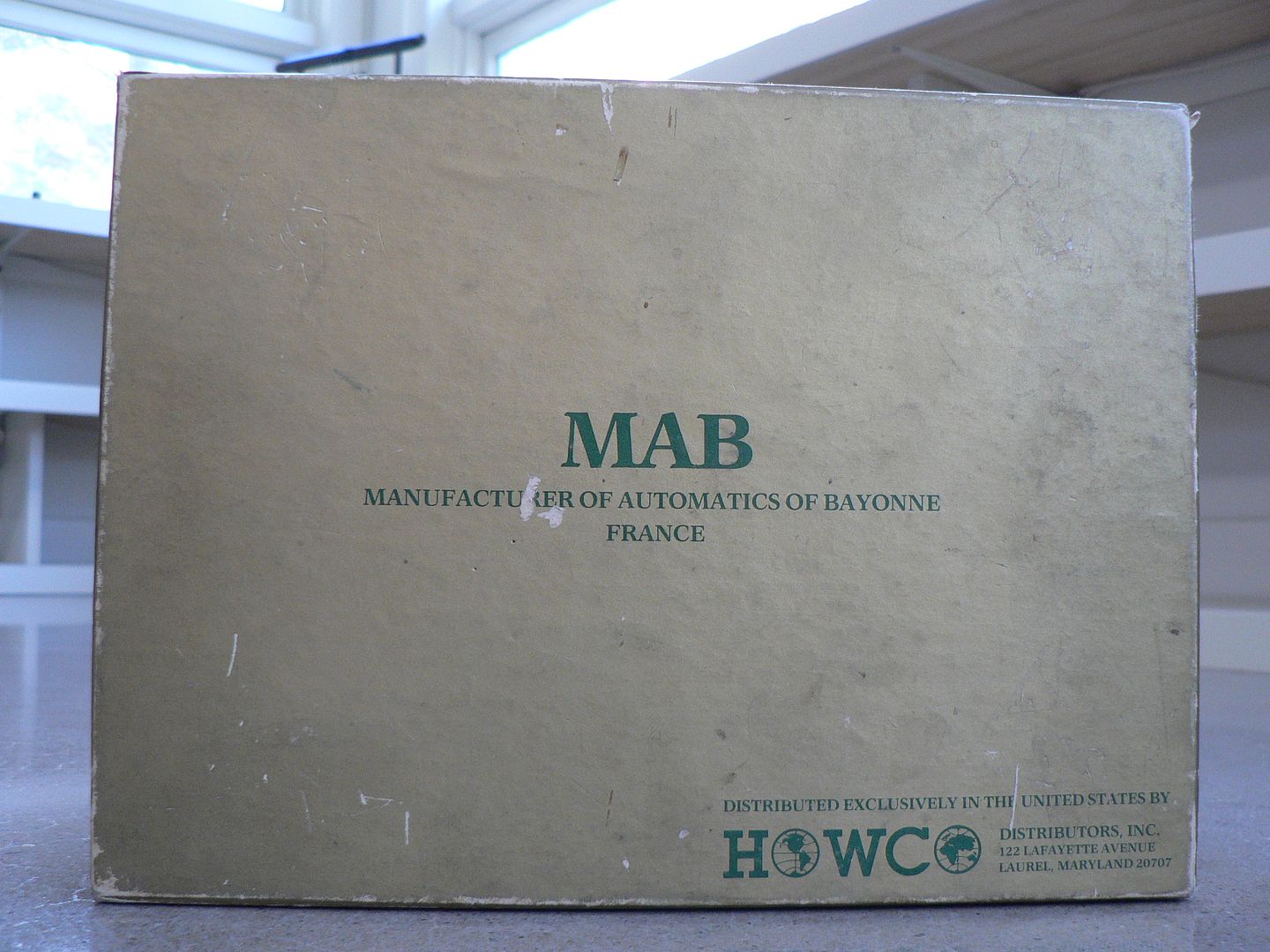 It's a gaudy 1970's gold color with green lettering. Surprisingly, the dimensions differ slightly from the European box. Clearly it's intended for the US market and, while the grammar is a bit awkward, it does the job. But considering its construction details, I believe it to be made in France. I'll post a comparison of the two at the end of this article. Other than the top, the only other markings are on the right edge: 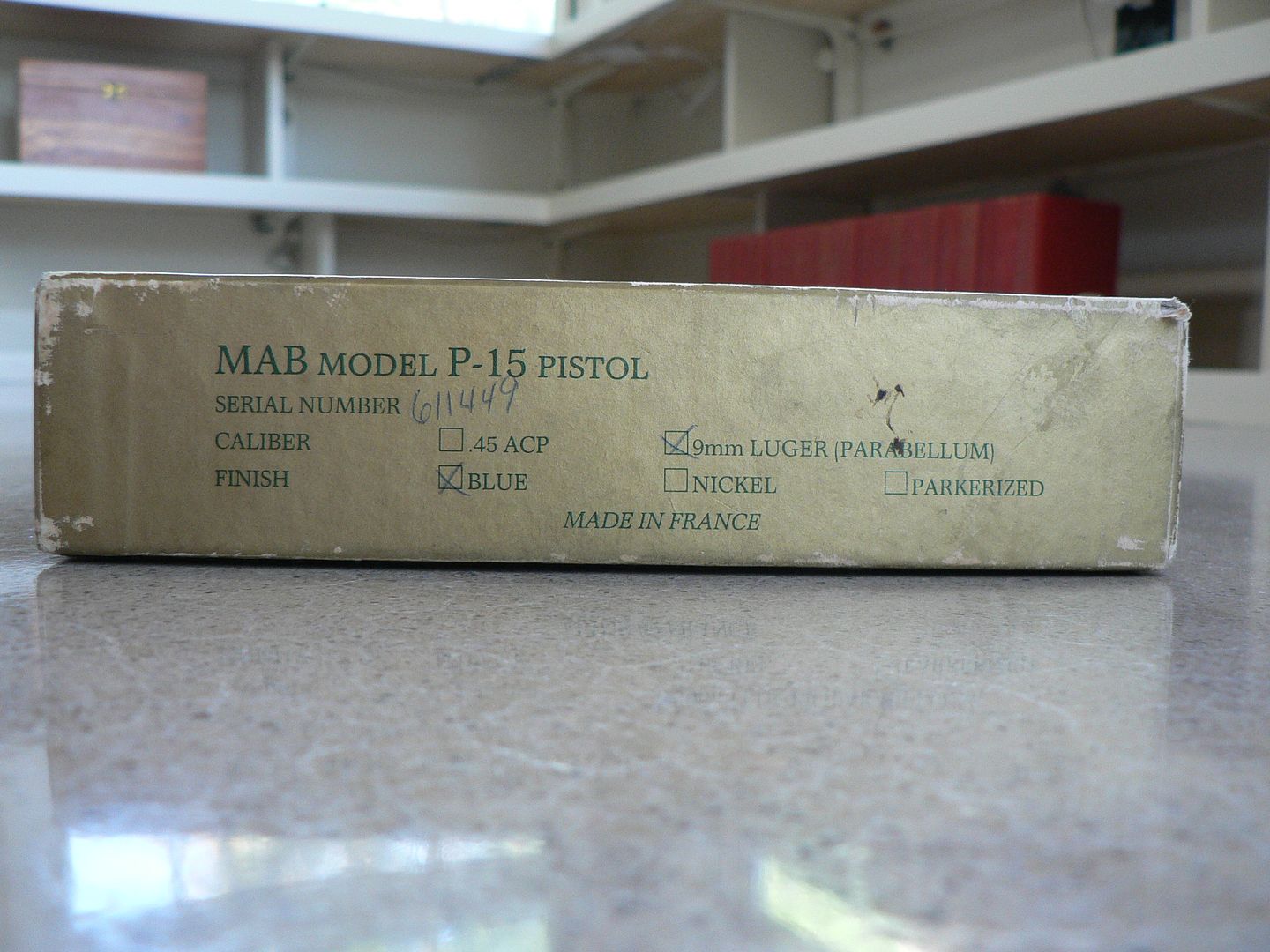 Clearly, the PA-15 was offered in three finishes and two calibers at the time this one was made. I've never seen a nickel one but they were obviously made. Box top removed:  Notice that only one magazine was included with this one. The bag it was wrapped in is shown folded up and laying in the box top. it's the same as the bag we saw earlier. Originally, this most likely came with a United States specific manual in boring black and white (which may in fact have been printed in this country) but that has been lost to time. It may have also been imported with the certificate shown previously and a cleaning brush but that is speculation. Here, we see the pistol removed showing the shaped insert which is glued in place:  Right side profile: 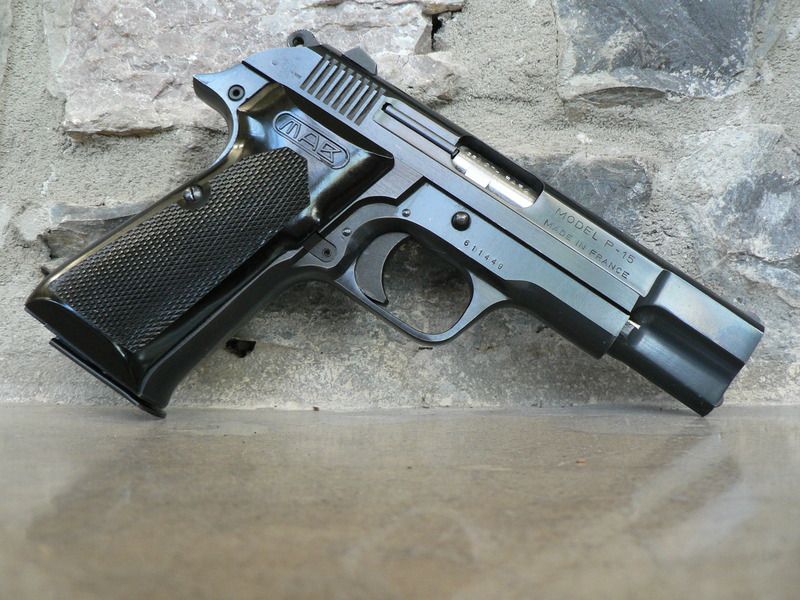 Again, compare and contrast this and the following photographs with the earlier European market example shown previously and you'll see quite a difference in the markings. Left side: 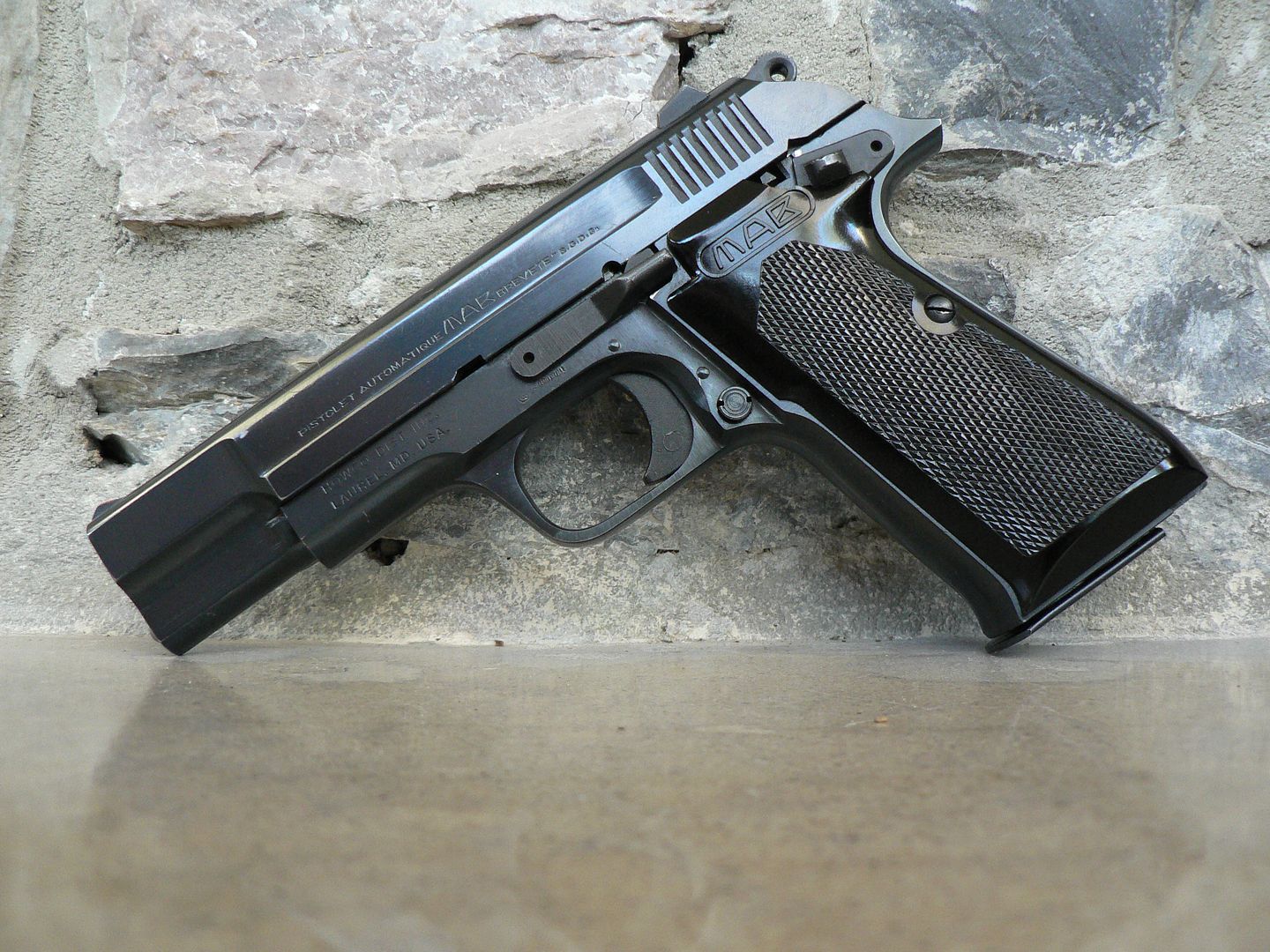 Import marking: 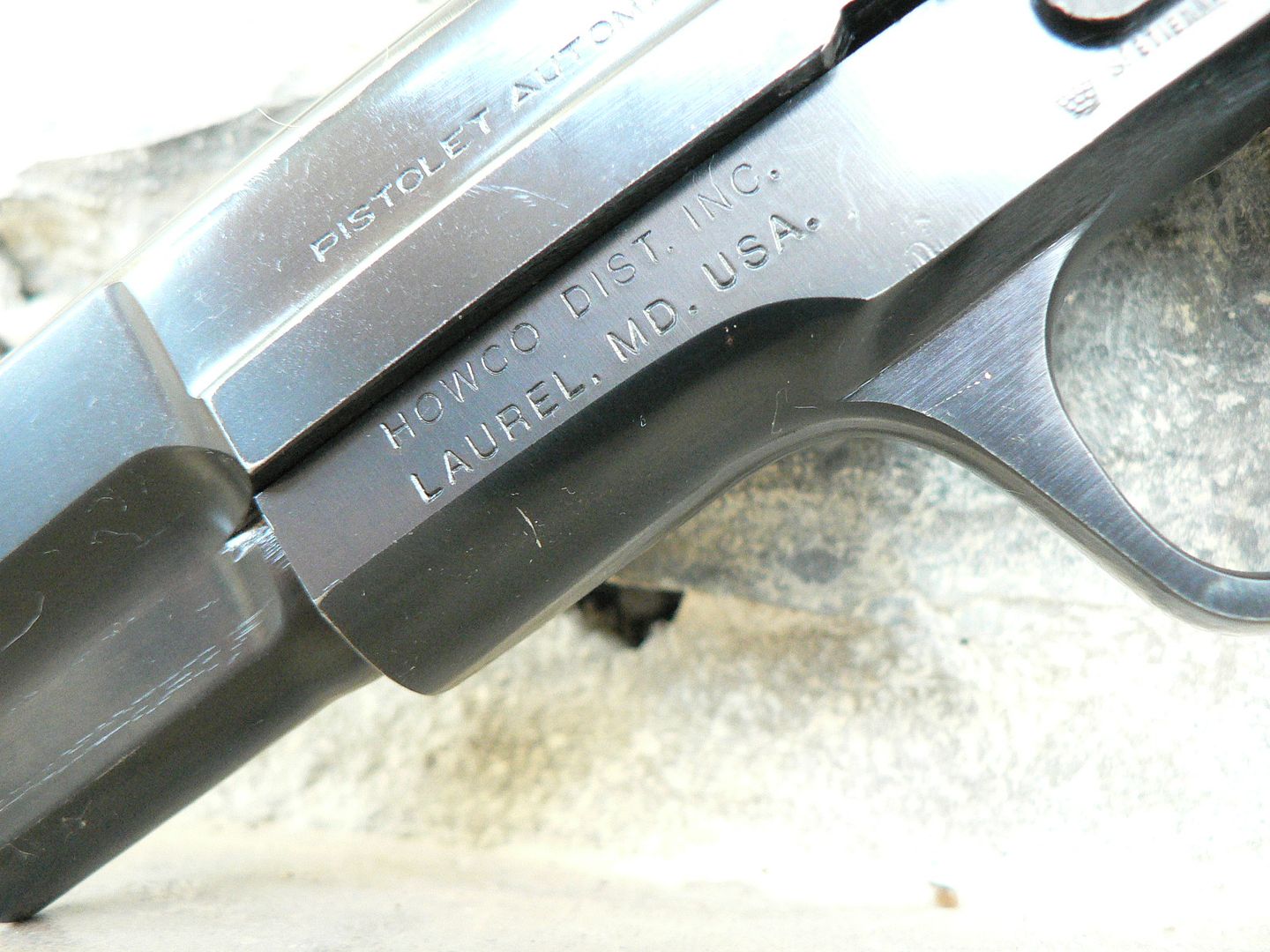 As it doesn't appear to cut through the bluing, I can only surmise that this may have been applied in France during manufacture. Frame inspection proof: 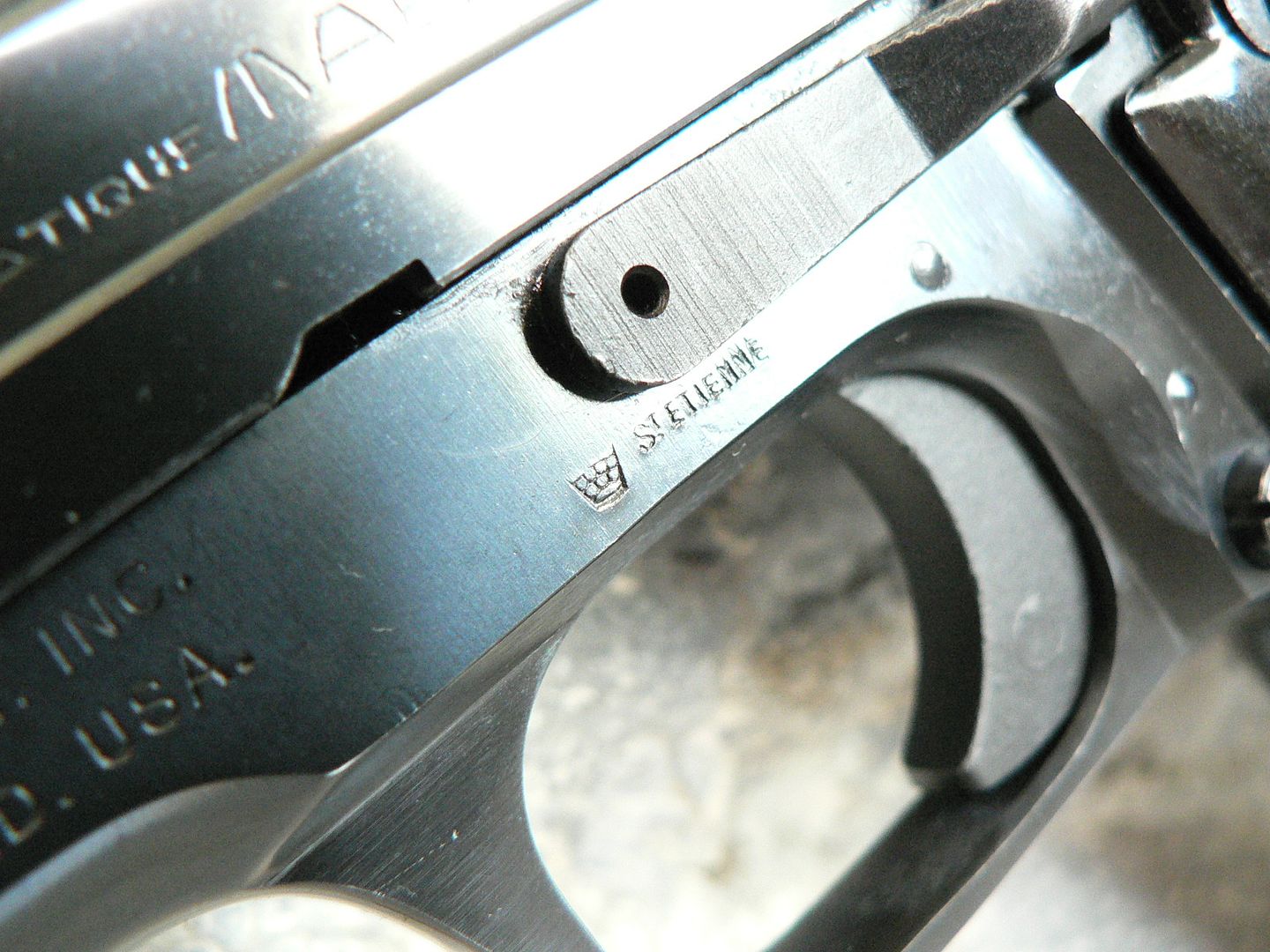 The magazine release on these later examples exhibits concentric circles: 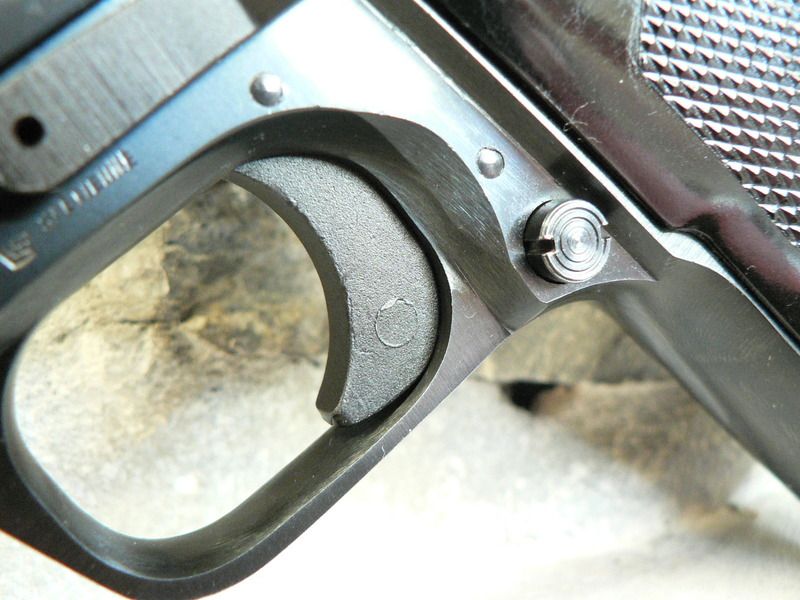 Also notice the ejection pin mark on the trigger. This is a dead giveaway that the trigger was cast. Moving over to the right side, we see the model designation and country of origin: 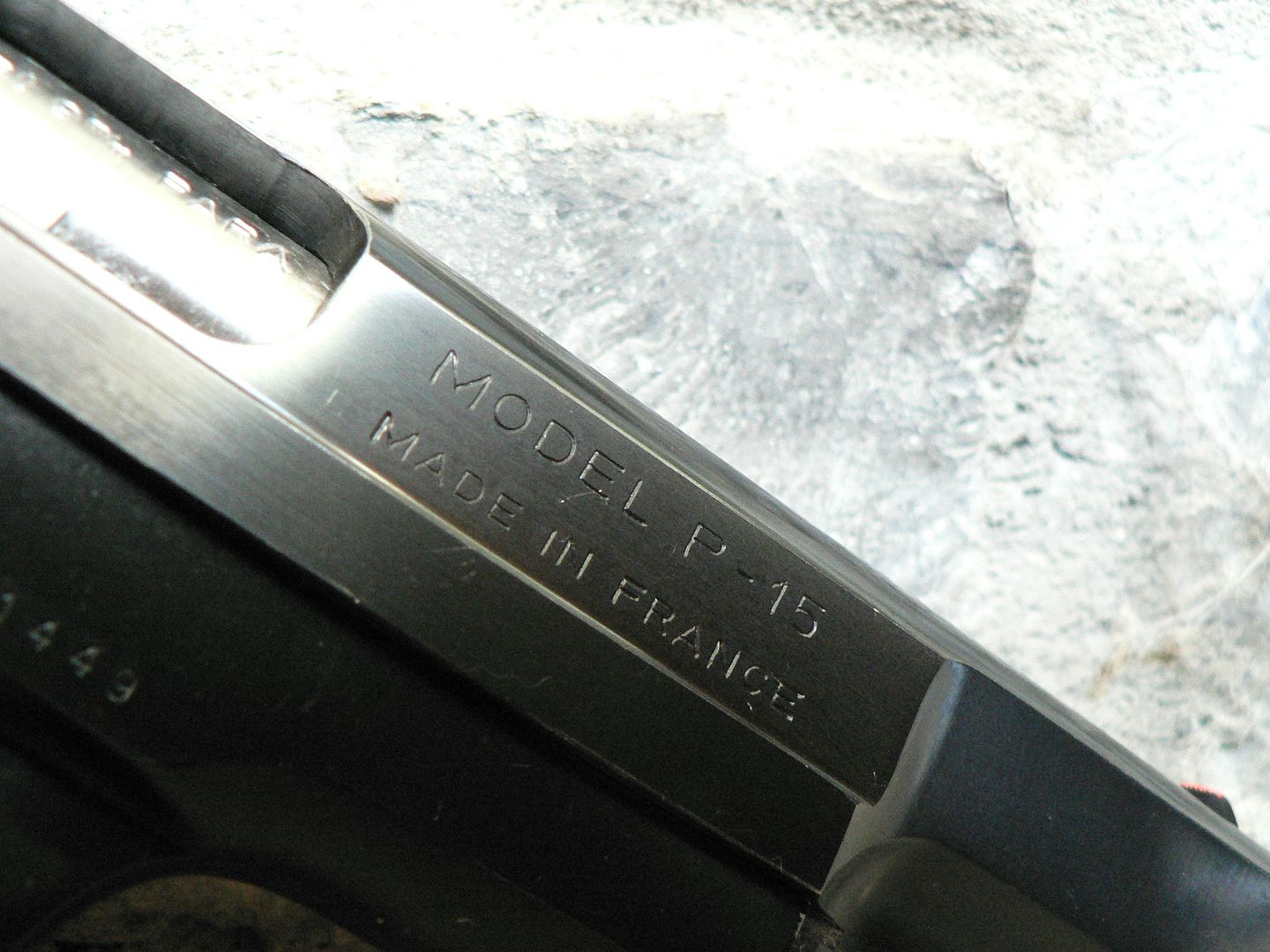 The slide proof mark: 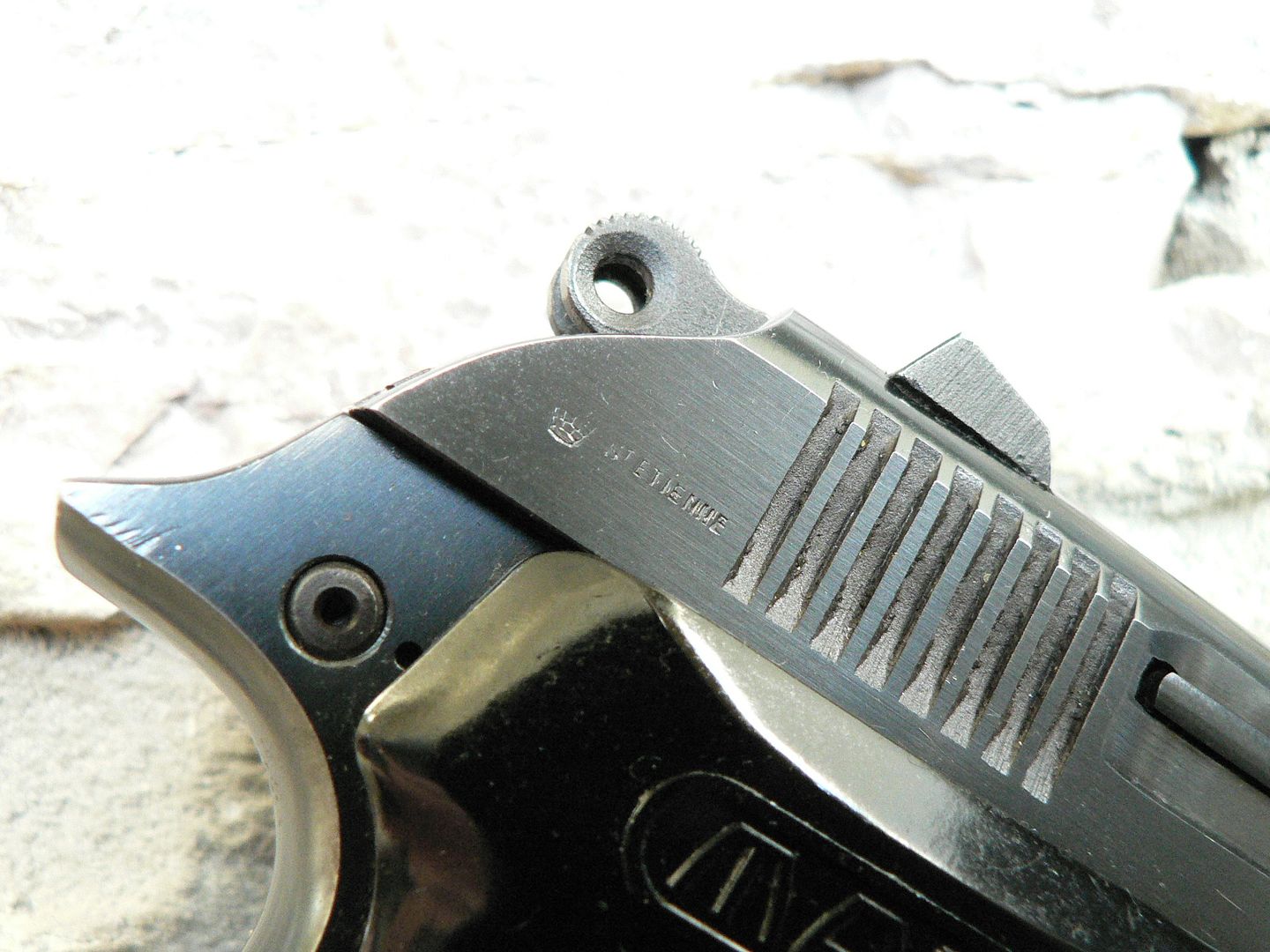 Serial number: 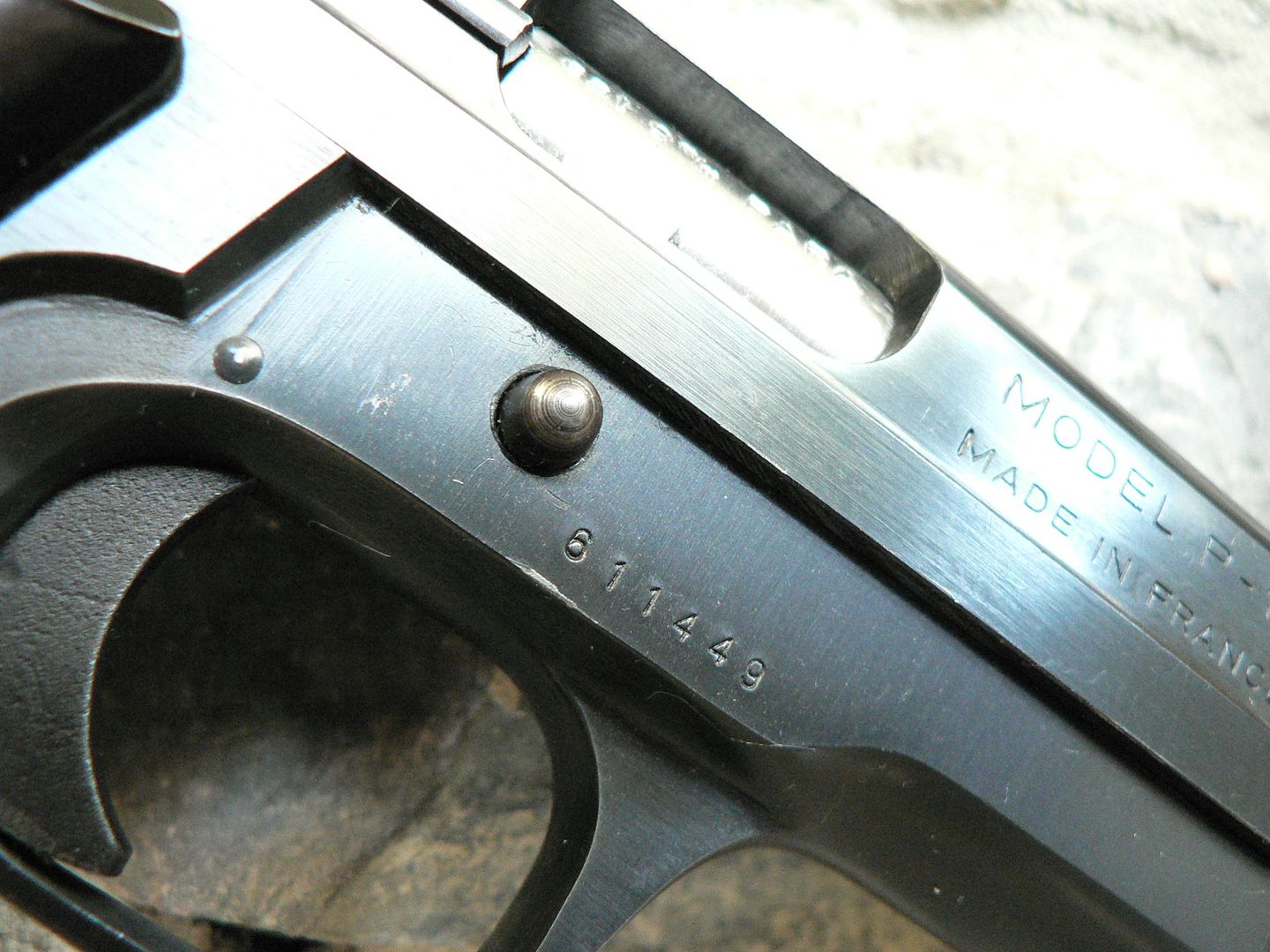 Where the magazine catch was fire blued on the earlier one, the bluing on this example matches the frame:  At the front of the slide, we can clearly see the barrel bushing: 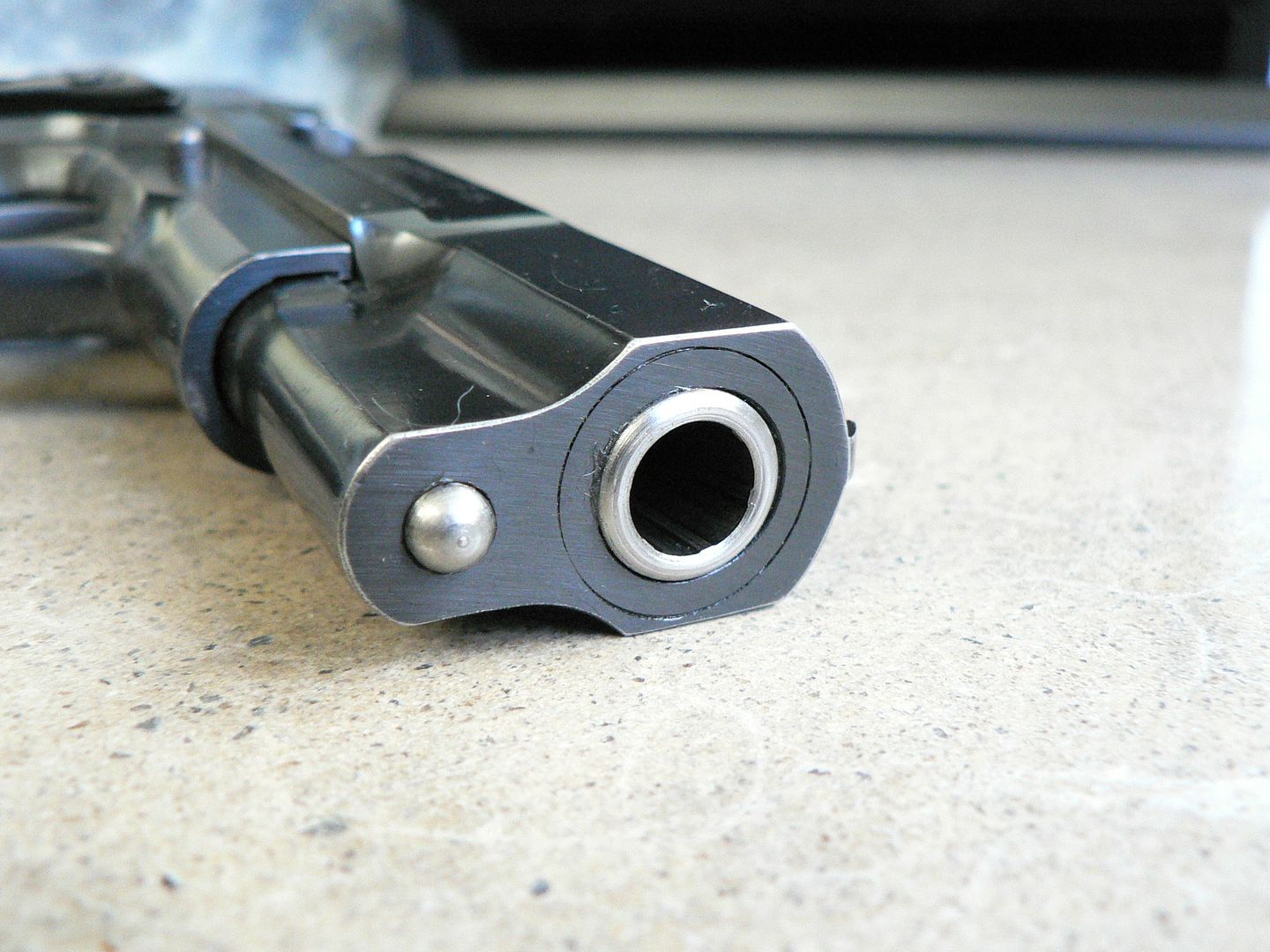 On the earlier example, the bushing was much less visible but the grinding marks were plainly seen. As we'll see later, this particular pistol shows an overall more polished appearance than the previously illustrated one. Apparently, the grips on these are brittle. Judging by the slightly bunged up grip screws, this one has them removed in the past. The right grip shows cracking around the screw, indicating that it was overtightened at some point: 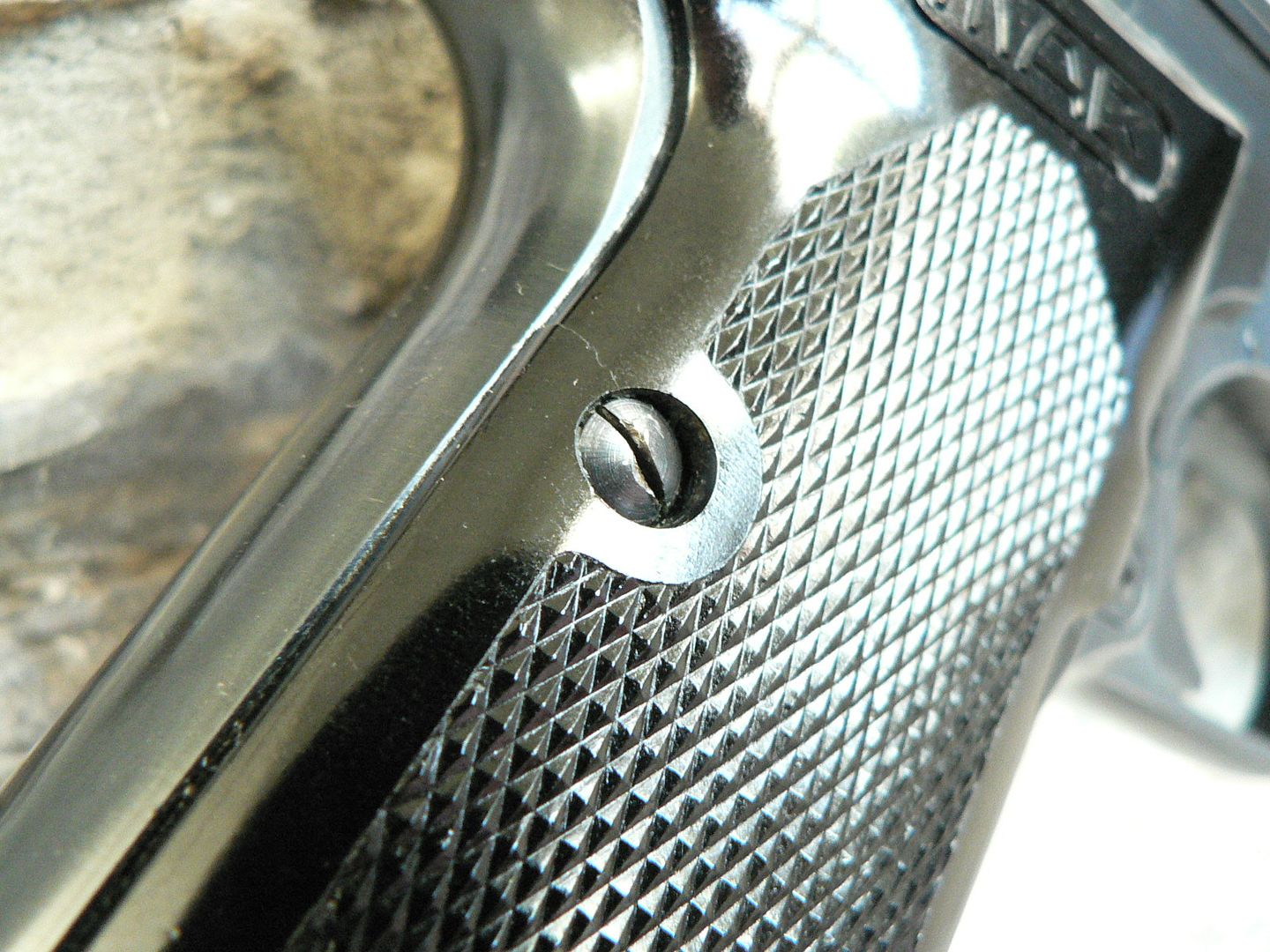 The left one is also chipped at the upper rear:  For comparison purposes, here is the same area on the previously illustrated pistol: 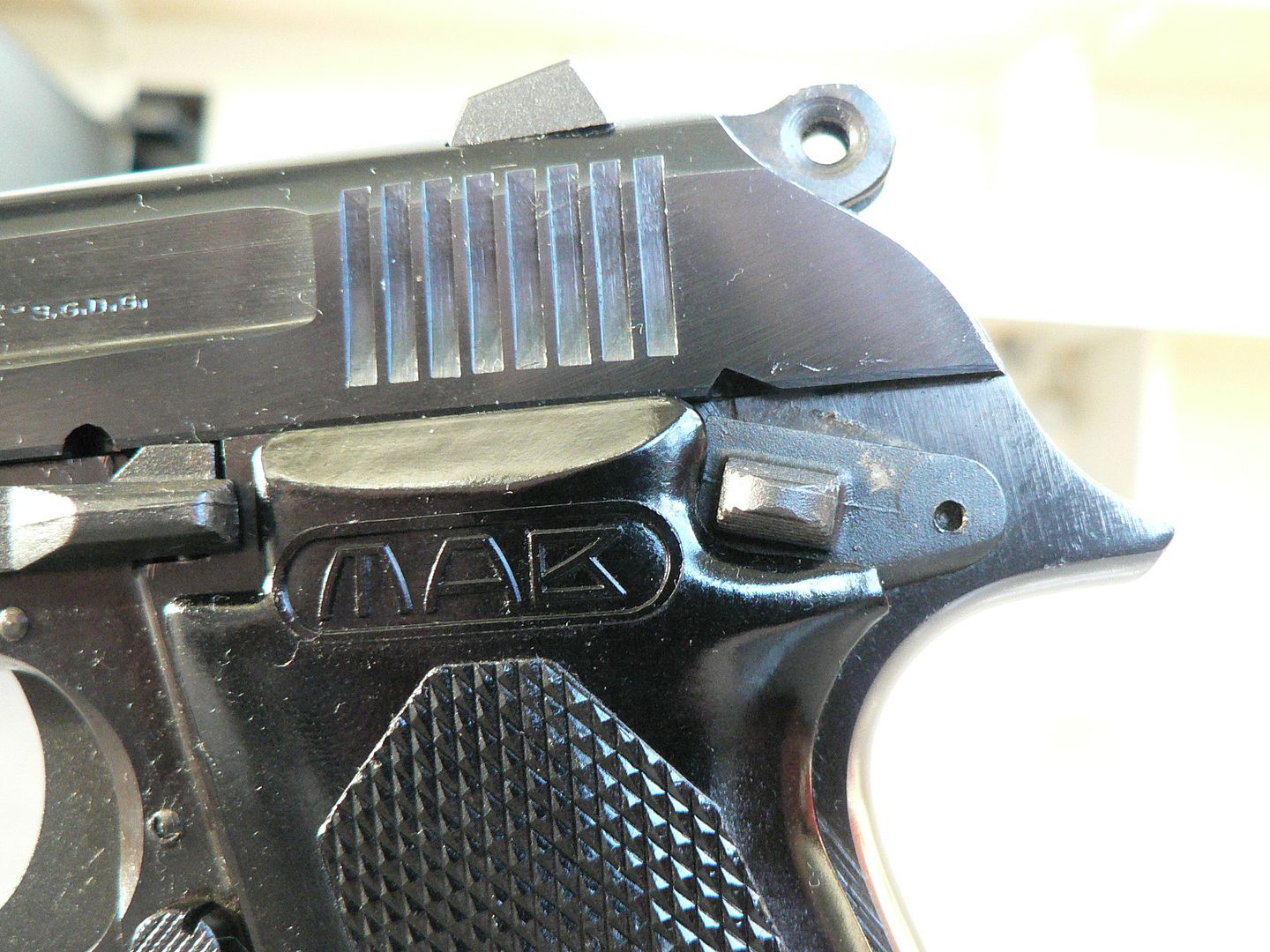 In the next post, we'll disassemble this one and gawk at the innards. Check back in a bit for that and until then, enjoy life and spend a day at the range. Its good fun and a great stress reliever. Bye for now!
__________________
I promise to be nice and play well with others |
|
|

|
|
|
#4 |
|
User
Join Date: Oct 2007
Location: Maryland
Posts: 340
Thanks: 43
Thanked 107 Times in 51 Posts
|
Here is the slide stop removed from the pistol:
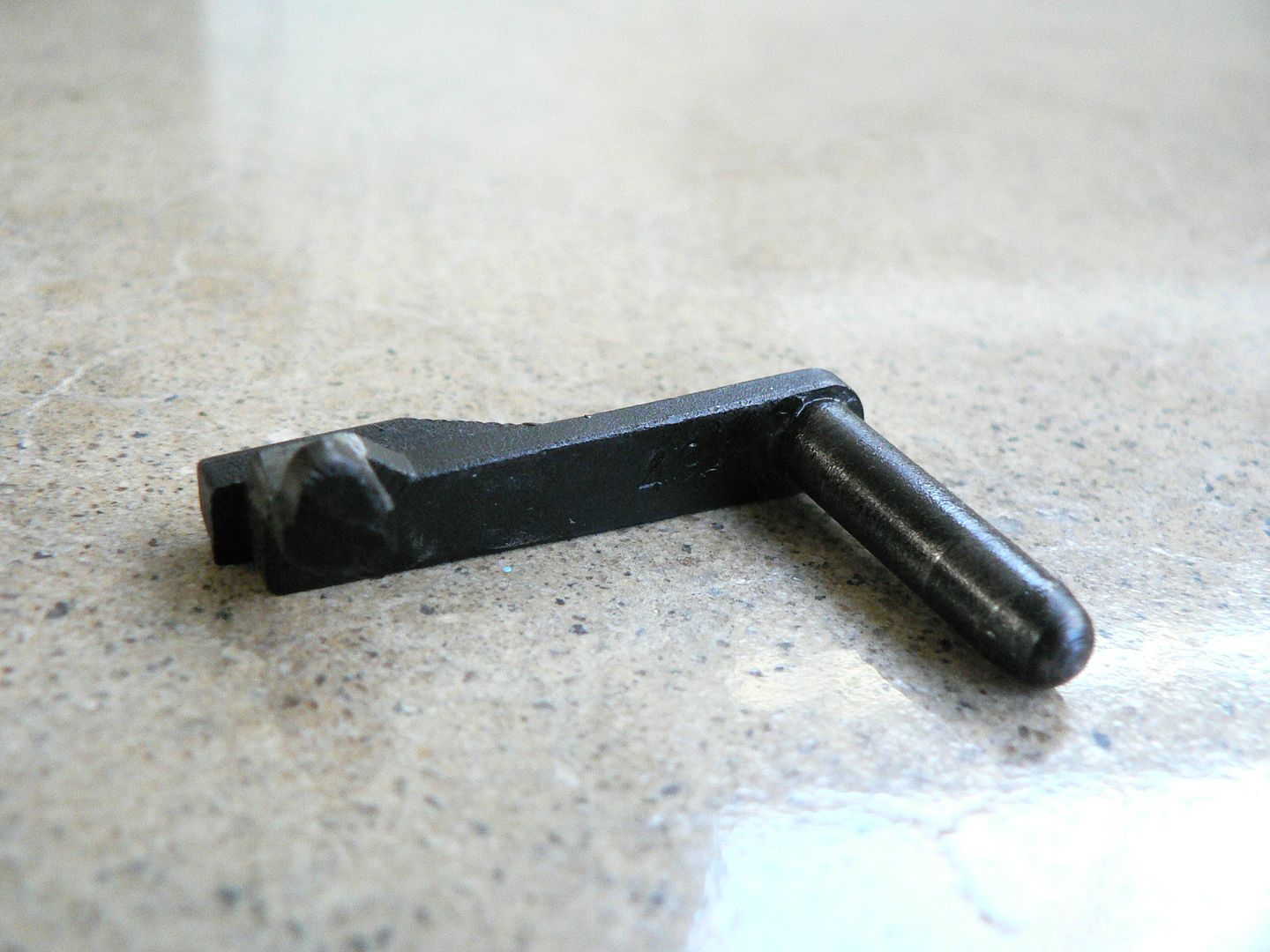  It's either forged or cast. "49" is the last two digits of the serial number. We saw this on the other example too. The last two digits are also seen on the ejector: 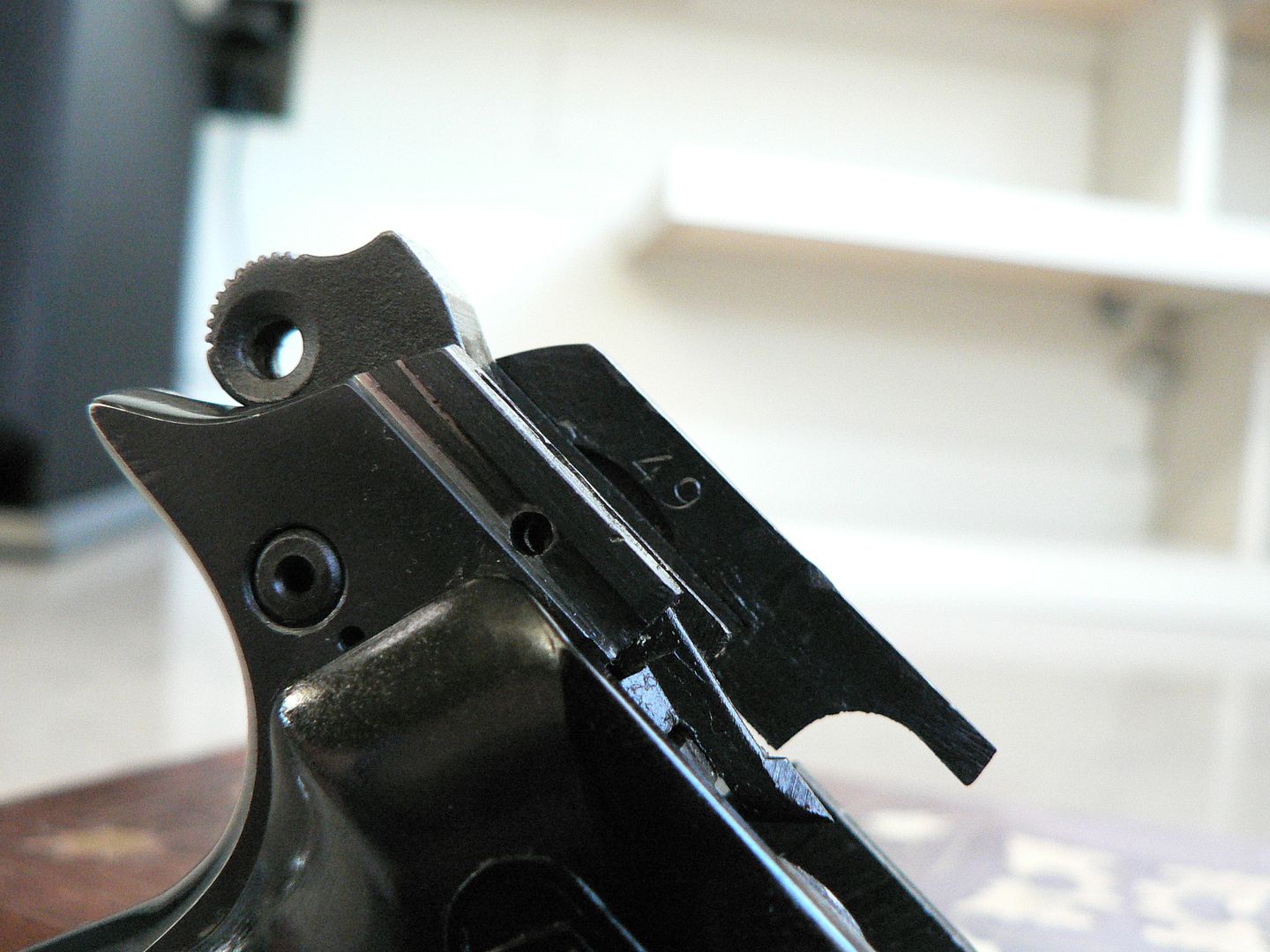 A look into the trigger group: 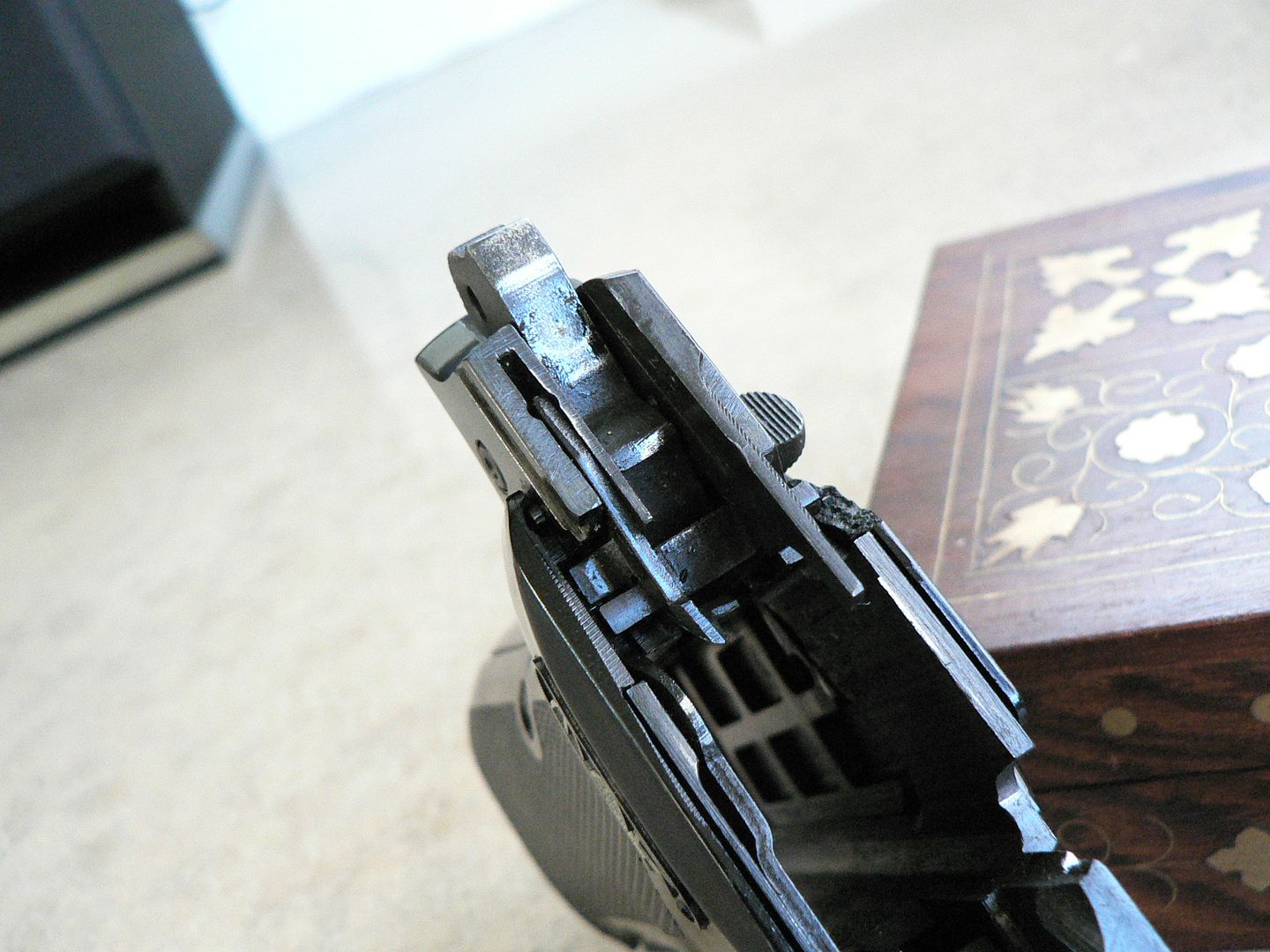 The pointy thingee that looks a bit like the tip of a knife blade projecting forward on the right side of the frame is the magazine safety lever: 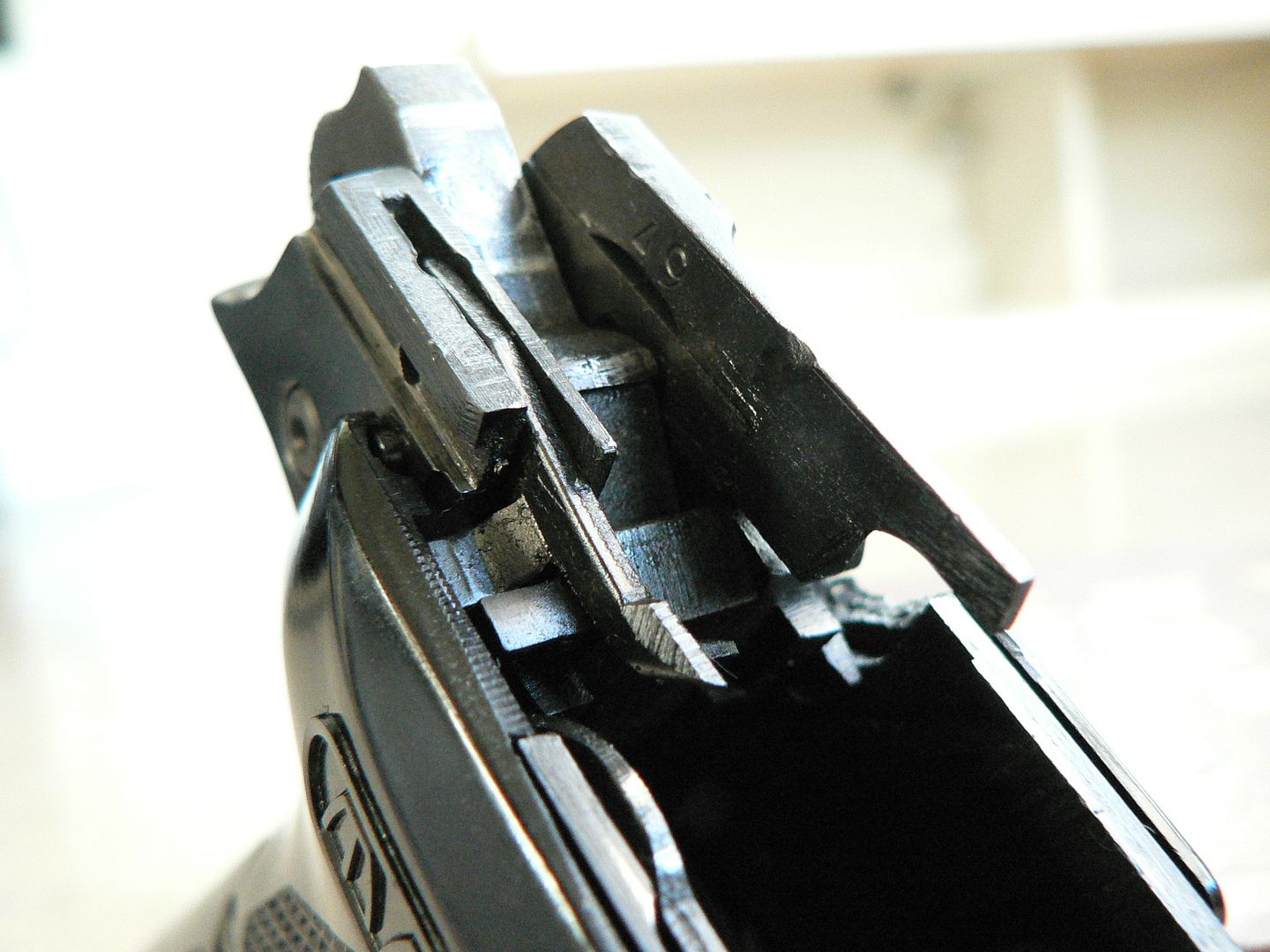 Without a magazine inserted, it rests in the position shown above and disconnects the trigger from the sear. When you insert a magazine, the back of it catches the tip of this lever and raises it slightly, allowing the trigger bar to then interact with the sear. A view into the bottom of the slide after removal from the frame but before disassemble: 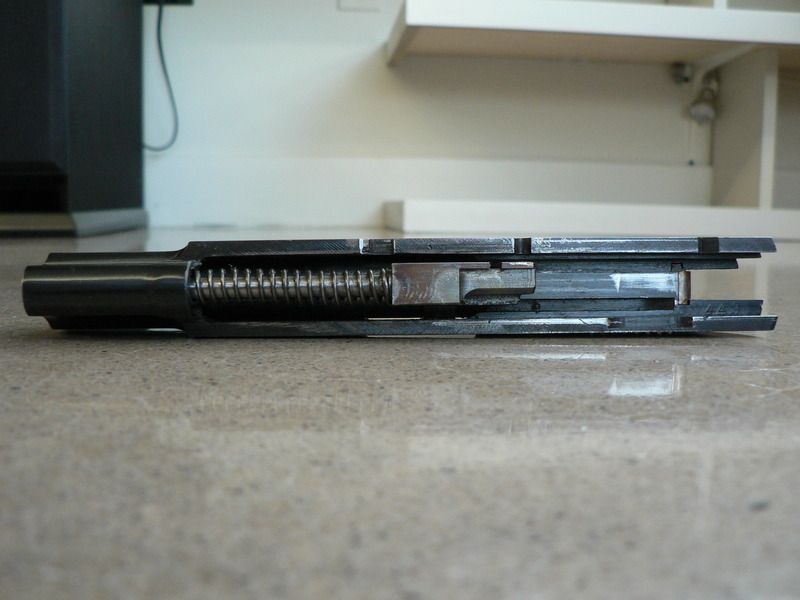 The last three digits of the serial number are stamped into the bottom rear of the slide: 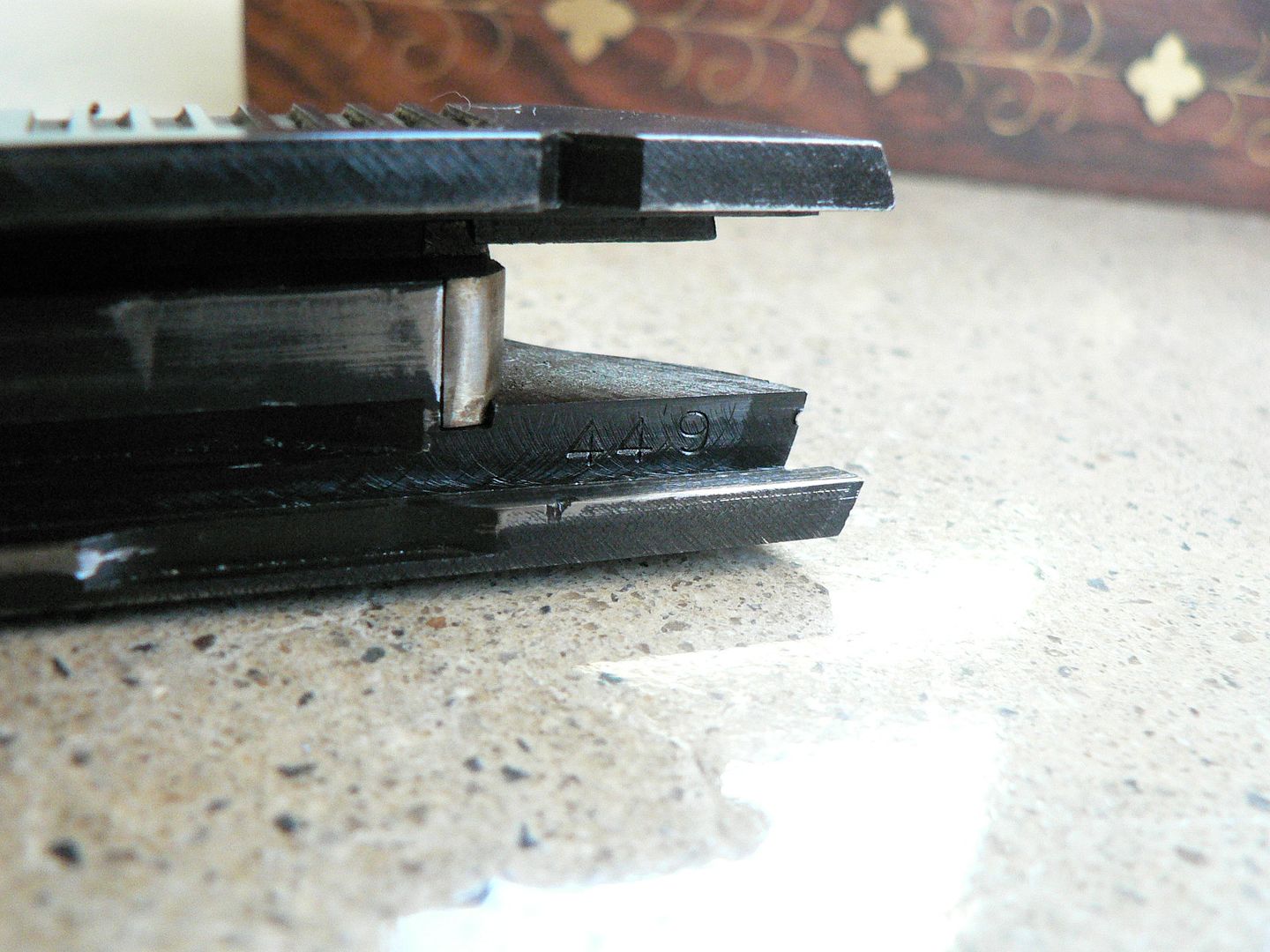 The firing pin is retained in a typical way:  To remove it, you just press it in with a toothpick or some other small tool and then slide the retaining plate down. Next, you search your kitchen for 10 minutes looking for the firing pin that went flying out the back under spring tension. Then, when it's nowhere to be found, you realize your dog already scarfed it up so you follow him or her around for the next few days searching through his or her poop until you find it. Life is grand. A general rear view of the slide: 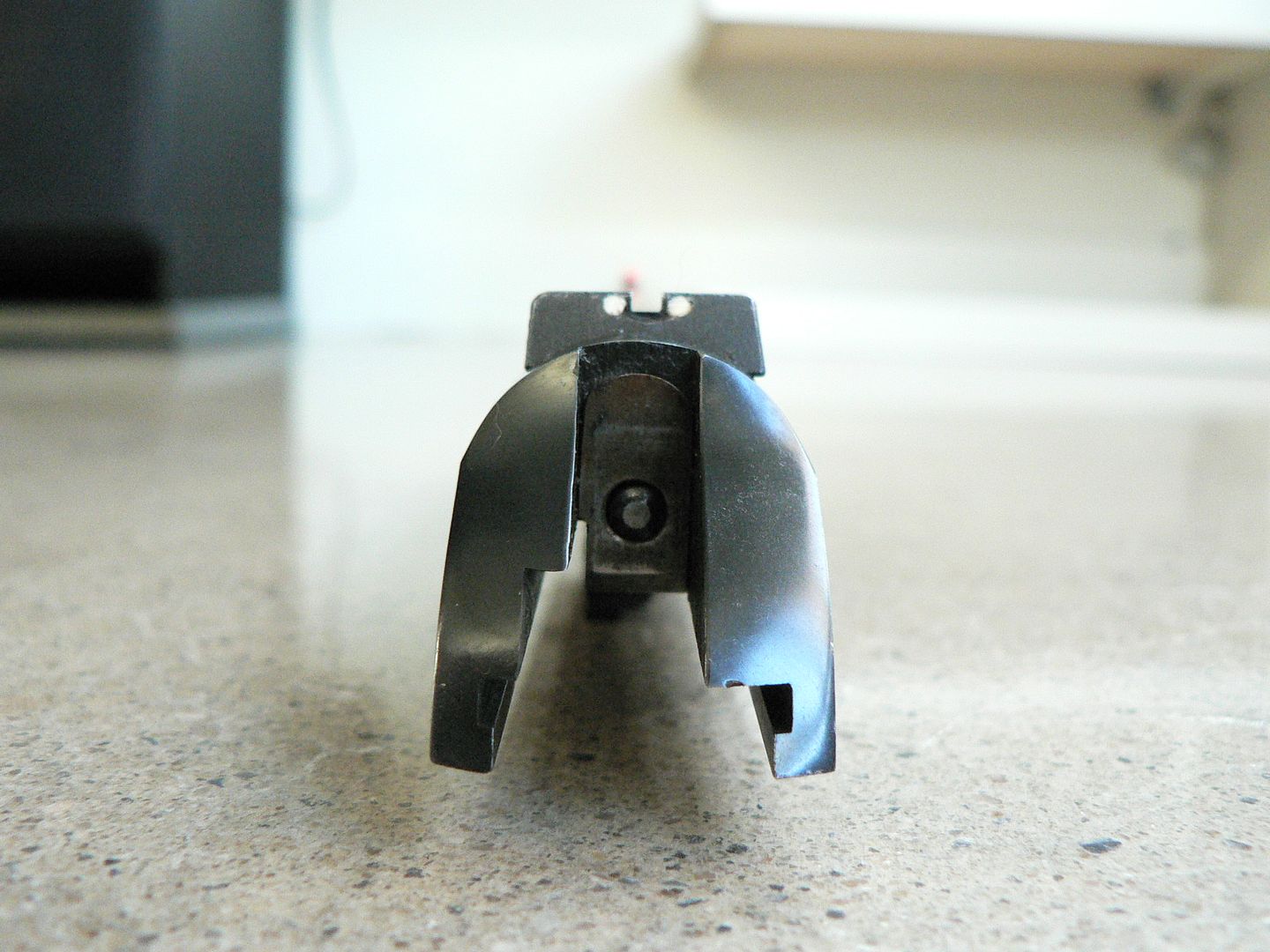 Note that this one has white dots painted on the rear sight where the earlier one had no dots. While I cannot 100% guarantee that these were applied at the factory, they appear to be so to me. Another view: 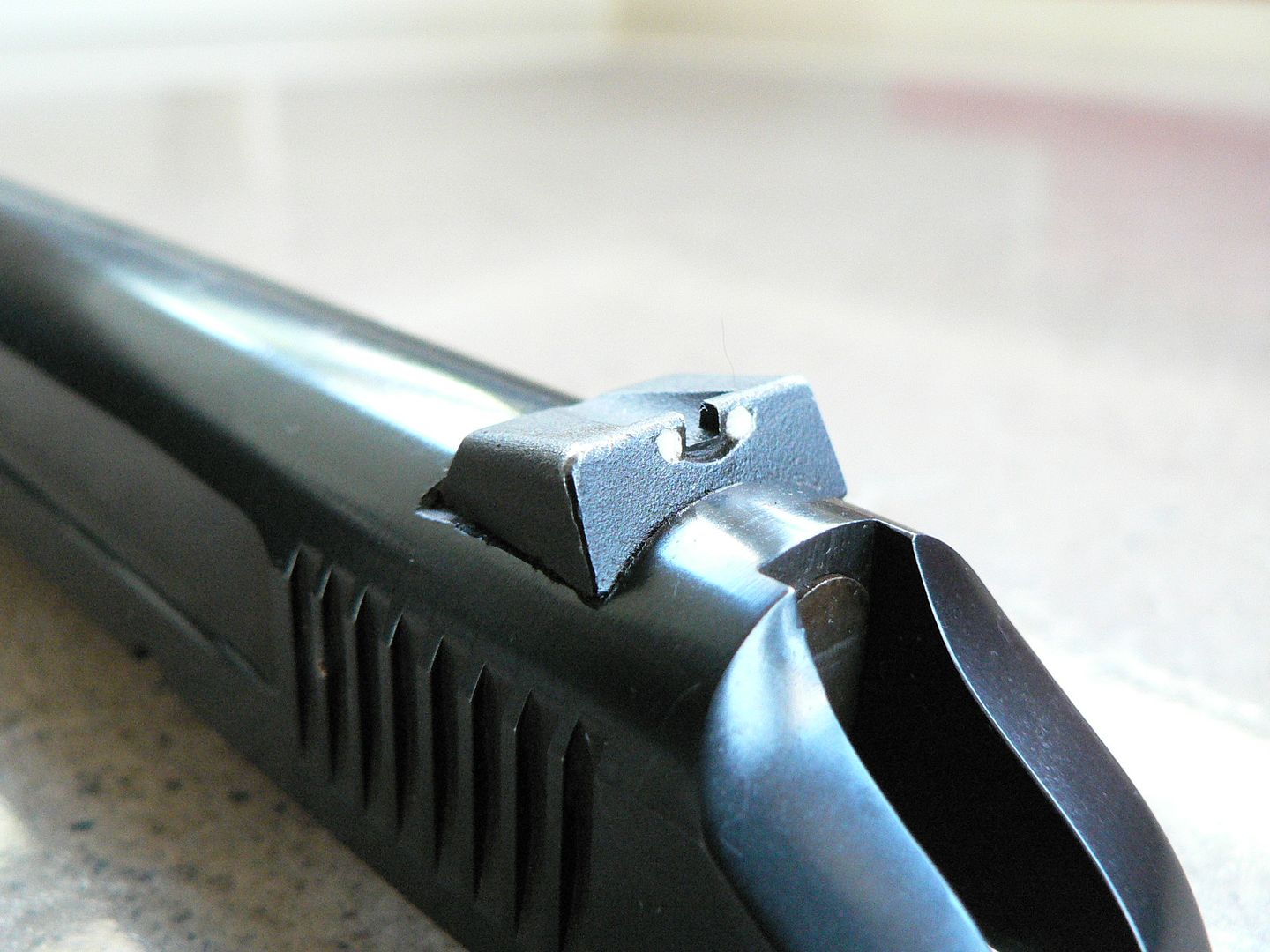 The front sight has orange paint applied: 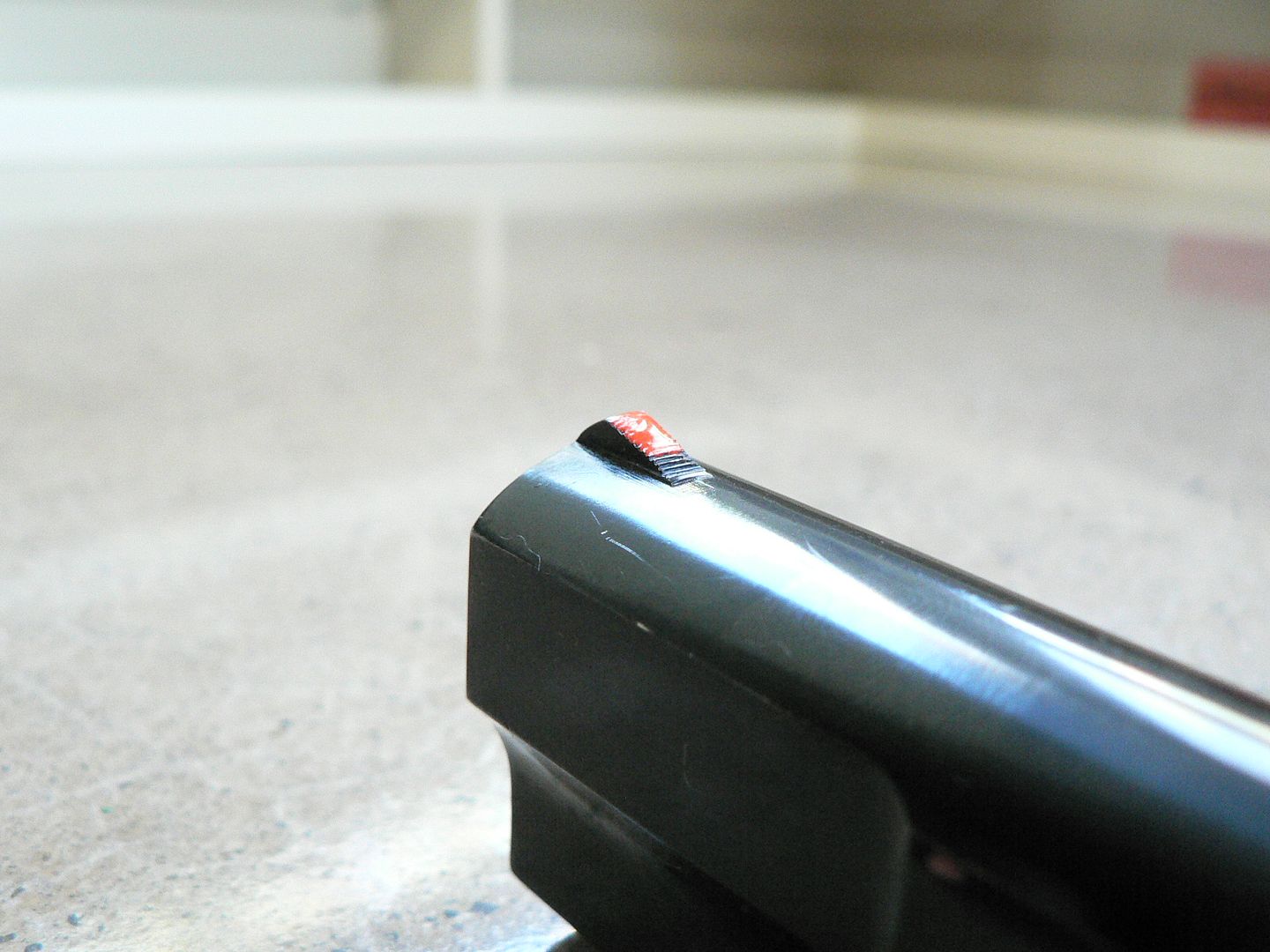 I'm almost 100% certain this was done by a previous owner. It would come off easy enough but I'll just leave it alone as it's not hurting anything and I'm never going to shoot this thing anyways. I'll leave that to the next owner. The "cradle": 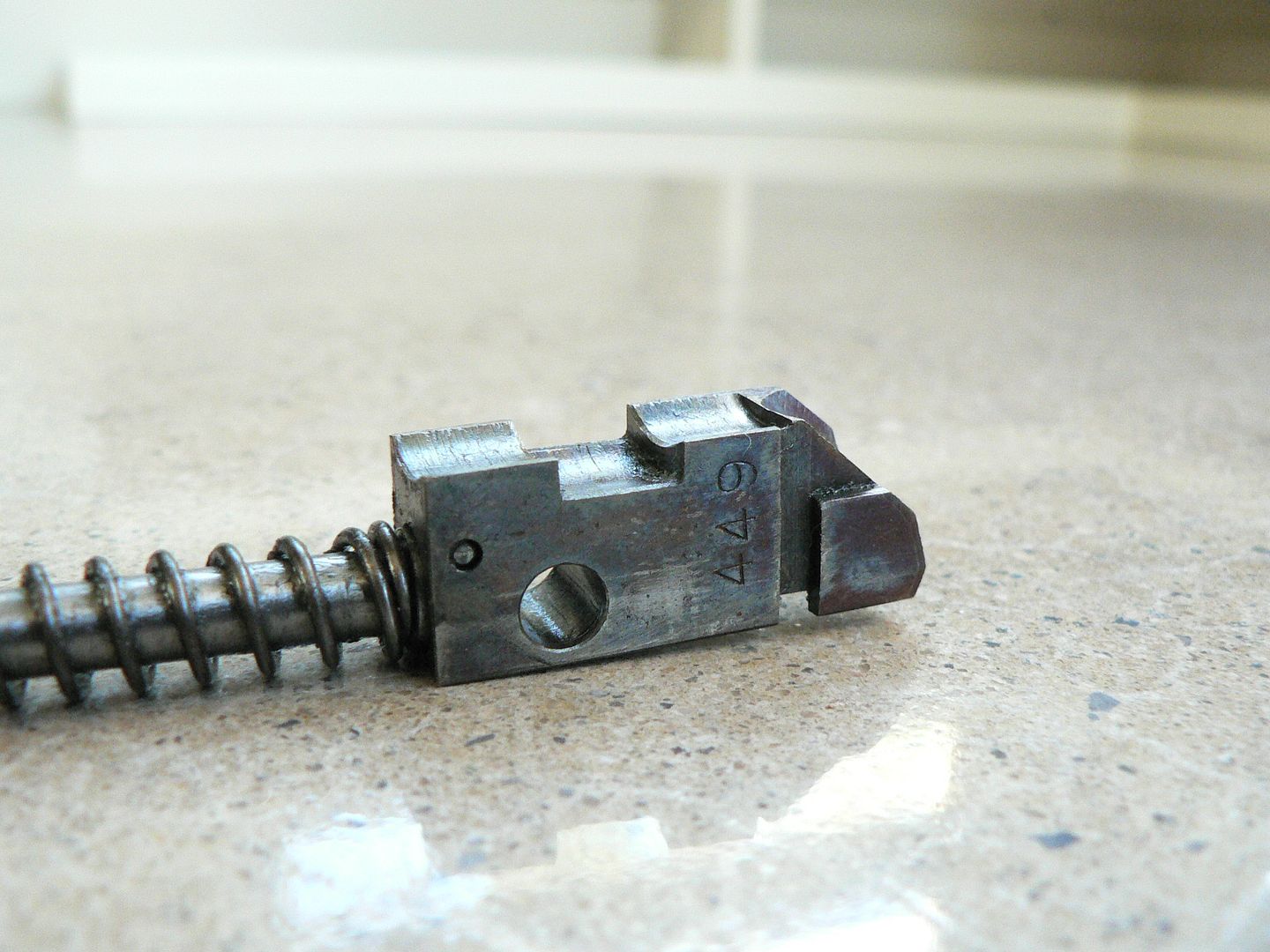 Just as we saw on the other P15, it's numbered to the pistol and, just as we saw on the other one, it's bare metal but took on a nice looking multi-colored appearance from the hardening process. It appears this part had someone's fingerprint on it when it was hardened and now it's preserved for posterity. Those crazy Frenchies:  A detail shot of the feed ramp: 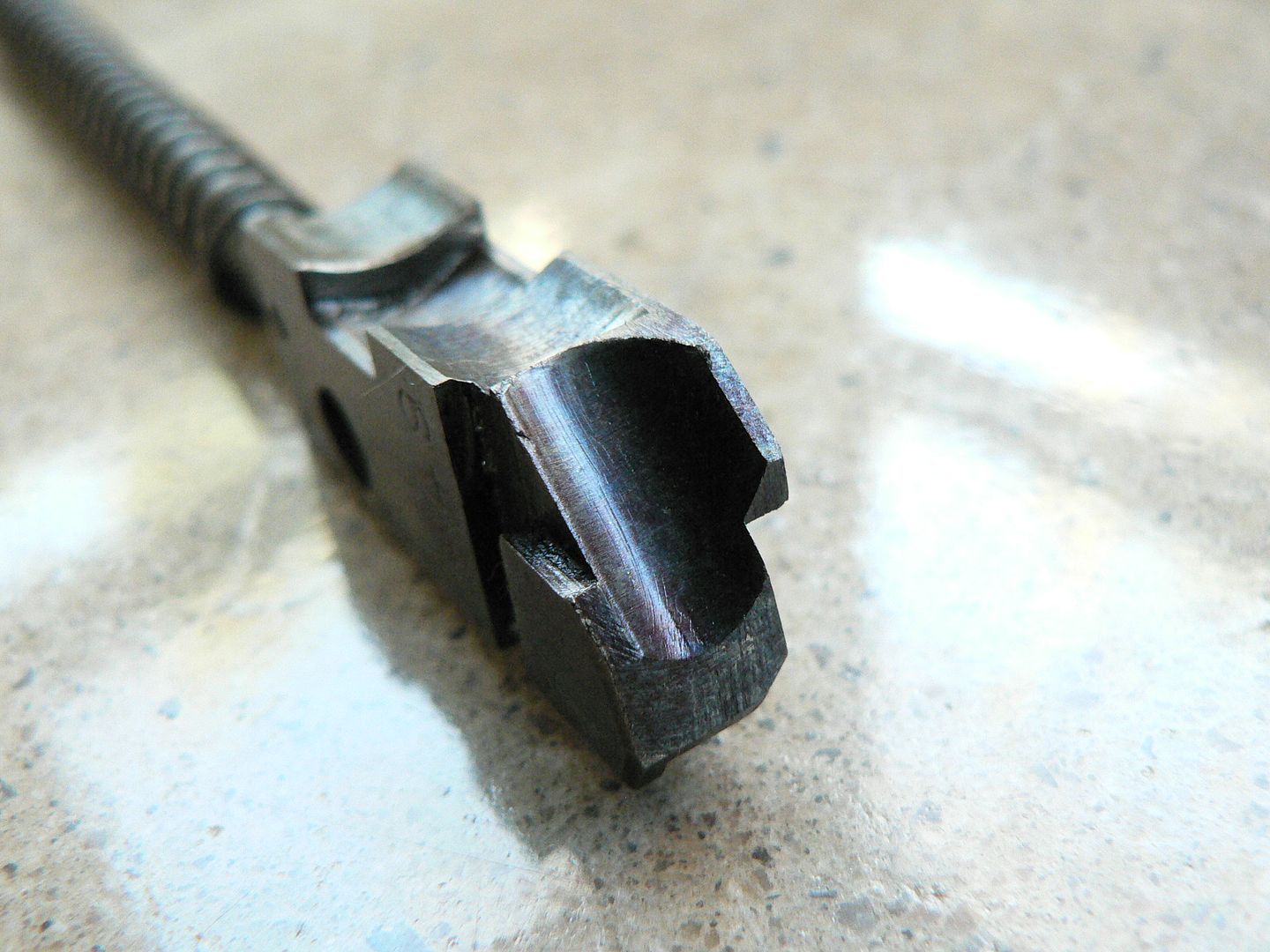 Last three digits of the serial number on the barrel lug: 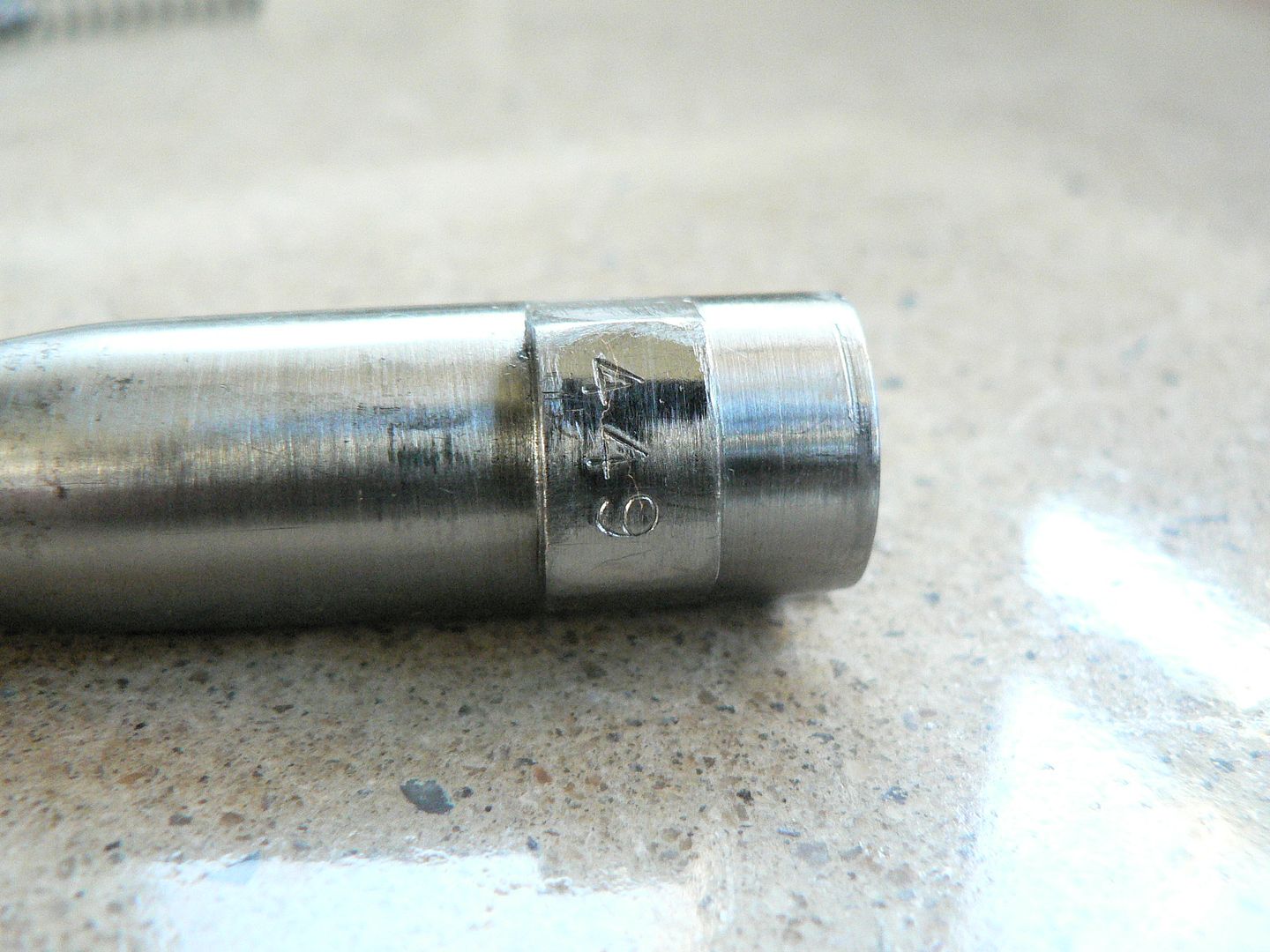 Other barrel markings: 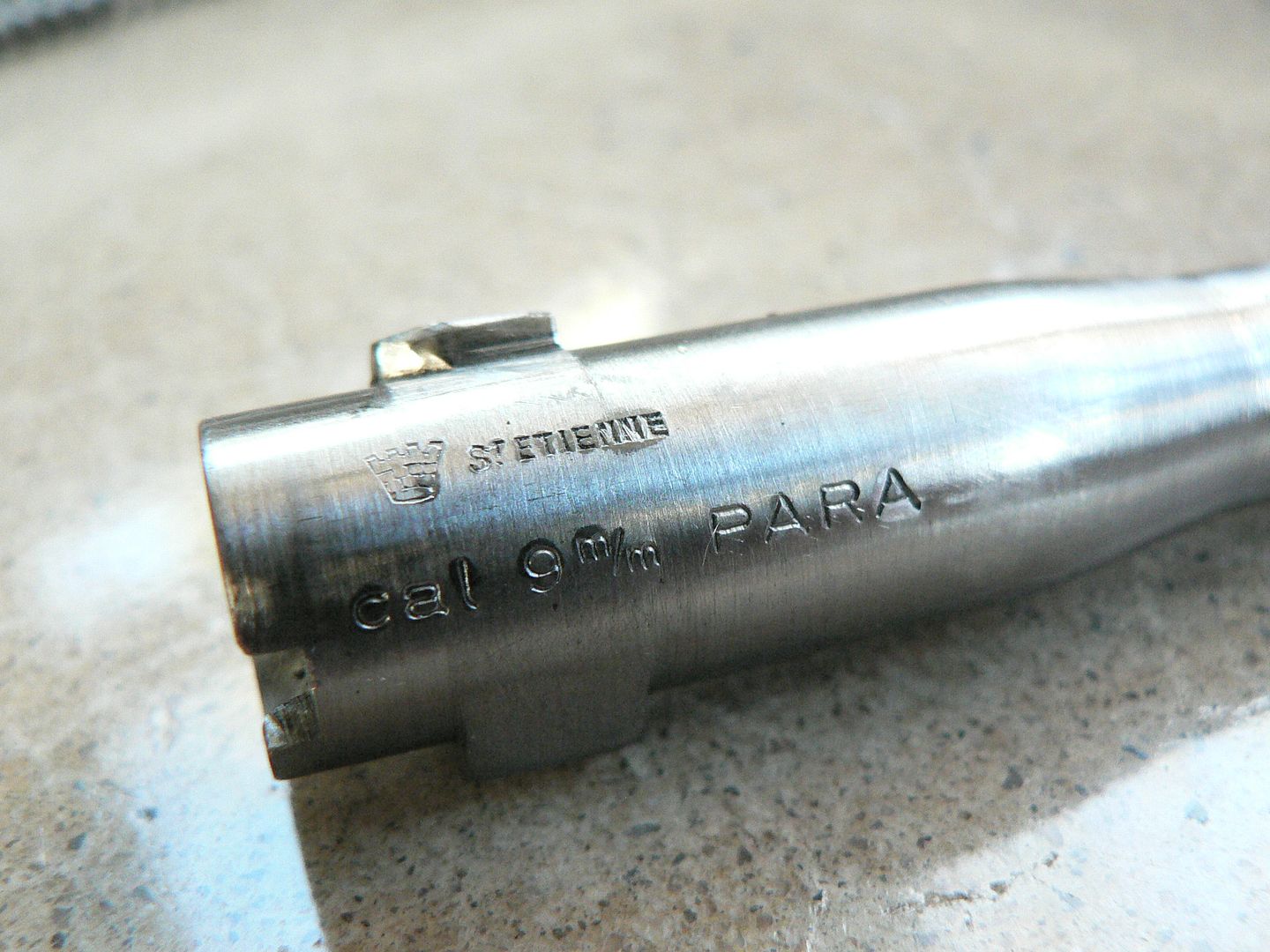 Unlike the barrel lug, these are visible through the ejection port when the pistol is assembled: The cam slot is roughly machined on this example just as it is on the earlier one: 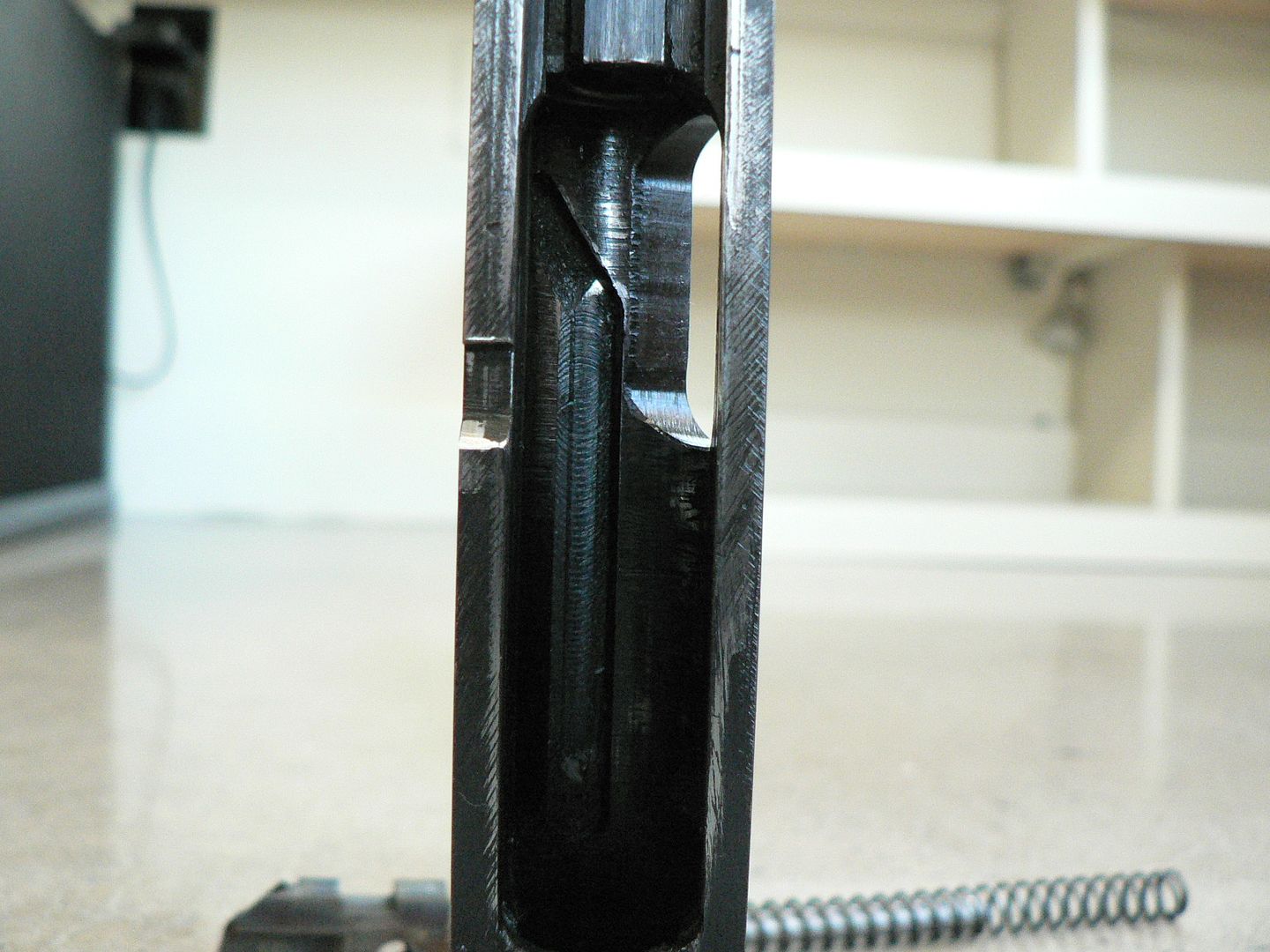 I assume they are ALL roughly machined. However, you can't feel it when you pull the slide to the rear. Mind you, it's not SIG 210 smooth by a long shot but it's pretty respectable nonetheless. The breech face: 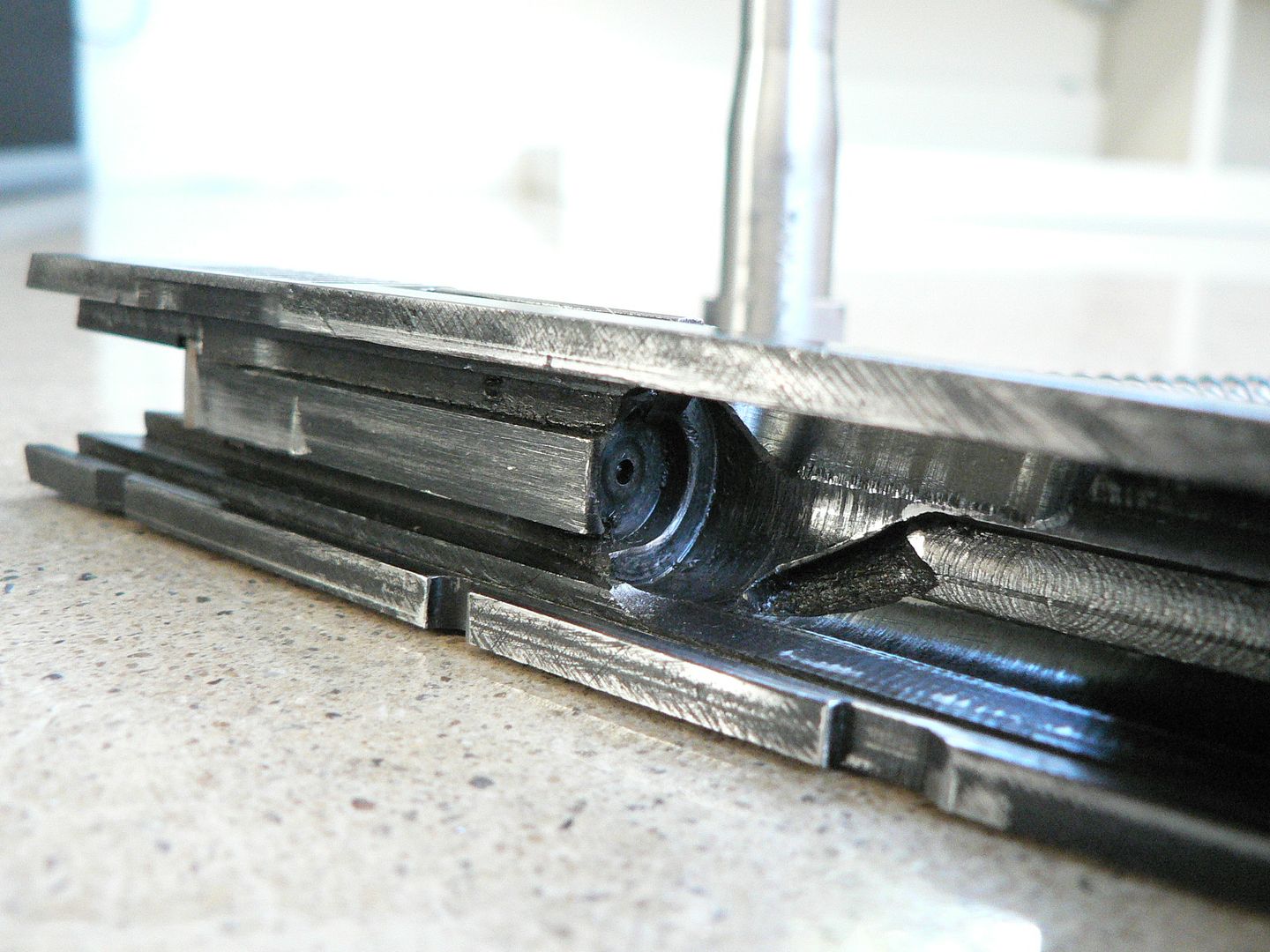 This photograph also illustrates the general rough machining seen throughout the interior of the slide. Again, it's not really evident in use but I'm spoiled by Swiss workmanship so I nitpick things like this. In the end, it's a tool, not a work of art. In contrast, the exterior surfaces are all very well machined as this view illustrates: 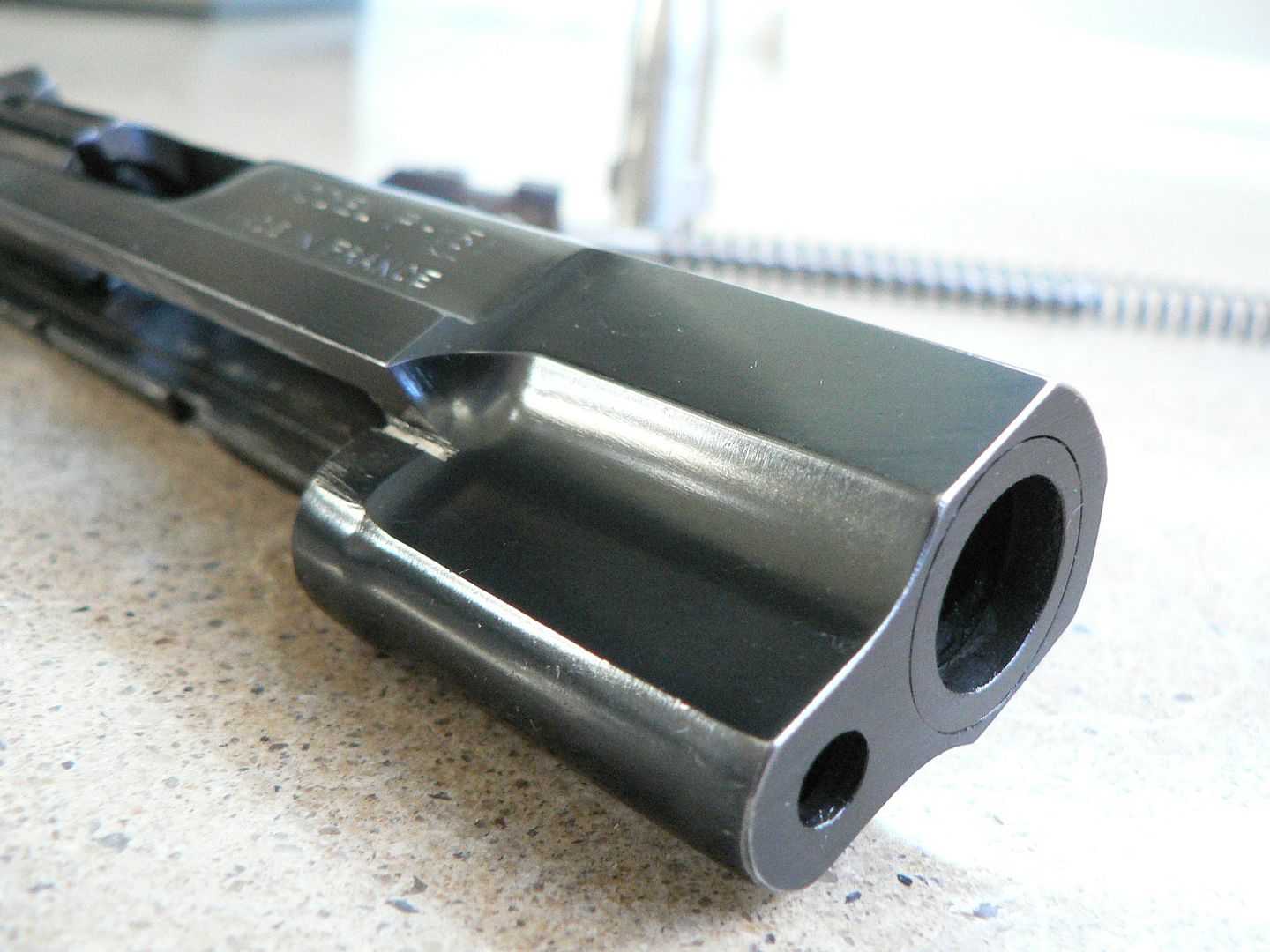 No, it's nowhere near pre-WWII smooth but it's pretty good by typical 1970's standards. Next, we come to the magazine. When I bought this pistol, it came with three magazines in a bag delineating them as aftermarket in addition to the one in the pistol. It is known that late MAB produced magazines had stamped floorplates instead of the machined floorplate seen on earlier pistols. BUT, everything I have read says that all magazines made by MAB had metal followers. This one has both a stamped floorplate and a plastic follower. Either the original was lost or MAB did produce some with plastic followers. If that is true, it's wouldn't be the first time I've learned that accepted information was wrong. Still, since this one is missing the manual and, I presume, the inspection certificate, I must concede that it's possible the original magazine has also been lost and replaced with an aftermarket one. However, the original packing bag IS present so it's also possible that, while the paperwork was stored separately from the pistol and subsequently lost, the rest of the package was kept together and has survived intact. I simply do not know. Whatever the case, the pictures below present the magazine that was in the pistol when I purchased it. I'll leave it to you to decide for yourself whether or not it's original. 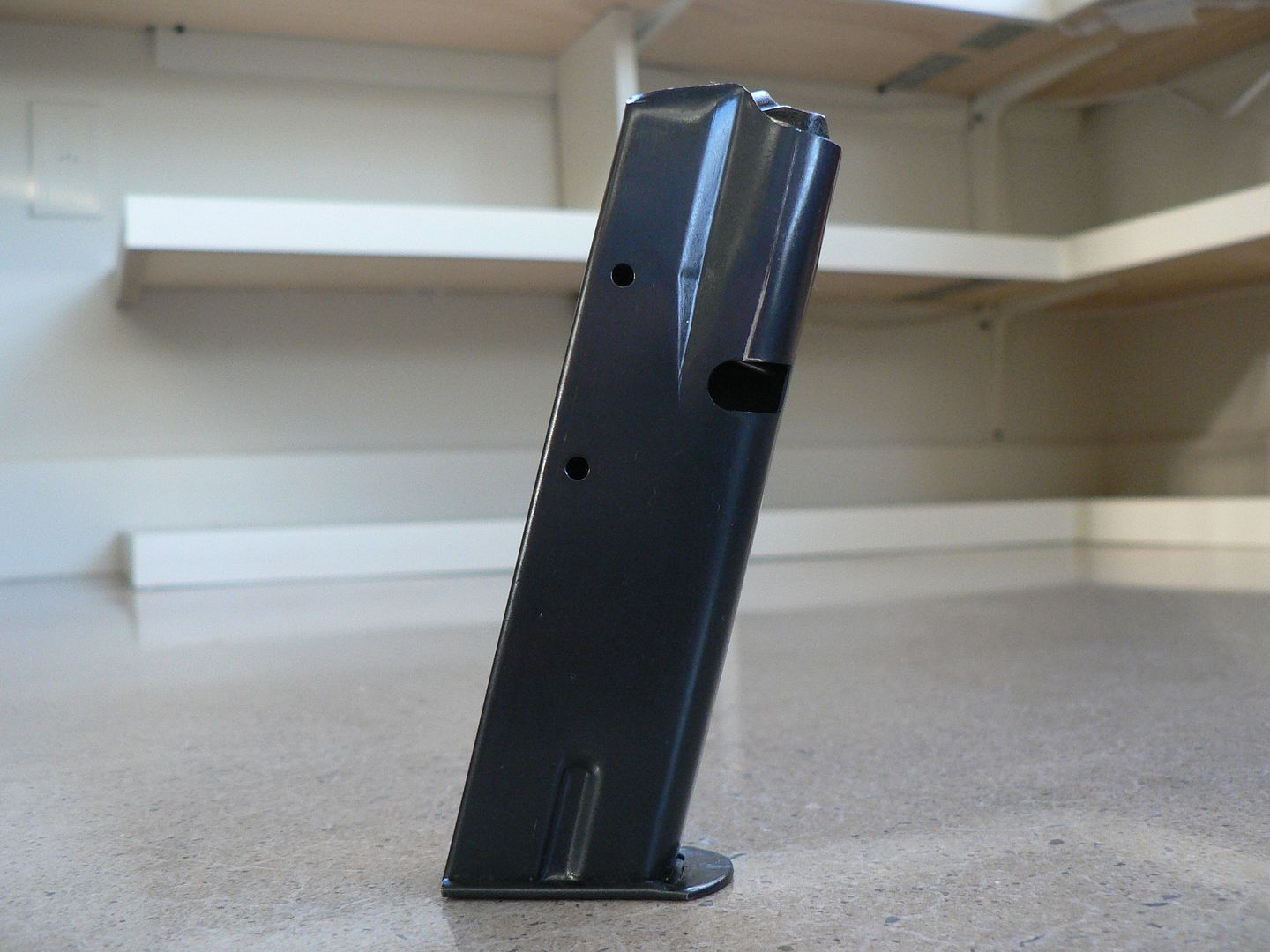 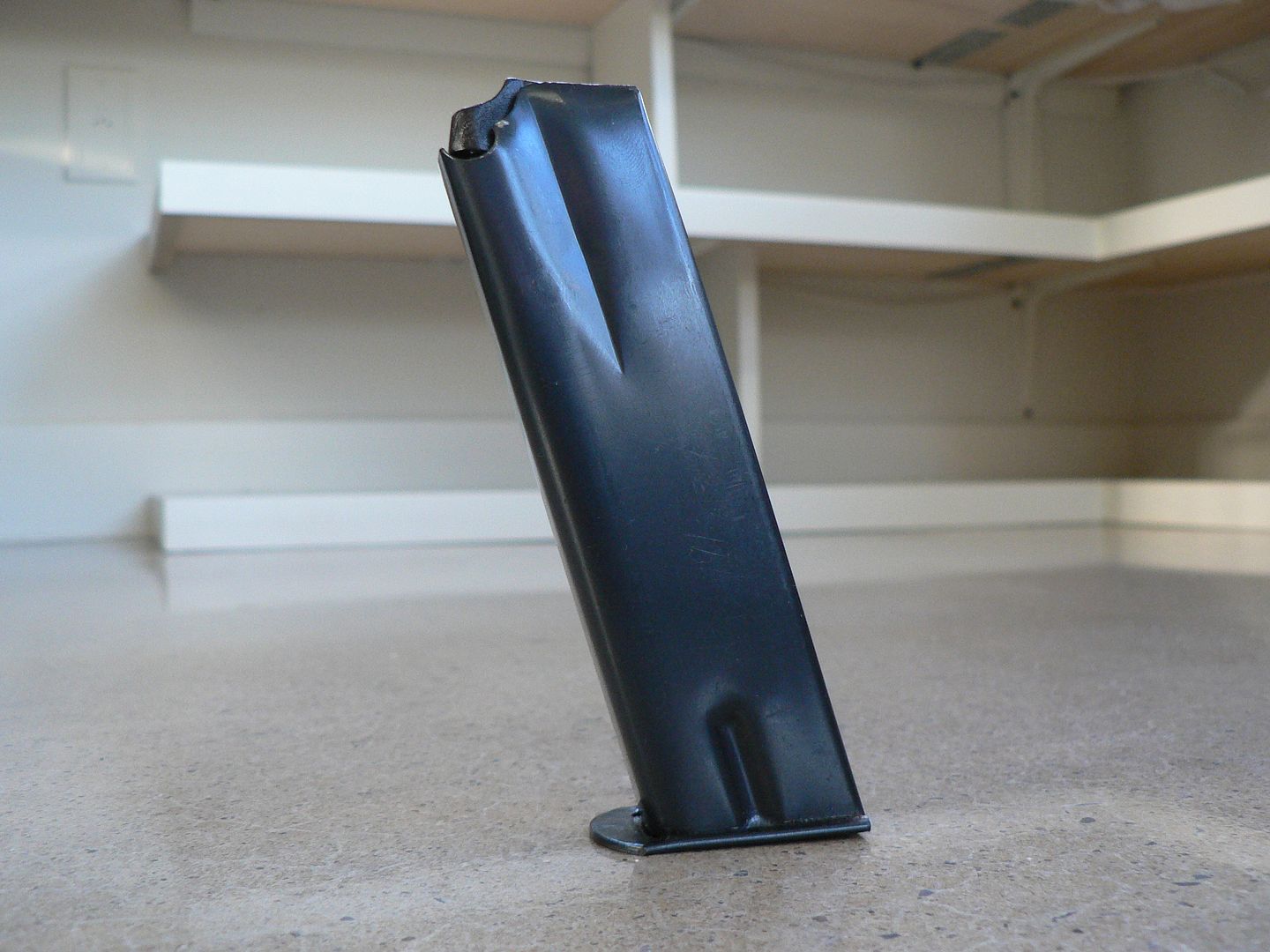 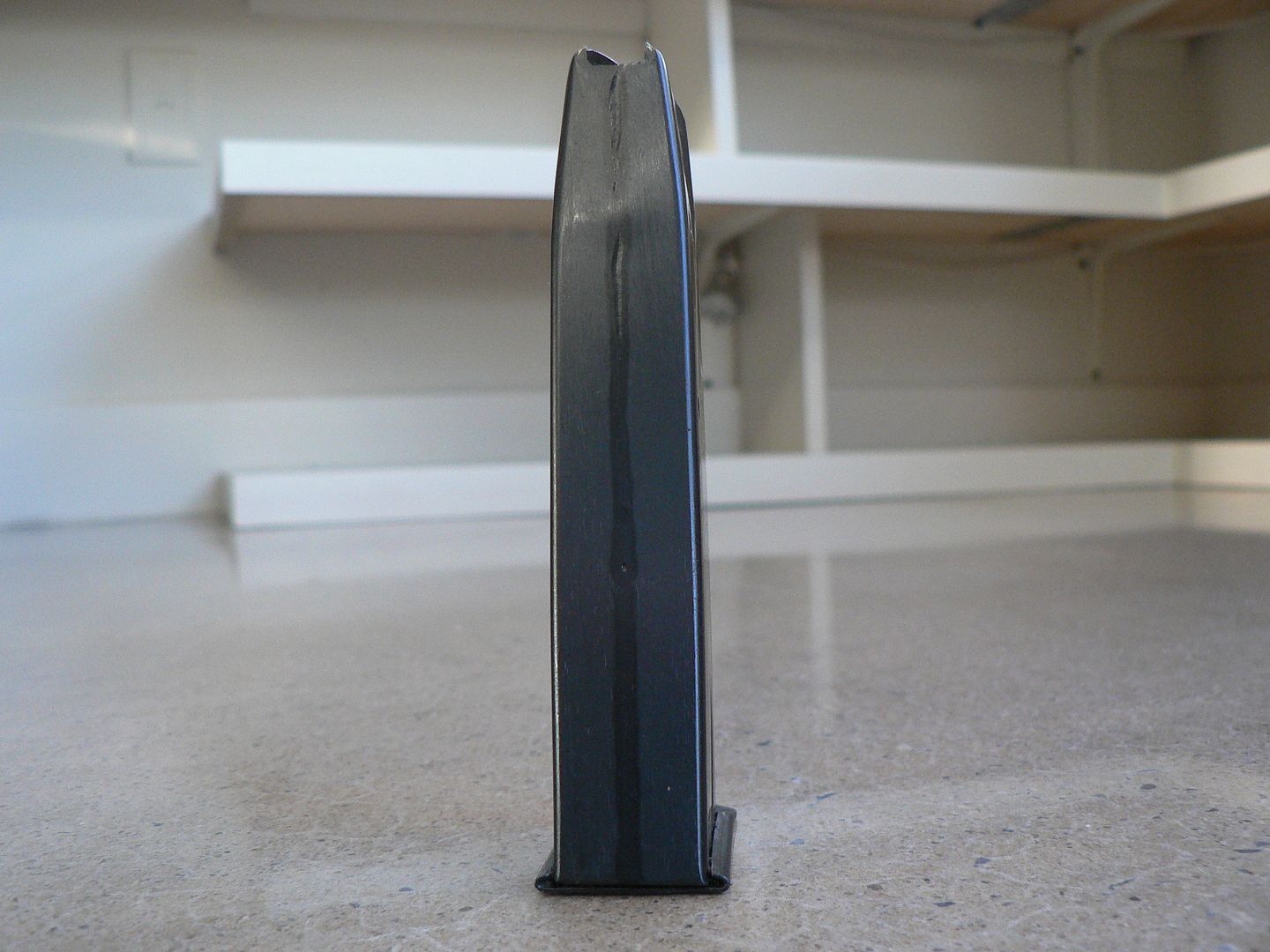 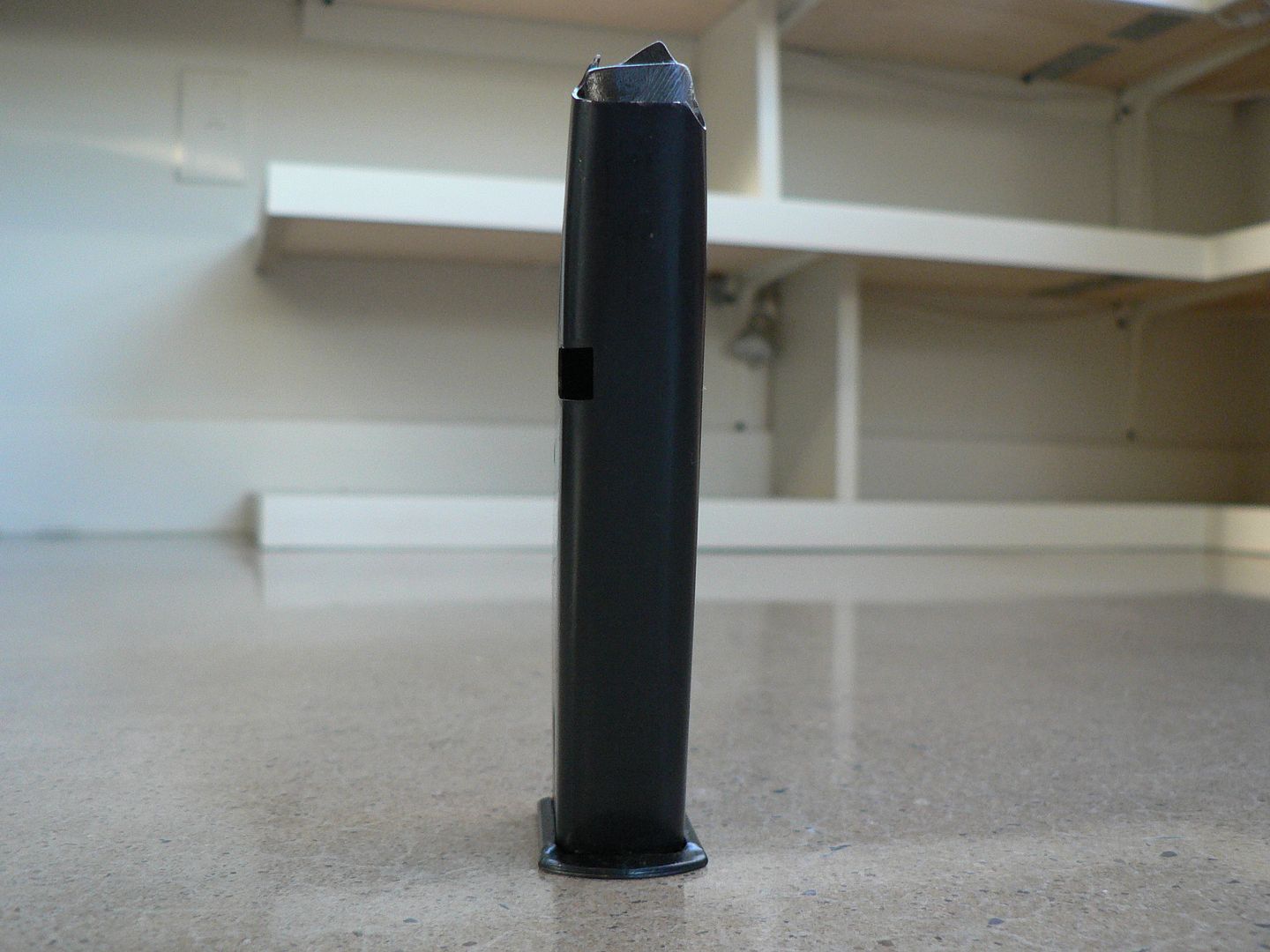  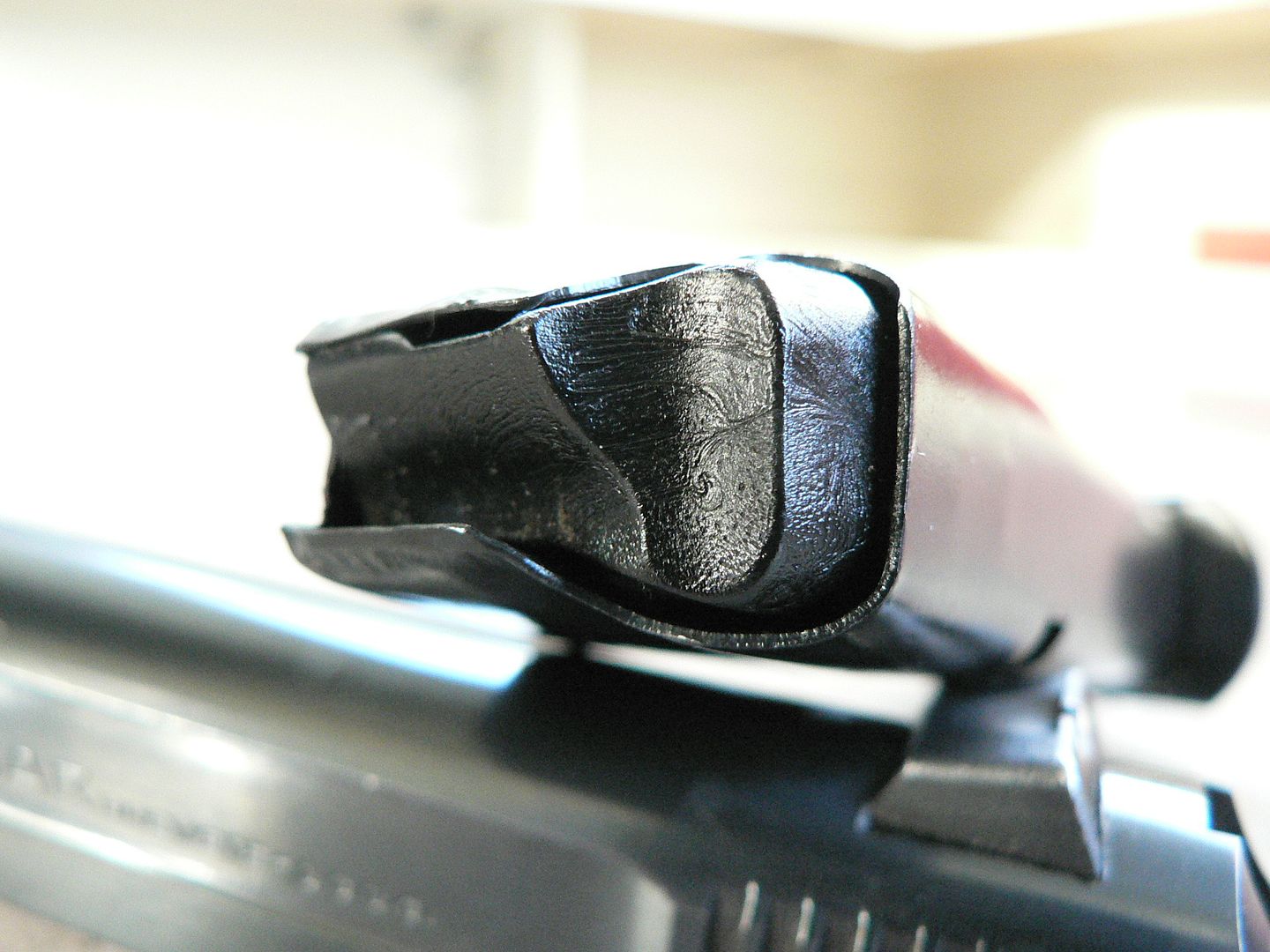 This example has without a doubt been fired but very little judging by the general lack of wear. The following picture shows a small mark on an otherwise pristine front strap: 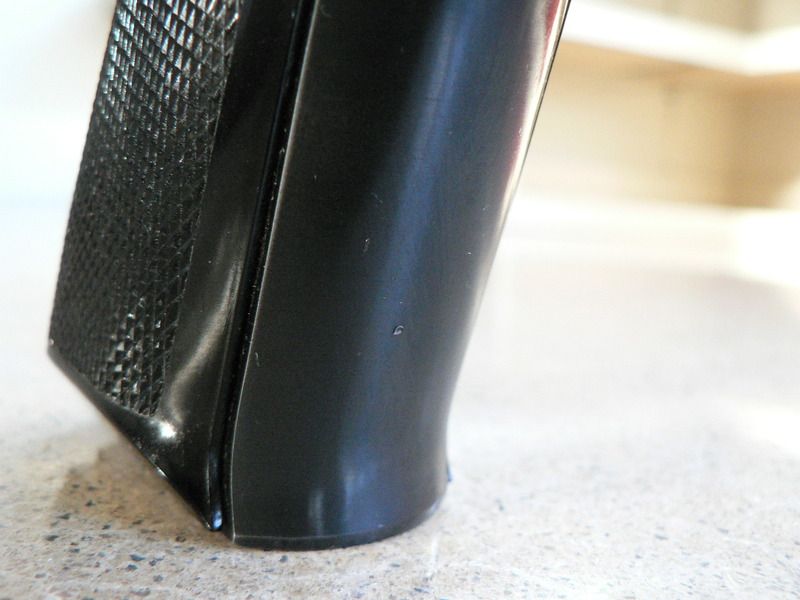 Whether this is a punch mark from a hardness test or an idiot mark, I cannot say. I present it here merely for research purposes. And that's it for this one. We'll finish up by looking at a few general illustrations of both pistols and boxes side by side. First is a left side view with the earlier example on the bottom:  And a right side view in the same orientation: 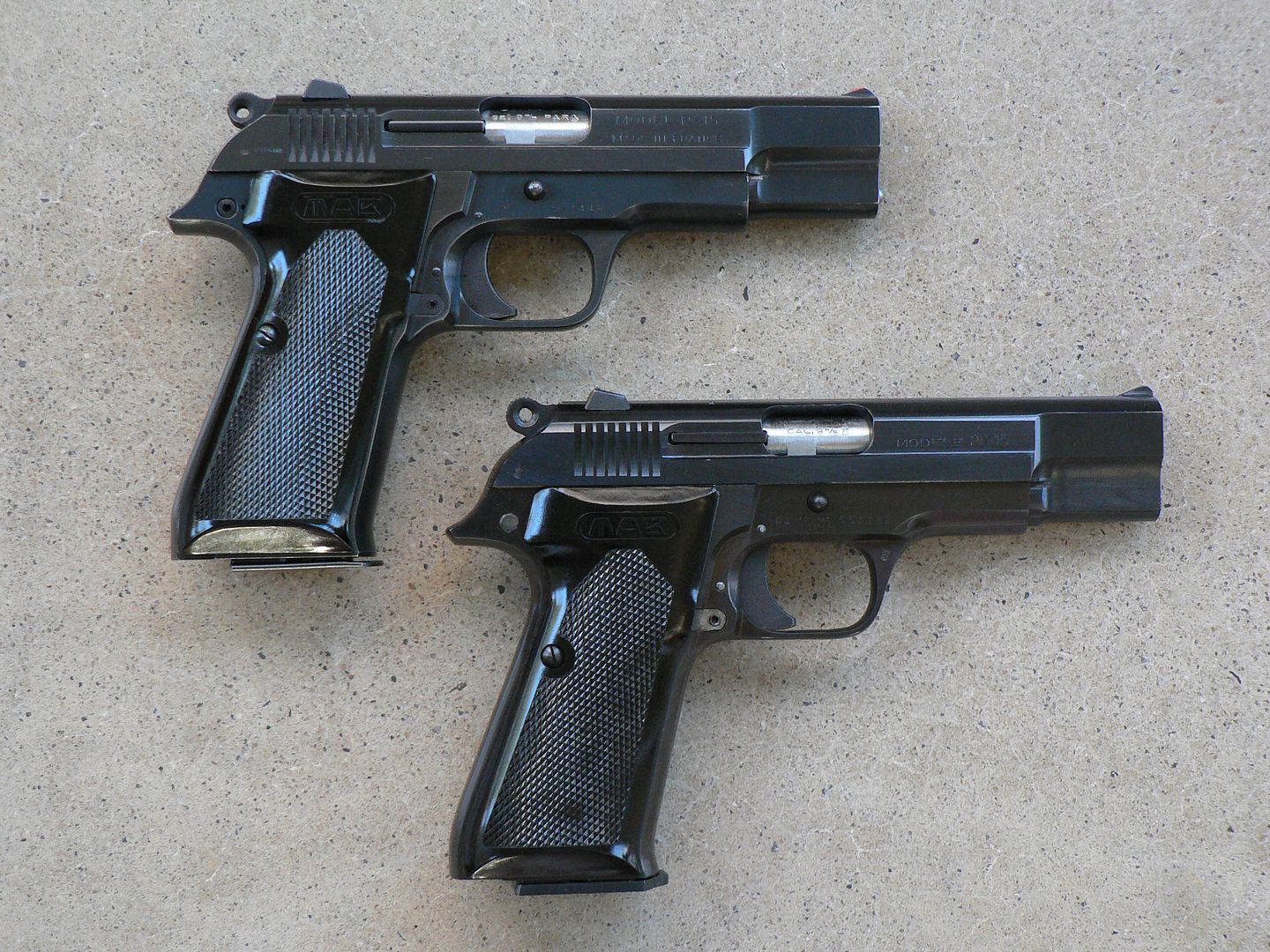 Personally, I think the later one has a more polished exterior but they are pretty close. But the HOWCO import mark and "St. Etienne" inspection stamps on the later one are a bit of a turn off to me so I prefer the earlier one. Regardless, considering the condition and age of these pistols, I count myself lucky to have them. I'll most likely sell the HOWCO one now that I've illustrated it but it doesn't cost me anything other than space to keep it so I'm in no great hurry to let it go. This last picture shows the two boxes side by side: 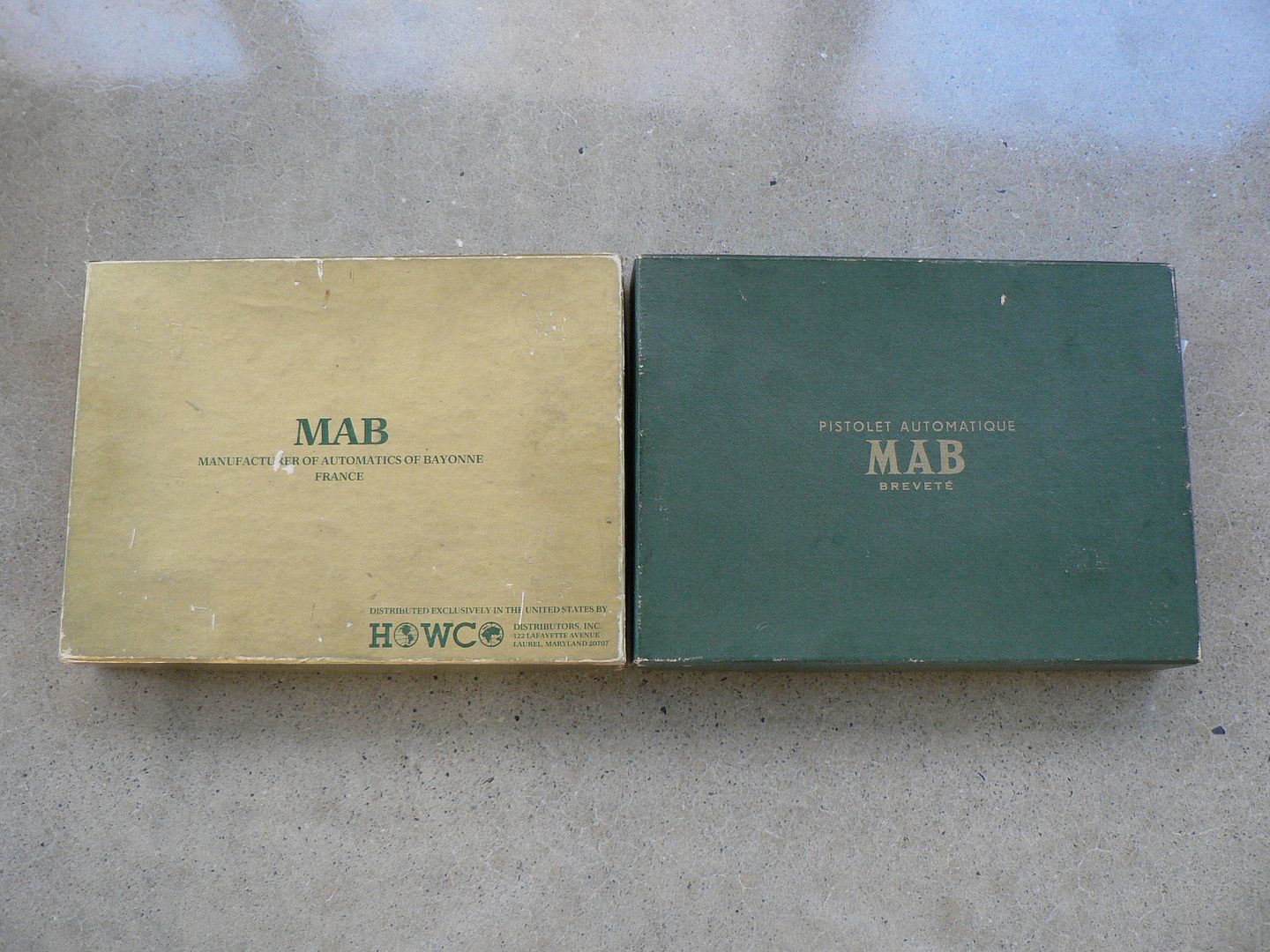 I like the understated green but the garish gold one is pure 70's. Both are well made though and I wish modern pistols came packaged like this instead of plastic fantastic boxes with el cheapo icky hinges that will eventually break. I store these Frenchies on a shelf in the house where they add to the décor. For me, hey harken back to an earlier time when things made more sense and I was younger. I get a nostalgic vibe from them and I like it. You younger folk will think I'm strange but you older fellows know where I'm coming from. OK, I'm rambling at this point so it's time to finish up. This concludes my 2 1/2 year old thread on the MAB P-15. In some ways, it's a modern pistol, built like a tank and ready with 15 rounds of 9mm goodness. In other ways, its a single action obsolete dinosaur with a goofy magazine safety that hinders more than it helps. Whichever view you take, modern or obsolete, you can't deny that it's the world's first mass produced 15 round handgun and it'll still get the job done 53 years after it first hit the market. If you ask me, for those reasons alone it deserves a respected place in firearm History....even if it is French. Sorry about that last comment. I can't help it; I'm of German descent. Vive le France!!! There...is that better?
__________________
I promise to be nice and play well with others |
|
|

|
 |
|
|